




English Mathematics
Environmental Science
General Knowledge

Academic Authors: Melanie Grobler, Chandani Goyal, Neena Aul, Animesh Mittal, Muskan Panjwani, Sneha Sharma, Anuj Gupta
Creative Directors: Bhavna Tripathi, Mangal Singh Rana, Satish
Book Production: Sanjay Kumar Goel, Tauheed Danish, Amisha Gupta
Project Lead: Chandani Goyal
VP, Learning: Abhishek Bhatnagar
All products and brand names used in this book are trademarks, registered trademarks or trade names of their respective owners.
© Uolo EdTech Private Limited
First impression 2025
This book is sold subject to the condition that it shall not by way of trade or otherwise, be lent, resold, hired out, or otherwise circulated without the publisher’s prior written consent in any form of binding or cover other than that in which it is published and without a similar condition including this condition being imposed on the subsequent purchaser and without limiting the rights under copyright reserved above, no part of this publication may be reproduced, stored in or introduced into a retrieval system, or transmitted in any form or by any means, electronic, mechanical, photocopying, recording or otherwise, without the prior written permission of both the copyright owner and the above-mentioned publisher of this book.
Book Title: Wisdom 2 Semester 2
ISBN: 978-81-980824-5-9
Published by Uolo EdTech Private Limited
Corporate Office Address: 85, Sector 44, Gurugram, Haryana 122003
CIN: U74999DL2017PTC322986
Illustrations and images: www.shutterstock.com, www.stock.adobe.com and www.freepik.com
All suggested use of the internet should be under adult supervision.
In this 21st–century world, just “knowing” is not enough. Our dynamic and ever-changing world demands “thinking” skills. Learners need to be able to not just consume knowledge but also acquire higher-order thinking skills in various domains—be it in language, mathematics or general awareness—to apply that knowledge. This is the spirit and the recommendation of the NEP (National Education Policy) 2020.
It is in this context that UOLO has designed WISDOM, a 21st–century product for primary grade learners (grades 1 to 5) that includes all curricular areas—English, Mathematics, Environmental Science and General Knowledge. WISDOM strongly aligns with NEP 2020 in terms of its design principles and fulfils all recommendations of the NCF (National Curriculum Framework) 2022–23.
English: This section not only focuses in listening, speaking, reading, writing, grammar and vocabulary, but also hones the ability to interpret, analyse and communicate confidently. The task-based approach and frequent opportunities for collaborative learning provided in this section encourage learners to express ethical views, interact constructively, solve problems creatively, apply their knowledge in new situations, and take responsibility for their own learning.
Mathematics: This section introduces mathematical concepts through real-life situations and storytelling, connecting them to children’s experiences and transitioning smoothly from the abstract to the concrete. Clear explanations and simple steps are provided for problem-solving. This section supports learners at all learning levels. It includes extensive practice aligned to the levels in Bloom’s Taxonomy—from basic practice questions to thought-provoking and higher order thinking questions.
Environmental Science: This section focuses on conceptual understanding, critical thinking, application, and problem-solving skills, making learning about environmental science highly relevant in the context of the 21st century. Each chapter is filled with vibrant illustrations, relatable examples, interactive activities, hands-on experiments and stimulating exercises. All of these not only promote awareness around environmental sustainability and the SDGs, but also make learning about the world around us a joyous experience.
General Knowledge: This section focuses on enabling the learners to be well-informed individuals so as to navigate through the complexities of the modern existence, make informed decisions, think critically and appreciate the world’s diversity. This section is crafted in keeping with the principles of NEP 2020, emphasizing the need to develop in learners the respect towards fundamental duties and constitutional values, generating awareness on one’s roles and responsibilities in a dynamic world, and fostering a sense of national pride and global citizenship. It offers an informative and enjoyable learning experience, incorporating clear explanations, captivating visuals and abundant questions for interactive classroom engagement.
The National Education Policy (NEP) 2020, introduced by the Government of India, represents a transformative shift in the country’s education system. It aims to create a more holistic, dynamic and multidisciplinary approach to education. NEP 2020 focuses on fostering conceptual understanding, skills, values, and competencies that align with the demands of the 21st–century, while also preserving India’s rich cultural heritage. UOLO is fully committed to actualising the vision of NEP 2020 by meticulously adhering to its outlined recommendations.









1. Focus on conceptual understanding
2. 21st-century skills values, and dispositions
3. Critical thinking and problem-solving
4. Application in real life
5. Holistic and integrated learning
6. Experiential learning
7. Enjoyable and engaging
8. Inquiry- and discovery-based approach
9. Technology-based solutions
10. Knowledge of India

Competency-based Education
NEP Pages 12, 17, and 22
Teaching and Learning Pedagogy
NEP Pages 3, 11, 12, and 27
National Pride
NEP Pages 15, 16, and 43
11. Assessment of core concepts and application skills Assessments
NEP Pages 12, 18, and 22

Intellectually stimulating questions designed to encourage deep, analytical, critical and evaluative thought processes
1 2 3 11
Talking books with animations, interactive quizzes for additional practice, and curated learning videos to make learning fun and engaging
1 2 3 7 9 11
Projects and activities are set in real-life context, like lab activities and community projects, to enable the development and practice of life skills 1 2 3 4 5 6 7 8 10 11
Examples from India’s unique culture and history have been linked to each topic to inculcate a sense of pride and love for the nation
5 7 10
Test papers designed to evaluate the understanding of core concepts and application of skills in learners
1 2 3 11
The National Education Policy (NEP) 2020 outlines essential skills, values, dispositions and learning approaches necessary for learners to thrive in the 21st century. Wisdom incorporates these elements throughout its content, tasks and projects. Referred to as ‘NEP Tags,’ they are defined as follows:

Bringing creativity and fun into learning by combining music, drama and art with other subjects

Using physical activities, sports and games to make learning active and fun

INTEGRATED
Cross-curricular linkages to make the learning experience more holistic, joyful and meaningful

Texts and tasks are rooted in the Indian context and culture to develop a sense of national pride

TEAMWORK
Embracing the spirit of mutual collaboration, communication and cooperation while working together or engaging in a guided conversation

SDG
Unwavering commitment to generating awareness of a green, peaceful, prosperous, equitable and inclusive world




Developing the skills to understand and manage emotions, build positive relationships and make responsible choices
HANDS-ON
Engaging actively in hands-on tasks to acquire knowledge and skills
HOTS

Encouraging higher-order skill such as analyzing, evaluating, problem-solving and fostering deep understanding
Generating awareness of a green, peaceful and prosperous world
21st SKILLS
Fostering skills and knowledge—such as critical thinking, communication, and digital literacy—that are essential for success in today’s rapidly changing world
Promoting practices that support physical, mental, and emotional well-being for a balanced and healthy lifestyle


Building a strong character, guiding towards ethical decision making, and developing respect, kindness, and a sense of responsibility
of our body through the blood. The lungs expand during inhalation.
Take a deep breath in and count to five. Now, breathe out slowly. Did you feel your lungs filling up with air?
Exhalation: When we breathe out, our lungs remove carbon dioxide from our body. Removing carbon dioxide is essential for our body to function properly. The lungs contract during exhalation.
Breathe out slowly and feel the air leaving your body. Can you feel it?


Did



important because they provide oxygen to our body and remove carbon dioxide. They help in the exchange of gases.
Find out the names of six body parts from the given word search.
Warm Up: A short and fun activity to assess the learners’ pre-knowledge and get them excited about the new topic
Inhalation and Exhalation
Inhalation: When we breathe in, our lungs take in air containing oxygen. This oxygen is then transported to the different parts of our body through the blood. The lungs expand during inhalation.

Take a deep breath in and count to five. Now, breathe out slowly. Did you feel your lungs filling up with air?
Exhalation: When we breathe out, our lungs remove carbon dioxide from our body. Removing carbon dioxide is essential for our body to function properly. The lungs contract during exhalation.
Have you ever thought about what would happen if our hearts a bit scary to think about because we need our hearts to stay heart by eating healthy food, exercising and feeling happy helps you think feeling good and taking care of our body helps us

The heart is reddish brown in colour. Its size is the same as that slightly towards the left side of our chest. If you put your hand feel your heart beating.

You Know?
Our body is like a big machine with many parts, each playing its own special role. In this chapter, let’s learn about different parts of our body and how they work.
Breathe out slowly and feel the air leaving your body. Can you feel it?
Elements: Interesting elements like Did You Know, Error Alert, Remember, and Think and Tell to keep the learners hooked


Our lungs can hold up to six
The heart pumps blood to all body parts. This blood supplies to other body parts. It also collects carbon dioxide and other different body parts.
Organs are different parts of the body that work together to help us stay healthy and perform all the activities we need to do. Organs are mainly classified into external and internal organs.

Have you ever thought about what would happen if our hearts stopped beating? It’s a bit scary to think about because we need our hearts to stay alive. Taking care of our heart by eating healthy food, exercising and feeling happy helps keep it strong. How do you think feeling good and taking care of our body helps us stay healthy?
Vocabulary: Meanings of difficult words
The heart is reddish brown in colour. Its size is the same as that of a fist. The heart is slightly towards the left side of our chest. If you put your hand on your chest, you can feel your heart beating.
transport: to carry from one place to another (here, oxygen) expand: increase in size contract: decrease in size fist: tightly-closed hand with fingers pointing inwards
The heart pumps blood to all body parts. This blood supplies oxygen and nutrients to other body parts. It also collects carbon dioxide and other waste materials from different body parts.
Chapter 1 • Parts of Our Body
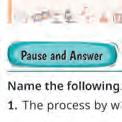
transport: to carry from one place to another (here,
expand: increase in
contract: decrease in size fist: tightly-closed hand with fingers pointing inwards
Check for Understanding: Short exercises between the chapter to pause and assess comprehension
6. Long-answer questions.
Long-answer questions.
A. Explain the journey of food from farms to our tables. List all the steps and the people involved.
7. Picture-based questions.
Visual Prompts: Special questions featuring visual stimuli to foster comprehension, interpretation and critical thinking
How do protein-rich foods help our bodies? Give two examples of protein-rich foods. 7. Picture-based questions. Identify the main nutrient that




HOTS: Intellectually stimulating questions designed for higher order thinking and analysis





21st–century Focus:


You’ve





Wonders of Bharat

Do and Learn
In Ayurveda, a traditional Indian system of health, the heart is thought to hold our emotions. Breathing exercises like Pranayama and simple meditation, both from India, are suggested to keep the heart healthy and lower stress. These practices also help with blood circulation and overall well-being. A girl practising

Collect pictures of different internal organs like the
and heart. Paste them in your scrapbook. Write about the



UEV25CB0401.indd 15

and functions of each organ below the respective images. Make your scrapbook look
Show it to your friends.
Word Splash

With the help of your teacher, find out about the a list of these clubs. Join any one club of your choice.
organs: different parts of the body that work together skull: the part of the head that protects our brain atria: the chambers located at the upper side of the heart
National Pride: Fascinating insights into India’s rich culture and history
Wonders of Bharat In Ayurveda, a traditional Indian system of health, the heart is thought to hold our emotions. Breathing exercises like Pranayama and simple meditation, both from India, are suggested to keep the heart healthy and lower stress. These practices also help with blood circulation and overall
ventricles: the chambers located at the lower side of the heart blood vessels: fine tubes that help in circulation of blood arteries: red-coloured blood vessels that carry oxygenated blood to all body parts veins: blue-coloured blood vessels that carry deoxygenated blood from all body parts

oesophagus: the pipe through which food passes from mouth to stomach

Word Splash
organs: different parts of the body that work together the part of the head that protects our
Explore More!
Know more about internal organs.
the chambers located at the
Technology Integration: Short exploratory videos to find out more about the topic
side of the
ventricles: the chambers located at the lower
of the
blood vessels: fine tubes that help in circulation of blood arteries: red-coloured blood vessels that carry oxygenated blood to all body parts veins: blue-coloured blood vessels that carry deoxygenated blood from all body parts
oesophagus: the pipe through which food passes from mouth to stomach

Explore More!
Know more about internal organs.
7 6
Resident Welfare Association (RWA) is a committee building. The members of the RWA are elected by the welfare of the people of their colony or building. as the President of the RWA.
Points to Remember: Summary of the chapter
Points to Remember
We can see and touch external organs from the outside, but we can’t see or touch internal organs because they’re inside our body.
• The brain helps us think, learn and feel emotions.
• We can see and touch external organs from the outside, but we can’t see or touch internal organs because they’re inside our body.
• The lungs help us breathe in oxygen and breathe out carbon dioxide.
• The heart pumps blood to all parts of our body.
• The brain helps us think, learn and feel emotions.
• The stomach helps digest the food we eat.



• The lungs help us breathe in oxygen and breathe out carbon dioxide.
• The heart pumps blood to all parts of our body.
• The liver cleans our blood and helps us digest fats.
• The stomach helps digest the food we eat.
• The kidneys filter waste from our blood and produce urine.
• The liver cleans our blood and helps us digest fats.
Chapter Checkup: Chapter-end practice exercises aligned to different levels of Bloom’s Taxonomy
• The kidneys filter waste from our blood and produce urine.
Chapter Checkup
The RWA performs many functions. Some of them
Chapter Checkup
1. Tick ( ) the correct answer.
A. What protects the brain? Skull Heart Liver
1. Tick ( ) the correct answer.
A. What protects the brain? Skull Heart Liver
B. Which organ pumps blood throughout our body? Lungs Heart Kidneys
Making sure that necessities like roads, drainage, working
B. Which organ pumps blood throughout our body? Lungs Heart Kidneys
C. Which organ helps us to breathe? Lungs Stomach Brain





C. Which organ helps us to breathe? Stomach Brain
D. Which blood vessels carry oxygenated blood to different body parts? Ventricles Arteries Veins
2. Fill in the blanks.
D. Which blood vessels carry oxygenated blood to different body parts? Arteries Veins

2. Keeping the colony clean and ensuring the 3. Making proper safety arrangements for the 4. Organising events to celebrate festivals
liver atrium ventricles kidneys
A. The upper chambers of the heart are called
2. Fill in the blanks. liver atrium ventricles kidneys
B. The lower chambers of the heart are called
Experiential Learning: Multidisciplinary, holistic, and fun activities / projects to understand the concept better
A. The upper chambers of the heart are called
C. helps us in the digestion of fats.
D. filter our blood to remove waste and extra water.
B. The lower chambers of the heart are called C. helps us in the digestion of fats.
3. Write True or False.
D. filter our blood to remove waste and extra water.
A. Brain and lungs are external organs.
3. Write True or False.
B. The heart has only two chambers.
A. Brain and lungs are external organs.
B. The heart has only two chambers.
NEP Tags: To show alignment with NEP skills and
Functions of RWA
The RWA performs many functions. Some of them are as
2. Keeping the colony clean and ensuring the disposal of garbage properly.
3. Making proper safety arrangements for the residents.
4. Organising events to celebrate festivals together.
5. Spreading awareness about common issues like cleanliness, health, safety, etc.
6. Solving small disputes
7. Protecting the rights of all residents and treating them equally.


committee:





committee: a group of people who have been chosen to do elected: chosen through vote dispute: fight


Story writing
Rhyme time
Listen and respond
Using a, an and the Position words–place and time
Words with similar meaning
Words with br/dr soundbr oom, dr eam
Homophones
Factual questions Identifying key events Comparing and contrasting Inferring character’s thoughts
Graphic Story
7. Imagination and Fantasy Roopa and the Bloop
Complete the comic strip.
Listen and fill in My routine
Using comma to make Lists The simple present The present continuous
Vocabulary from text
Healthy habit related vocabulary
Words with fr/gr soundfr og, gr ass
Factual questions Visualization Making predictions
Story
8. Health and Well-Being King Munch and Mr Wise
Complete the story
Ask and answer questions
Listen and sequence
Sentences and questions (do, does, is, are, am)
Joining words–and, or, but
Rhyming words
Factual questions Identifying problems and solutions Poetry appreciation– completing poem
Poem
Animal sound
Animal movement
Words with ou soundr ou nd
Factual questions Identifying characters’ thoughts and actions Making connections
Story
Animal body parts
Tell a tale Informal letter
Past tense– using was and were Story chain
Story vocabulary
The Hard and Soft th sound
Factual questions Making connections Poetry appreciation– completing poem
Poem
Factual questions Ordering Making predictions and inferences Making connections
Story
9. Health and Well-Being Yummy Food, Healthy Food
Project 3: Living a Healthy Life
10. Pets Their Fluffy Best Friend
11. Pets I Have Many Pets
12. Folktales The Turtle Who Could Not Stop Talking



It is your birthday. How would you like to decorate the room? Imagine the things you would put in the room. Draw and colour them. Get Set
Roopa has a friend, Bloop, whom she loves a lot. What is so special about their friendship? What do they do when they are together? Let us read the story to find out.


Let’s Read

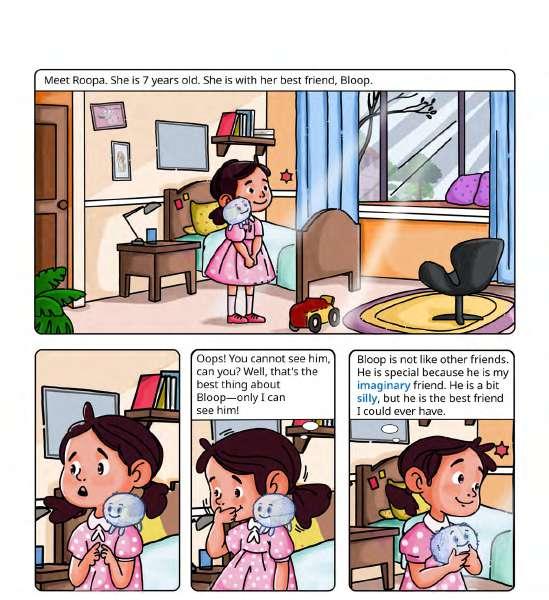
imaginary: something that you think of but is not real silly: funny and playful
Think and Tell
The Bloop is not clear. Do you think he is Roopa’s real friend or does she imagine him?
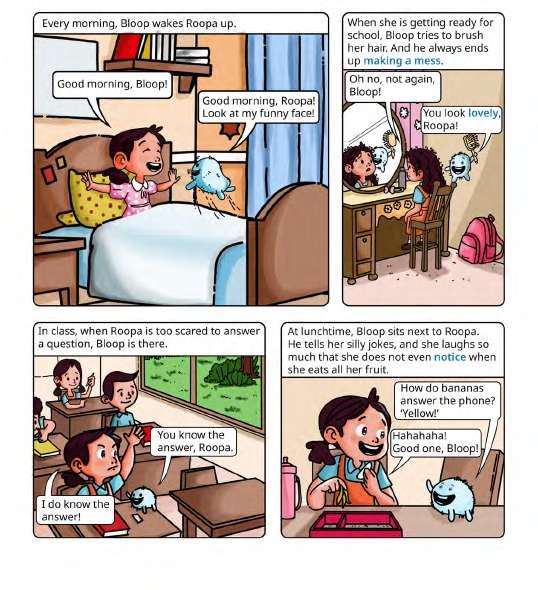
making a mess: making something very untidy
lovely: nice and beautiful
notice: see something and pay attention to it
Can Roopa’s parents also see Bloop? Why?

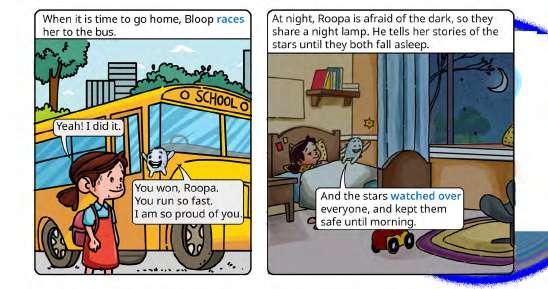
How do you think Roopa feels when Bloop says he is proud of her?
races: runs to see who comes first watches over: protects and keeps safe



Listen to all the keywords here.
1. Tick () the sentences that are right, and cross () the sentences that are wrong.
a Roopa is Bloop’s imaginary friend.
b Bloop helps Roopa brush her hair.
c In class, Bloop scares Roopa.
d Roopa is afraid of the dark.
2. Choose what happens next in the story.
a Roopa wakes up in the morning, and Bloop makes funny faces at her. i Roopa stays in bed. ii Roopa gets ready for school.
b Roopa and Bloop are in class, and Bloop helps Roopa.
i Roopa raises her hand. ii Roopa stays quiet.
c Roopa and Bloop race to the bus.
i Roopa wins. ii Bloop wins.
3. Answer the questions in one to two sentences.
a Why is Bloop special?
b How does Roopa feel in the morning when Bloop wakes her up?
c How does Bloop try to help Roopa when she is getting ready for school?
d How does Bloop help Roopa finish her fruit?



1. Bloop is Roopa’s imaginary friend.
a How do you think Bloop is the same as our human friends? You can use these words in your answer: kind, fun and play.
b How do you think Bloop is different from our human friends? You can use these words in your answer: imaginary and pretend.
2. Tick () what Roopa must be thinking.
a Bloop asks to comb Roopa’s hair.
Oh no! He will mess it up again.
Yes, Bloop! Please help me.


b Bloop shares jokes with Roopa.
Oh Bloop, you are so funny!
Bloop, let me finish my food.
c Bloop says, ‘I am so proud of you, Roopa.’
I am so tired.
That is so kind of you, Bloop.


Big Idea



Imagine that you have an imaginary friend. Draw what it would look like.
What name would you give it?
What would you and your imaginary friend do?


Pronounce Well
Listen to the words here.
Read the words aloud. bring broom drum drive brick brook draw drink break brown dress dry
Read the words in the box. Fill in the blanks with the correct words in the box.
Hint Box:
a Roopa likes to eat bread and jam.
b Bloop says, ‘Wear your pink .’
c Roopa must her wet clothes.
d Bloop helps Roopa sweep with a .
e I my teeth twice a day.

Vocabulary

1. Sometimes different words have similar meanings. Match the words that have almost the same meaning.






Homophones are words that have the same sound but different spelling. For example: I have one cookie. I have won the match.
2. Complete the sentences with the similar-sounding words in the box.
Hint Box: bare/bear sun/son flower/flour sea/see
a Grandmother always makes a delicious cake with . She decorates it with a beautiful .
b Nishant is Raghav ’s . He likes to play in the .
c Roopa and her family are at the . Her parents can her play in the sand.
d The cupboard was , so Mama had to go and look for honey.


Go Grammar flour flower
Using A, An and The
• We use a or an before words that name one thing or person. These words do not say which exact thing.
For example: Bloop and Roopa race to a bus. (We are not saying which bus.) Roopa ate an ice cream. (We are not saying which ice cream.)
• We use an before words that start with the vowel sounds a, e, i, o, u.
For example: She is eating an apple.
• We use the when we know what we are talking about or when we have already used the naming word.
For example:
Bloop races her to the bus. (Here, we are saying which bus: Roopa’s school bus and not just any bus.)
Roopa ate the chocolate ice cream. (chocolate says which ice cream.) She is eating the red apple from her tiffin box. (Here, we are saying which apple.)
1. Fill in the blanks with the correct article, a or an.
a Bloop is imaginary friend.
b Roopa eats apple.
c Bloop always makes mess.
d Is Bloop elephant?
2. Roopa is telling her friend about a dream. Look at the picture and use the articles, a, an and the, in the sentences. an
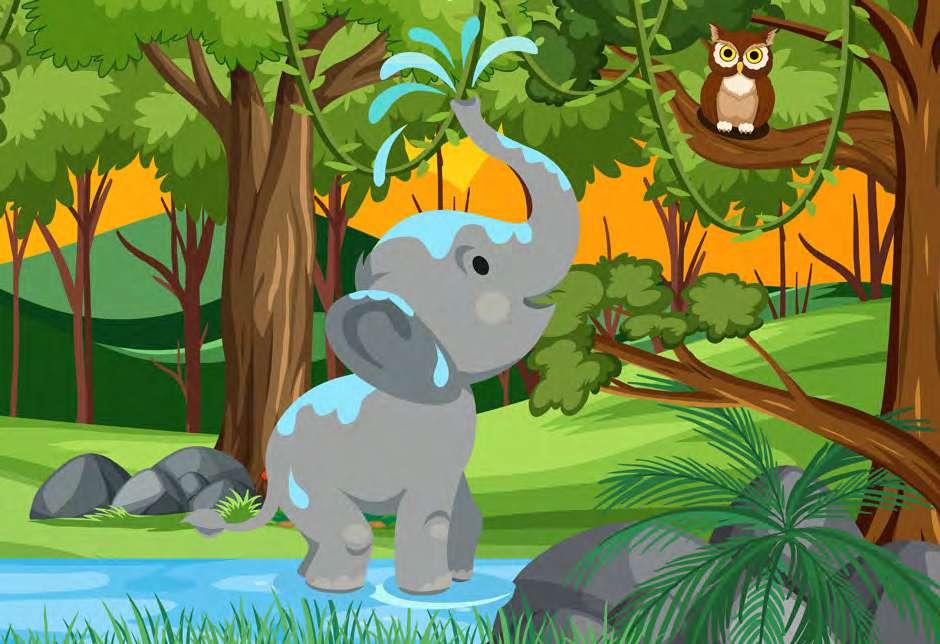

I saw magical forest in my dream. There was owl in magical forest. owl was friends with elephant. elephant had long trunk. Its trunk was like magic wand.
These words tell us where something is— behind, under, above, between or in front of. For example:
The cat is behind the box.
Remember!
Position words help us understand where things are. They tell us the position or place.
The cat is above the box.
The cat is between the boxes.
The cat is under the box.
The cat is in front of the box.
3. Fill in the blanks with position words of place.
Hint Box: behind between under in front of above


a The fox is the tree.
b The fox is the two bushes. under




c The fox is the bush.
d The fox is jumping the bush.




e The fox is hiding the bush.


These words tell us when something happens—one, at and in.
AtWe use at for an exact time.Roopa goes to school at 7:30 a.m.

OnWe use on for days or dates.Roopa does not go to school on Sundays.

My birthday is on 7 June.
InWe use in for longer periods of time, like months or years.
We also use in for broad times in a day.
Roopa is going on a school trip in May.
Bloop wakes Roopa in the morning.
4. Fill in the blanks with the correct position words of time (on/at/in).
a Roopa and Bloop decided to go for a picnic 8 May.
b They went for a picnic Saturday.
c They left home 6 a.m.
d Roopa promised Bloop to go again December. on



Listen Well
Listen to the text here.
Listen carefully to the text. Choose the correct answers.
a Who told Lily the secrets of the night sky?
i Emy ii Sparky
b What are the stars for the fairies?
i lamps ii bulbs
c When will the friends visit Sparky?
i next week ii the next day
d What does Emy want to ask a question about?
i aliens ii shooting stars


Speak Well

Practise speaking here.
Recite your favourite rhyme with expression and hand movements in class. Here is a list to help you.
• Twinkle, twinkle, little star…
• Baa baa black sheep…
• Humpty Dumpty sat on a wall…
• Mary had a little lamb…
• Old Mac Donald had a farm…
• Row, row, row your boat…
• Jack and Jill went up the hill…
• London Bridge is falling down…
Have fun singing!

Take your time to remember the words of the rhyme. Sing out loud and in tune.



Let us write an imaginary story!
Look at this picture and complete the story.
Who? There is a bear, some rabbits and a bird.
Where? The story is set in a forest.
What? The bear is wearing glasses and reading a book to the rabbits and the bird.
































Plan your story.
The names of the boy, the girl and the dragon:
Name of the place:
List the things they do together:









Look at the picture and write your story in your notebook.




























Once, there was a bear named Baloo. He loved to read. Every day, he would sit under a tree and read books. The rabbits and the birds would come and listen to the stories.









Tick () your favourite sports activities that help you stay fit!



A king who loved to eat junk food became so unhealthy that he could not even tie his shoelaces. What did he do to solve this problem? Let us read the story to find out.


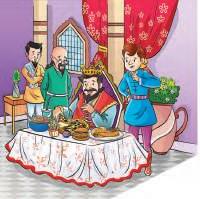
Once upon a time, in a faraway kingdom, there lived a king named King Munch. King Munch loved to eat junk food. He loved burgers, fries and candy more than anything else. He ate them for breakfast, lunch and dinner. King Munch also hated exercising. Instead, he liked to sit on his throne all day, munching on snacks.
Should we eat junk food every day?
One day, King Munch noticed he could no longer fit into his favourite chair. His clothes were getting tighter, and he was out of breath even when he laughed. But King Munch did not see the problem. He thought it was all just fine. His ministers and doctors were very worried. They tried to talk to him gently.
‘Your Majesty, maybe you should eat less cake and more fruit and vegetables,’ said one minister.
‘But I love cake!’ said the king, looking surprised. ‘Exercise can be fun! You can play badminton or go for a run,’ said a doctor.
But King Munch just laughed and said, ‘Why do I need to change? I am happy just the way I am!’
junk food: food that is not good for us throne: a special chair on which a king or queen sits munching: eating in small bites while making a sound
Why did the minister ask the king to eat more vegetables and less cake?
out of breath: needing to breathe deeply after exercise
worried: nervous or scared about something gently: in a kind way

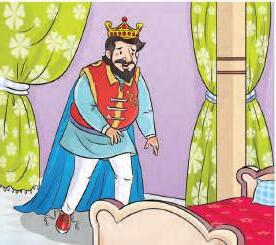
help him put on his walking shoes and started his journey. The walk was tough. King Munch puffed and panted all the way up the mountain. When he finally reached Mr Wise’s house, he was very tired. ‘Welcome, King Munch,’ said Mr Wise with a smile. ‘I can help you, but I cannot leave my house and my books, so you must come here every day.’
King Munch wanted to argue, but he was too tired. So, he nodded and went back to the palace.
Soon, the king could not even tie his shoes or walk up the palace stairs. One day, his minister heard of a wise man who lived outside of town. ‘Your Majesty,’ said the Minister, ‘I know someone who can help you. His name is Mr Wise, and he lives on the other side of the mountain. But no horse cart can go there, so you must walk to his house.’ King Munch sighed but agreed. He really wanted to be able to tie his shoes again. So, he asked one of his servants to

Why didn’t King Munch argue with Mr Wise?
sighed: let out a long breath agreed: said yes to something journey: a long trip tough: hard and difficult
puffed and panted: breathed quickly and with difficulty
argue: give a reason for not agreeing nodded: moved his head up and down to say yes
Every day, King Munch walked up the mountain to visit Mr Wise. At first, it was very hard, but each day it got a little easier. He started to notice something amazing. His clothes were not as tight, and he could breathe better. He even began to enjoy the fresh air and beautiful views on his walks. When he reached Mr Wise’s house, they would sit and talk about King Munch’s favourite snacks, laugh and share stories.
One day, after many walks up the mountain, King Munch looked in the mirror and saw that his clothes fit better. He could now tie his shoes, walk up the palace stairs and fit into his throne again. ‘Mr Wise, you have helped me become healthy without me even noticing it!’ King Munch said with a big smile. Mr Wise laughed, ‘Sometimes, the best way to help is to make it fun and simple.’
King Munch returned to his palace with a new habit. He still loved his snacks, but he also enjoyed fruit, vegetables and his daily walks. And so, King Munch lived happily and healthily ever after.

Walking every day keeps our heart active and strong.

amazing: something really great and surprising Listen to all the keywords here.




1. Fill the blanks with words in the box.
Hint Box: fresh junk tight mountain
a King Munch ate food every day.
b King Munch’s clothes got very .
c Mr Wise lived on the other side of the .
d King Munch began to enjoy the air on his walks.
2. Tick () the correct answers.
a Why did King Munch visit Mr Wise?
i To learn how to bake a tasty cake
ii To get help with becoming healthy
b What did King Munch notice after he started walking every day?
i His clothes were getting tighter, and he could not breathe easily.
ii His clothes were getting looser, and he could breathe better.
c How did King Munch feel about exercising at the start of the story?
i He loved it.
ii He hated it.
d What did King Munch enjoy during his daily walks to Mr Wise’s house?
i The yummy snacks
ii The beautiful views
3. Answer the questions in one to two sentences.
a What did King Munch do all day at the beginning of the story ?
b What did the doctor say King Munch should do?
c What did Mr Wise ask King Munch to do? Why ?
d Name three things that King Munch could do when he was healthy.



1. Fill in the table.
Hint Box: calm grand beautiful royal
People Where do they live?
King Munch
Mr Wise
Give two words to describe the place
2. On the left are things that the unhealthy King Munch would do. Write what would change after the King’s habits become healthier.
Unhealthy King Munch What will a healthy King Munch do?
Gets tired and cannot walk up the mountain He will enjoy walking.
Eats only burgers, fries, and candy He will
Cannot bend to tie his shoelaces He will
Always lies on his bed He will




A dietician helps people choose yummy and healthy food to keep their bodies strong. Imagine that you are King Munch’s dietician. Circle yummy and healthy food from this list.
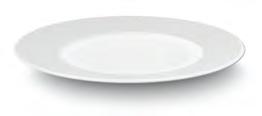







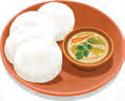














Pronounce Well Listen to the words here.
Read the words aloud. frog fry green grow frock fruit grape group from friend grin grass
Say the name of the item in the pictures aloud. Then, write the words.

































1. Use words from the story to fill in the gaps.
Charlie Chew has eaten too much food and he is finding the race very . He has not even gone halfway, but he is already out of . Can you hear him and ? junk frock
Hint Box: breath junk puffing panting tough

2. Good habits help us stay happy and healthy. Put each habit into the right box.
Hint Box:
brushing our teeth doing yoga doing homework reading books taking a bath running and dancing
Cleanliness habits
Study habits
Exercise habits

Go Grammar

We use a comma (,) between words in a list so that the reader knows we are naming different things. We do not need a comma before and.
For example:
• King Munch eats chocolate, chips, cookies and pizza for breakfast!
Without the commas we may think the king ate chocolate chip cookies and pizza!
We use a capital letter to start a sentence. We end a sentence with a full stop and a question with a question mark.
1. Correct this conversation between the King Munch and Mr Wise by adding commas, full stops or question marks.
Mr Wise: What did you have for breakfast today
King Munch: I had brown bread egg melon and a banana
Mr Wise: I had upma poha and dhokla
Simple Present
The Simple Present is used to state facts.
For example:
• The sun rises in the morning.
We also use the simple present to talk about actions which happen regularly or every day.
For example:
Remember! Doing words tell us what something or someone is doing. For example: The King walks up the mountain.
• The ministers help King Munch. The words rises and help are doing words. If the action is done by he, she or it, we add -s or -es after the doing word—helps, eats, grows.
We add -es to doing words that end in -ch, -o, -s, -sh, -x and -z.
I watch He watches I wash He washes We do She does We mix He mixes They miss He misses The bees buzz It buzzes
One person
More than one person I eat rice. We (Da and I) eat rice. You (one) eat rice. You eat rice.
He/She/It (Da/Ba/The bird) eats rice.They (Da and Ba) eat rice.
2. Fill in the blanks with the correct form of the doing words.
Hint Box:
a King Munch on his throne every day.
b Mr Wise on the other side of the mountain.
c King Munch up the mountain every day.
d They always about their favourite snacks.
e King Munch’s clothes him well now. sits

The Present Continuous
We use the present continuous to talk about actions that are happening right now or at the moment of speaking.
For example:
Look, King Munch is eating healthy food! The children are studying right now.
The present continuous is formed by adding is/am/are and -ing to doing words.
I am playing.
He/She/It is jumping.
We/They/You are dancing.
3. Choose the correct words to fill in the blanks. The actions are happening now.
a I in my book now.
i is writes ii am writing iii writed
b They around outside.
i are runs ii run iii are running
c Look, Nitesh a beautiful picture.
i is painting ii paints iii is paints
d Ria a healthy salad.
i is eat ii eats iii is eating am writing



Listen to the text here.
Listen carefully to the story and fill in the blanks with the correct words.
a The man asked the villagers for some to eat.
b The man decided to make .
c After the stone, the man added to the soup.
d The second villager got for the soup.
e The villagers learnt a lesson about . Practise speaking here.



Look at this picture. Take turns to tell your teacher what the boy is doing.
Sit with four friends and talk about what you do daily.
Hello friends!
I wake up at 6 o’clock in the morning. First, I get ready for school. Then, I eat my breakfast. After school, I rest for one hour. Next, I do my homework and go to the park to play with my friends. Finally, I go to bed at 9 o’ clock.




Complete the comic strip by writing the conversation between Karthik and Rohit.
Hi Rohit! Why did you not come to yesterday?
Are you now? I had Doctor says it was due to germs.
Yes! The doctor told me, we should always our hands before .
We should also wash our before cooking.
You are, right Karthik! I will be more careful.
Take care, Rohit. Goodbye!
Karthik. I will see you in .




Healthy food is good for our bodies and helps us grow strong. Fruit, vegetables, grains, pulses, beans, and nuts are all healthy food! Tick () the pictures that show healthy food.

Name your favourite healthy food. Get Set














We love eating sweets and fried food, but these foods are not good for us. They have a lot of sugar and oil which can make us sick. Fruit and vegetables can also be tasty. They help our body and brain to grow.


Let’s Read


Healthy food is yummy too, It makes us bright and strong, it’s true!
Apples make our hearts so strong, So we can play all day long!
Ripe bananas, yellow and sweet, Give us energy, oh—what a treat!
Oranges help us fight our cold, Keep us brave and keep us bold!
Carrots help our eyes to see, Bright and sharp as they can be!
Fresh and leafy, spinach green, Helps our blood flow, nice and clean!
Think and Tell
What other healthy foods do you think are yummy and help make us bright and strong?
healthy: things that are good for your body bold: strong and not afraid
Think and Tell
How does cabbage help keep us healthy?

crispy: food that is dry and thin and makes a sound when you bite it
layers: thin pieces of something put on top of each other
crunchy: food that makes a sound when you bite it or press it
creamy: soft and thick
Crispy cabbage, layers deep, Good for our tummies and helps us sleep!
Nuts and seeds are good for the brain. They are healthy and crunchy, sun or rain!
Creamy yoghurt, cool and white, For strong teeth and bellies light!
Healthy food is yummy too, Makes us bright and strong, it’s true!
Listen to all the keywords here.




1. Tick () the correct answers.
a Which food makes our hearts strong?
i Cabbage ii Apple
b Which food helps us fight a cold?
i Spinach ii Orange
c Which vegetable helps us see well?
i Carrot ii Onion
d What is good for the brain?
i Apples ii Nuts
2. Answer the questions in one to two sentences.
a Why are bananas a good treat, according to the poem?
b Which vegetable from the poem has layers?
c How does the poet describe yoghurt?
d What do we learn from this poem?
3. Read about the problems that the children are facing. Suggest which foods they should eat to solve their problems.
a Aarna feels very tired and needs more energy to play hockey.
Aarna should eat .
b Batul has trouble with her tummy and cannot eat much.
Batul should eat .
c Darpan feels dizzy and needs something to help his blood flow better.
Darpan should eat


Let us make a fun and healthy dish with one of the foods from the poem. Decide on a dish and make it with an adult. Then, fill in this table.

The dish I made is . I used from the poem for this dish.
To make this dish, I had to:

In your notebook, write the steps you followed to make the dish.

Vocabulary

Match the words and the pictures that rhyme. Then, write the words.
bean sounds like a peach sounds like
cook mix cut fry grind green



grain sounds like



Make the poem longer by writing about other kinds of healthy food! Fill in the blanks with words in the box.
Hint Box: grapes right green heat dal
Juicy , both red and ,
Full of vitamins, bright and clean!
Golden , so warm and bright, Gives us strength and feels just ! Onions, such a pretty treat, Keep us cool and beat the !
Now, write the pairs of rhyming words from the poem.

L iving a Healthy Life
Track your healthy routine for a week.

Steps:
• Follo w a healthy routine every day from Monday to Sunday.
• Tick ( ) the boxes if you followed the routine and cross ( ) if you couldn’t.
• Get it signed b y your parents daily.
• Finally , tell your class how you felt after following the routine daily for a week.
RoutineActivityMondayTuesdayWednesdayThursdayFridaySaturdaySunday
Wake up on time
Morning Routine

Brush teeth
Wash face
Eat a healthy breakfast
Wear clean clothes



Reach school on time

family Brush teeth before bed
Read a book
Go to bed on time






Set Tick () the things you would like to do if you had a pet.
Isha and Nakul wanted a pet, but their parents always said no. They were sad, but they kept trying to change their parents’ minds. How did they get their parents to agree at last? Let us read the story to find out.




Isha and Nakul are eating breakfast with their mother.
Isha and Nakul: (excitedly) Please, Aai, please! We really want a puppy!
Aai: (smiling but serious) Remember, puppies need to be walked every day.
Isha: (seriously) We can do it! We can take turns, right, Nakul?
Nakul: (nodding) Yes, we can! During lunch, Isha and Nakul talk about having a pet again. But this time they talk to their father.
Isha and Nakul: Baba, we really want a puppy!

Puppies are born with their eyes closed and cannot hear anything! They start to open their eyes and hear sounds when they are about two weeks old.
Baba: Puppies need to be trained. They cannot just chew on everything.
Nakul: (seriously) We will train it! We will be the best puppy trainers ever! In the evening, they all go to the park. They start talking about the pet again.
Isha: (turning to Aai) Aai, we know puppies can make a mess, but we will clean up.
serious: not joking
nodding: moving one’s head up and down to show that one agrees trained: taught how to listen and follow rules chew: use your teeth to break food into small pieces
Think and Tell
Is it difficult to train dogs not to chew? Why do you think so?
Aai: (smiling) It’s not just cleaning up poop. It’s also muddy paws and fur everywhere.
Isha: We will sweep and we will mop!
Baba: Puppies need a lot of love and a lot of hugs.
Isha: (happily) We will cuddle it! And we will let it sleep on our bed!
Many days pass. Isha and Nakul keep on asking for a puppy—at dinner, while brushing their teeth, and even during bedtime stories.
Isha and Nakul: Please, can we have a puppy?
Baba and Aai: (shaking their heads) No!
Isha and Nakul decide to convince their parents. They find a soft furry toy dog and decide to take care of it as they would do to a real pet.
Nakul: Let’s name it Fluffy.
Isha: (excitedly) Yes, Fluffy!
They bring Fluffy to the dinner table.
Nakul: (pretending to feed it) Fluffy loves carrots!
Isha: (giving Fluffy a bath in the sink) Look, Aai, Fluffy is all clean!
Aai and Baba: (shaking their heads, smiling)
Did you ever want to have something, like Isha and Nakul did in the story? What did you do to get it?

fur: soft hair that covers an animal’s body mop: clean the floor using a wet cloth
cuddle: lovingly hug someone or something
convince: make someone believe in something
sink: a basin with a tap where we wash our hands


For days, Isha and Nakul take care of Fluffy, pretending to pick up poop and brush its fur.
Isha and Nakul: (to Fluffy) We are practising. Soon, we will have a real puppy.
One evening, Aai and Baba call Isha and Nakul to the dinner table to make a big announcement.
Aai and Baba: (smiling) Nakul, Isha, you have shown us that you can take care of a pet. So, we will get you a real puppy.
Isha and Nakul: (jumping up) Thank you, Aai! Thank you, Baba! And that’s how Isha and Nakul got their puppy— their fluffy best friend.

announcement: (here) an important piece of news or information
Listen to all the keywords here.


Read and Respond

1. Match the people in the story and their actions.
Isha and Nakul
thought of the name Fluffy.
Aai and Baba asked for a puppy at the breakfast table.
Nakul told the kids they were getting a puppy.
Baba said that puppies need a lot of love.
2. Choose and then write the correct answers in the blanks.
a Isha and Nakul promised to take care of a real pet by .
i teaching it tricks
ii leaving it alone
iii taking it for walks every day iv going to the pet store
b said puppies needed training.
i Isha ii Baba
iii Aai
i buying lots of toys for it
iii crying for a pet
iv The new puppy
c Nakul and Isha convinced their parents to get them a pet by .
ii showing that they can take care of a pet
iv buying dog food
d The toy dog’s name was .
i Sparky
ii Fluffy
iv Bruno taking it for walks every day
iii Fido

3. Answer the questions in one to two sentences.
a What do Isha and Nakul want?
b Baba says puppies need to be trained. What do Isha and Nakul say?
c When Aai says that puppies have muddy paws and fur, what do Isha and Nakul say?
d Why do Aai and Baba decide to get a pet dog for Isha and Nakul in the end?



Read the actions of people in the story. Think of the story and tick () what they could be thinking.
a Isha gave her soft toy puppy a bath in the sink.
i This soft toy is so dirty. I have to clean it.
ii Aai and Baba will see that I can take care of a real puppy.
b Isha and Nakul made a list of what they needed for a puppy.
i It will need a puppy bed and puppy food.
ii I will let all my friends play with my new pet.
c Isha and Nakul pretended to take Fluffy for a walk.
i I wish we could go to the park.
ii I wish we had a real puppy.
d Aai and Baba told the kids that they had decided to get a puppy.
i I hope they take good care of the puppy!
ii I hope they buy the puppy lots of toys.




If you could have a pet at home, which pet would you like?
What would you name your pet?
Write two ways in which you would take care of your pet.



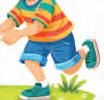

Pronounce Well

Read the words aloud.
Listen to the words here.
mouth sound shout pouch count round proud couch mouse ground cloud bounce house found aloud mound
Write an ou word for the pictures.

Vocabulary

1. Unscramble the letters and write the sounds the animals make.
growl
a The bear gave a low (gorwl) at the deer.
b The duck went (aqukc) as it swam in the pond.
c The kitten began to (urrp) when I petted it.
d I can hear the owls (ooht) at night.

2. How do these animals move? Find the words in the word grid and fill in the blanks.

Go Grammar

Sentences and Questions
Remember!
A sentence is a group of words that shows a complete thought. A question is a sentence that asks something. Sentences and questions start with a capital letter and end with a full stop (.) or a question mark (?).
Sentences have two parts.
Isha and Nakul are happy.
Naming part
(What or who the sentence is about)
Doing part (Tells us more about the naming part)
The doing part of a sentence always has an action word. If the action word is are, is or am, always use these words to ask and answer questions.
Sentence Question Answer
They are happy. Are they happy? Yes they are happy. No, they are not.
The puppy is playful. Is the puppy playful? Yes, it is playful. No, it is not playful.
I am lucky. Am I lucky?
Yes, I am lucky. No, I am not lucky.
If you do not see are, is or am, you can use do or does to ask a question.
Sentence Question Answer
They wash the puppy. Do they wash the puppy? Yes, they do. No, they do not.
The puppy barks loudly. Does the puppy bark loudly? Yes, it does. No, it does not.
1. Match the pairs to form sentences. Circle the doing words.
Column A
Column B
Fluffy are very cuddly. Puppies is a soft toy.
Aai are ready for a pet.
The children am a lucky girl. I is worried about her new couch.

2. Use is, am, are, do and does correctly in the questions.
a they in the park?
b Isha and Nakul eat breakfast together?
c Aai worried about cleaning?
d I getting a new pet?
e the puppy drink milk? Are
Words like and, or and but can be used to join two words or sentences.
• AND can join words or sentences.
For example:
Isha wants a puppy. Nakul wants a puppy.
→ Isha and Nakul want a puppy.
Isha brushes her teeth. She goes to bed.
→ Isha brushes her teeth and goes to bed.
• OR is used to give a choice.
For example:
Isha can get a puppy. Isha can get a fish.
→ Isha can get a puppy or a fish. (Isha can get ONE of them.)
• BUT is used to join sentences with opposite meanings. For example:
The children wanted a pet but their parents did not.
3. Fill in the blanks with the correct joining word.
a Nakul (and/but) Isha will feed the new puppy.
b Puppies are sweet (or/but) messy.
c Do you want to play (or/but) go for a walk?
d Baba is tired (but/and) happy. and


Listen Well

Listen to the text here.
Listen carefully to the text and number the sentences in the proper order.
Hint Box: The first and the last sentences are properly ordered, but the others are not.
1 Taking care of a fish tank is easy and fun.
You are now ready to put in fish that can live together.
Next, fill the tank with clean water.
First, you need a clean tank.
Feed your fish once or twice a day.
Then, place colourful rocks and plants at the bottom.
7 Enjoy your new fishy friends!



As you listen to the text, try to remember the order in which things should be done.
If necessary, listen to the text again.

Speak Well
Practise speaking here.
Sit in pairs. Take turns to ask and answer questions about your pets or your favourite animals.
Hi! Do you have pets?
Yes, I have a dog. It’s name is Fluffy. Do you have pets?
No, I don’t.
Which is your favourite animal?

I love rabbits. I like their long ears.
I would chose a fish as a pet. They are quiet and they live in fish tank.
If you could have a pet, which animal would you chose? That is great!



Look at your friend while asking and answering the questions. Nod to show you are listening. Ask them more questions about their favourite animal/pet.

Read the story and write an interesting ending in your notebook.
In a pond, there lived a little duck named Dotty. She wanted to learn how to fly. Every day, Dotty would flap her wings and try to fly like the other birds, but she couldn’t. Dotty was very sad.
To write the ending for this story, think of the following:
• How does Dotty solve the problem?
• What happens at the end of the story to make everything better?


Rearrange the words to name the pet animals. Get Set






A zoo is a place where there are many animals. But what happens when a house becomes a zoo? Let us read the poem to find out!



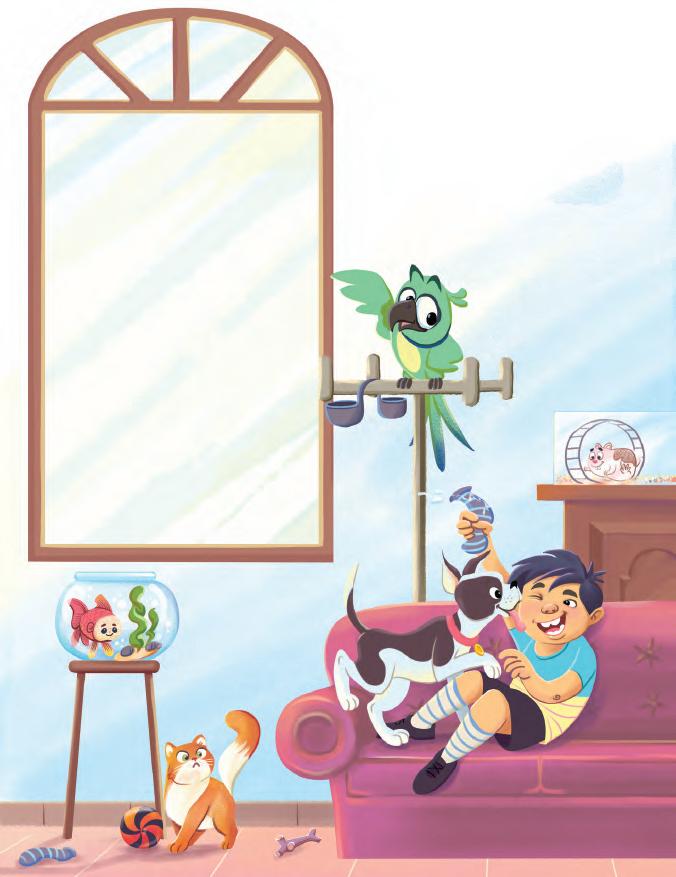
I have many pets—
My house is a zoo! Do you want to know, The things they do?
My dog—he barks, And he licks my face. He chews all my socks, Then makes a sad face!
My kitten is quiet— She’s just like a mouse.
But when I’m asleep, She runs through the house!

Did You Know?
Parakeets can learn to talk—they can learn as many as 100 words!
Think and Tell
Which pet would you like to have at home? What will you call it?
green parakeet— It goes to the tree.
Eating seeds and fruit And flying so free!
Each morning, a cow Moos outside our gate. And munches our grass
From seven to eight.
And then every night
The owl says, ‘hoo-hoo!’
He thinks he is wise, But he’s silly too!
I love all my pets— I do love my zoo!
My pets are all silly, And they love me too!

moos: long, deep sound that the cow makes munches: chews food and makes a lot of noise
wise: to be smart and to know what is right and wrong
What is the sound that a cow makes? What does the cow eat?
Listen to all the keywords here.




1. Tick () the correct answers.
a What does the dog do in the poem?
i It barks and chews socks. ii It sleeps all day.
iii It flies in the sky.
iv It moos outside the gate.
b What does the kitten do when the speaker is asleep?
i It chews socks.
iii It eats seeds and fruit.
c Where does the parakeet eat seeds?
i In a cage
iii In the tree
ii It runs through the house.
iv It says, ‘hoo-hoo’.
ii In the house
iv Near a pond
d When does the cow munch the grass?
i In the morning ii All night long
iii In the afternoon
iv All day long
e What sound does the owl make at night?
i woof ii meow
iii moo iv hoo-hoo
2. Answer the questions in one to two sentences.
a Which pet is like a mouse? Why ?
b How does the poet feel about his pets?
c Why does the poet call his house a zoo?
d Is the parakeet in a cage? How do you know?



Think about the ways pets, like cats and dogs, can help people. Write two ways.


Vocabulary

Animals have different body parts like we do. Look at the pictures and fill in the blanks using the words in the box.
Hint Box: whiskers paws
a The bird uses its to fly.











b The tiger has long on its face.
c The bear uses its sharp to climb the tree.
d The kitten’s soft leave little prints on the floor.




Fill in the gaps to complete the poem. Use the action words in the box.
Hint Box: hop leap waddle run trot fly
In our house, we have a zoo, Pets that do so much, it’s true.
Cats that jump and dogs that , Fish that swim and have some fun.
Cute little bunnies that along, Birds that and sing a song. Ducks that on their flat feet, When I call, they’re ready to eat.
Frogs that with happy feet, Chickens peck and love to eat. Horses , they do not race, Goats that climb all over the place.
In our house, we laugh and play, With pets around, it’s a great day! Every pet moves in a special way, And, in our house, they’re here to stay! run



It is important to listen carefully when someone talks to us. Circle the pictures that show good listening skills. Get Set
Listen to your teacher when she is explaining something.
Talking at the same time as your friend.
Looking at your friend when they are speaking.
Talking on the phone when your friend is speaking.
Once upon a time, there was a turtle who was travelling with his friends. Something happened that changed his life! What happened? Let us read the story to find out.



Once upon a time, in a pond near a hill, there lived a turtle. One day, two young geese came to the pond to look for food.
There, they met the turtle and talked to him. Soon, they became very good friends.
After a few days, the geese said, ‘Friend, we have a beautiful home far away. We are going to fly back to it tomorrow. Will you come with us?’
‘How can I come with you? I have no wings,’ said the turtle.


Turtles can live for a very long time, sometimes more than 100 years! Did You Know?
soon: after a short time

‘Oh, we will take you! But, we can take you only if you promise not to open your mouth or talk at all until we reach home!’ they said.
‘I can do that,’ said the turtle. ‘Please take me with you.’
So the next day, the geese brought a stick with them. Each goose held one end of the stick in its beak.
‘Now hold the middle of this stick with your mouth. Remember, don’t open your mouth or talk at all until we reach home,’ they said again.
Why did the geese ask the turtle to not talk until they reached home?

The turtle opened his mouth and held the stick. Then, the geese flew into the sky.
As they flew, they passed over a village. A group of children looked up and saw them. The children started to laugh and say, ‘Look! The geese are carrying a turtle on a stick! How funny!’
The turtle heard them and said, ‘Well, what’s wrong with my friends carrying me?’
But as soon as he spoke, he lost his grip on the stick and fell to the ground. His shell broke with a crack!
Why did the turtle’s shell break?
The geese could not do anything to help the poor turtle. So, they kept flying. As they flew, they heard people below talking about what happened to the turtle. They said, ‘He couldn’t stay quiet. Now he is hurt.’
What would you do if you were in the place of the geese? passed over: flew above lost his grip: let go of something that he was holding tightly shell: the hard, outer part of an animal’s body
Listen to all the keywords here.




1. Write True or False.
a The turtle became friends with two ducks.
b The geese did not want the turtle to talk during the journey.
c The turtle fell because he was too heavy for the geese to carry.
d The turtle’s shell broke when he fell to the ground.
2. Put the events in the correct order by numbering them 1–5.
a The geese told the turtle to hold onto a stick with his mouth.
b The turtle talked and fell, breaking his shell.
c The turtle met the geese and they became friends. 1
d The children laughed at the turtle because the geese carried him.
e The geese asked the turtle to travel with them to their home.
3. Answer the questions in one to two sentences.
a Where did the geese want to take the turtle?
b Why did the turtle say he could not go home with the geese?
c How did the geese carry the turtle?
d Why did the turtle fall?



1. At the end of the story, the turtle fell and broke his shell. What do you think the turtle learnt from this?

2. Imagine that the children did not laugh at or tease the turtle. What do you think would have happened next? Answer in two to three sentences.



In the story, if the turtle had listened to the geese, he would have been safe. Like the turtle, we must also listen to others and follow rules to stay safe. Can you think of some rules that keep you safe in the places given below?
the school playground:



• Put your fingers lightly on your throat.
• When you say the hard th sound, like in this or that you will feel your throat moving a little.
• When you say the soft th sound, like in three or bath, there is no movement.

Read the words aloud. the that they these father mother
Soft th
Hard th thief thick teeth earth mouth bath
Say these words aloud and write them in the correct th group.
Earth think thief weather
soft th as in three - hard th as in that -

Vocabulary

Read the meaning and unscramble the words. In your notebook, use the words to make sentences of your own.
a Something we listen to or read. (TOSRY)
b The people or animals in a story. (HCARTACER)
c Another word for stories. (LATES)
d Colourful drawings in books. (PCITRUES)


We talk about a thing in the present when it is a fact or happens regularly. We talk about a thing in the past when it happened at a time before the present, like yesterday or last year.
I am in Grade 2.
Last year, I was in Grade 1. My brother is in Grade 5. My brother was in Grade 4. We are in the same school. We were in the same school. I play cricket. Last year, I played football.
We use was and were when talking about the past. To get was and were right, you have to know WHO the sentence is about.
For example:
• I was at the pond near the hill.
• The turtle (He) was in a pond.
• The goose (She) was there.
• It was a pretty pond.
• The geese (They) were friends with the turtle.
We were
They were
• You were also at the pond. (You can be one person or more)
• We were also there. I was… He/She/It was… You were
1. Choose the words from the box that can be used instead of the underlined words.
Hint Box: We They He She It
a Myra was on her way to school when Myra saw a strange thing.
b Two geese were in the air. She

c Mr Turtle was on the ground.
d My friend and I were worried.
e The shell of the turtle was cracked.
2. Use was or were to fill in the blanks.
a The merchant angry.
b Birbal and he friends.
c A thief in the merchant’s house.
d Birbal’s plan clever.
e My friends and I there when the thief was caught.
3. Rewrite the story starting with the words given. Change the underlined words into the past.
A poor woodcutter saves a snake in the forest. The snake is so happy, it gives the woodcutter a magic purse. Every time he opens the purse it is full of money. The man and his wife are rich and help others.
One day long ago, a woodcutter saved a snake in the forest. The snake was
Remember! We add -ed to change doing words into the past tense.



Listen to the text here.
Listen carefully to the start of the story. Each one of you will add one sentence to the story to make it more interesting. So, do not forget to listen to your friends!
‘Once upon a time, there was a puppy. The puppy loved to play in the garden. One day, the puppy found a shiny, red ball...’

Listen carefully to the first part of the story. Think about what could happen next in the story.




Practise speaking here.
Sit in pairs. Unscramble the sentences and rewrite the story. Read the story aloud to your partner.
a went to a rich man to complain Birbal
A rich man
b the man’s someone in a house was thief
Someone
c gave everyone Birbal a stick
Birbal

d the thief’s he said stick grow would 2 cm
He said
e Birbal found the next morning the thief
The next morning
f had cut the thief off 2 cm his stick
The thief



Speak clearly.
Look at your partner when you talk.
Speak slowly and don’t rush. Take your time to tell your story.

An informal letter is a letter we write to someone we know, like our family or our friends.
Model Answer
123, Block B
Raj Garden Road
Hyderabad 123451
1 June 2025
Dear Sneha,
How are you? I hope you are doing well. I recently read a story ‘Rapunzel’. Rapunzel has long, magical hair. She is locked in a tower. A prince finds her and helps her. They fight the witch, and Rapunzel and the prince live happily ever after.
Please also share a story you have read. I will wait for your reply.
Love, Avinash
Your home address with the pincode
Date of writing the letter
Greetings
Body, the main part of the letter Final lines
Closing and your name
Fill in the blanks using the correct phrases to complete the letter to your friend asking to read together.
Hint Box: How are you? the best for being my friend you have a great day read together again soon
1/26, Amaar Block Banglore 134567 (date)
Hi , (name)
Remember when we used to read stories together? Recently, I read a story called . It is about . Let’s . Thank you . You are . I hope . Your loving friend, (your name) (story name) (what the story is about)

1. Fill in the blanks with the correct articles.
Hint Box:
a Look at colourful rainbow.
b Can you spot moon?
c There is elf hiding behind the tree.
d children are dancing in the garden.
e Let us find tree for shade.
2. Look at the picture and tick () the sentence with the correct position words of place.
a
The cat is behind the table.
The cat is under the table.
b









c
The boy is in front of the balls.
The boy is between the balls.
The girl is standing in front of a box.
The girl is standing above the box.

The bird is flying between the trees.
The bird is flying above the trees.
Rohan was hiding behind the box.
Rohan was hiding in the box.
3. Fill in the blanks with the correct position words of time.
a We eat breakfast (in/on) the morning.
b It snows here (in/on) winter.
c My birthday is (at/on) the first of June.
d The party starts (at/on) 5 o’clock.
e We will have a lot of fun (at/on) that day.

1. Rewrite the following sentences using capital letters, commas and full stops.
a my kitten likes to eat fish rice and biscuits
b is this your tiffin box
c seema and ranu cook healthy food together
d i like to eat poha
e my grandmother likes coconut water mango shake and guava juice
2. Write SP for the simple present sentences and PC for the present continuous sentences.
a Rohan exercises every morning.
b Radhika is washing her hands in the bathroom.
c We play for an hour in the afternoon to stay fit.
d They are busy cleaning their room.
e We eat dinner at 7 o’clock.

3. The family cooks together every day. Write sentences about what each one does.
Hint Box: stir chop cut peel help



a Mother:
Mother stirs the
b Father:
c My brother:
d My sister:
e My brother and my sister:
4. Use the words in the box to say what is happening in the pictures right now.
Hint Box: say tell fill look cry

Raj at the salad. Mother him to eat it.

Raj loudly. c Raj his mouth with chips.
e Sorry Raj he will not be naughty again.

1. Circle the naming part and underline the doing part in each sentence.
a The little kitten is soft.
b The kids love animals.
c A fox is a clever animal.
d Ankit feeds his dog on time.
e It is hot today.
2. Write S for Sentence and Q for Questions.
a Is this your pet dog?
b Nita gives Softy, her rabbit, carrots.
c Do you like playing ludo?
d Browny is a big brown dog.
e Are you happy or sad?
3. Read the sentences and write the questions using is, are, do and does.
a Raghini is cleaning the fish tank.
b Neel feeds the stray animals.
c They are playing with Bruno.
d Loui and Sky are my pets.
e Nisha and Rohan want a pet.
4. Make the pairs into one sentence/question using and, or, but.
a I like dogs. I like cats.
b Is this a dog? Is this a wolf?
c We can climb up. We can climb down.
d Baba is cooking. Baba is humming.
e Raj wants to go right. Priya wants to go left.

1. Tick () the correct sentences.
a I saw a blue bird. It were so beautiful. I saw a blue bird. It was so beautiful.
b I saw the race between a tortoise and a hare. They were both good. I saw the race between a tortoise and a hare. They was good.
c The boy were foolish to shout, ‘Wolf! Wolf!’. The boy was foolish to shout, ‘Wolf! Wolf!’.
d I saw you act out the story. You were good. I saw you act out the story. You was good.
e Grandma read us a story. We was excited. Grandma read us a story. We were excited.
2. Rewrite the sentences to make them about the past. Use was and were.
a Tanya and Soham are in a jungle.
b Tina did not eat her lunch. She is very hungry.
c The children heard a horror story. They are scared.
d Rapunzel had long hair. She is beautiful.
e Jack’s mother threw the seeds away. She is angry.
Name of the Student:
Class: 2
Roll Number:
Section:
Date:
Section – A (Reading and Vocabulary)
1. Read the story and answer the questions.
In a small village, there was a magical garden. This garden was full of fruit, vegetables and grains that could talk! The garden belonged to a kind old lady named Grandma Green. Three friends—Aarav, Meera, and Rohan—visited Grandma Green’s magical garden.
Annie Apple told the children how she gives vitamins, and Carl Carrot explained how he makes bones strong. Milly Millet and Rachel Rice give energy. Now, the children know that eating healthy food helps them grow strong and happy. From that day, they shared their new knowledge with others and ate healthy food.
a Choose the correct answers.
i Who owned the magical garden?
a. Grandpa Green
c. Carl Carrot
ii What did Annie Apple provide?
a. Energy
c. Strong bones
b. Grandma Green
b. Vitamins
iii Which vegetable makes bones strong?
a. Annie Apple
c. Carl Carrot
b. Milly Millet

iv What do Milly Millet and Rachel Rice give us?
a. Vitamins
c. Strong bones
b. Energy
v What important lesson do the children learn?
a. Eating healthy food helps them grow strong and happy.
b. How to take care of a garden
c. How to talk to fruit and vegetables
b Fill in the blanks with the words from the passage.
i In the magical garden, , fruit and grains could talk to the children.
ii taught the children about vitamins.
iii Carl Carrot explained how he makes strong.
iv The children get from Milly Millet and Rachel Rice.
v By visiting the garden, the children learned the importance of food.
c Write True or False.
i Grandma Green’s magical garden had talking fruit and vegetables.
ii Annie Apple said she gives vitamins.
iii Carl Carrot said he gives energy.
d Look for the words from the passage that sound the same as the words below. Use the words to write sentences of your own.
i No . ii Eight .
Section – B (Grammar)
2. Fill in the blanks with the correct form of the doing words to show actions done daily.
a Aarav (eat) fruit every day to stay healthy.
b Every morning, Meera (brush) her teeth before breakfast.
c In the evening, Rohan (run) around the park with his friends.
3. Rewrite the sentences by using capital letters, full stops (.) and a comma (,).
a aarav now eats fruit and vegetables every day
b he washes his hands before meals
c He runs plays and studies with his friends
Section – C (Writing)
4. Complete the story by filling the blanks.
Box: junk food doctor eat healthy food strong run and play well more energy
Raman loved to eat . One day, he met a wise who taught him to . After learning this, he started to eat . Soon, he felt



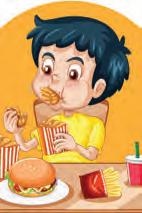




very and could . Now, he always chooses healthy food and has .
5. Complete the comic strip by filling in the blanks.

Complete the comic strip by filling the blanks.
My healthy habit is
I stay healthy by eating . I always feel by eating . I stay away from to be healthy.
Name of the Student:
Class: 2
Roll Number:
Section:
Date:
Section – A (Reading and Vocabulary)
1. Read the story and answer the questions.
Vansh and the Golden Ball
Vansh had a cat named Mithu. Mithu loved playing with colourful balls. One afternoon, Mithu saw a golden ball in the garden. When she touched it, she changed into a superhero with a tiny cape. She could fly! She flew around the city. She saved a fallen bird and helped a squirrel stuck in a net. As the sun set, Mithu became a normal cat again. She ran to find Vansh. She wished she could tell him about her adventures. Vansh hugged her and said, ‘You’re my best friend!’
If only Vanish knew what Mithu could do!
a Answer the questions by filling in the blanks.
i What is the name of Vansh’s cat?
Vansh’s cat is called .
ii What was Mithu’s favourite toy?
Mithu’s favourite toy was .
iii What happened when Mithu touched the golden ball? When Mithu touched the golden ball .
iv Who did Mithu save?
Mithu saved .

v What did Mithu want to tell Vansh?
Mithu wanted to tell Vansh about .
vi What did Vansh and Mithu do together at the end of the story? Vansh and Mithu .
b Tick () to show who did these actions.
Action
Has a cat
Found a shiny, golden ball
Became a superhero
Flew around
Helped small animals
Hugged Mithu
MithuVansh
c Tick () what the characters could be thinking.
Mithu finds a shiny, golden ball in the garden.
i ‘This is so shiny. Is it magical?’
ii ‘I will take it to Vansh.’
Mithu became a superhero after touching the golden ball.
i ‘Wow, this is fun!’
ii ‘I hope Vansh doesn’t get angry.’
Vansh hugged Mithu and said, ‘You’re my best friend.’
i Mithu is so cute and furry.
ii I need to feed her.
2. Read the answers to the questions. Fill in the blanks with the words in the box.
Hint Box: Is Am Are Do
a Vansh and Mithu playing with the golden ball?
Yes, Vansh and Mithu are playing with the golden ball.
b Mithu and Vansh have fun adventures together?
Yes, Mithu and Vansh have fun adventures together.
c Mithu’s superhero costume shiny and bright?
Mithu’s superhero costume is shiny and bright.
d I feeding Mithu her favourite treats? I am feeding Mithu her favourite treats.
3. Fill in the blanks with the correct joining word.
a Vansh Mithu are in the garden. (and/but)
b Mithu likes to chase balls, she does not like to chase the rat. (and/but)
c Do you want a cat a dog as your pet? (and/or)
d Vansh takes Mithu for walks gives her toys to play with. (and/but)

4. You are writing a letter to your friend telling him/her about your new pet. Complete the letter by filling in the blanks.
468, Main Street
Mumbai 110067 10 September, 2025
Dear ,
I hope you are fine. I want to tell you about my new pet. Its name is . It is a . It loves to play with , and it also enjoys . Every day, I feed it and play with it.
I hope you can come over and see it soon!
Love,

















































Aditya is helping his mother to set the table. Some guests are coming for lunch.
Place 3 plates on the table. Bring 2 bowls for each plate.
How many bowls should I bring?
Multiplying by 3
Multiplying by 3 means counting all the groups of 3 together.
3 groups of 2 = 6 or 3 twos are 6
3 × 2 = 6 bowls
Let us count the number of bowls to build the multiplication table of 3.

Multiplication is repeated addition.
8 • Multiplication Tables 3, 4 and 6
eights are 24 3 × 8 = 24
nines are 27 3 × 9 = 27 3 tens are 30 3 × 10 = 30
Example 1: Count the number of groups. Count the number of ducks in each group. Write the multiplied answer.




There are 3 groups.









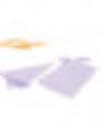

There are 5 ducks in each group. The multiplied answer is: 3 × 5 = 15 Write the multiplication fact.
Fill in the missing numbers using the table of 3.

Use the table of 3 to find the answer mentally.
Fill in the blanks.
Write the multiplication statement for the following from the table of 3. Draw circles to show it.
Multiplying by 4
Aditya is helping his mother lay the table for dinner. Aditya is sitting at the table with his parents. Aditya’s sister, Mohi, walks in.
Aditya, place 1 more plate for Mohi. Place 3 cookies on each plate.
Sure Mom!
There were 3 plates. Aditya placed one more plate. There are 4 plates now. He placed 3 cookies on each plate.
4 groups of 3 = 12 4 × 3 = 12 cookies
Let us count the number of cookies to build the table of 4. 4 ones are 4 4 × 1 = 4 4 twos are 8 4 × 2 = 8 4 threes are 12 4 × 3 = 12
4 fours are 16 4 × 4 = 16
4 fives are 20 4 × 5 = 20 Chapter 8 • Multiplication Tables 3, 4 and 6
Example 2: Count the number of groups. Count the number of marbles in each group. Write the multiplication fact.

















































































































































































































































Multiplication fact: 4 × 6 = 24


Write the multiplication fact.



There are 4 groups of 6 marbles.





Fill in the blanks.












































Use the table of 4 to find the answer mentally.















































































Think and Tell What is 4 × 11?



















a 4 groups of 3 b 4 groups of 8 c 4 groups of 2
d 4 groups of 6 e 4 groups of 9 f 4 groups of 1
Write the multiplication statement for the following using the table of 4. Draw any object to show it.

After lunch, everyone played a game with balloons.
Mohi, we are 6 members. We need 4 balloons for each member!
How many balloons do we need in total?
Multiplying by 6 means counting all the groups of 6 together.
So, 6 members with 4 balloons will have a total of:
6 × 4 = 24 balloons or 6 fours are 24.
Let�s count the number of balloons to build the table of 6.
Example 3: Count the number of groups. Count the number of pens in each group. Write the multiplication fact.
There are 6 groups of 7 pens.
Multiplication fact: 6 × 7 = 42



Write the multiplication statement for the pictures. a 1 Do It Yourself 8C b c
Fill in the missing numbers using the table of 6.
Use the table of 6 and answer.
Fill in the blanks.
Meghna went to a shop to buy some eggs. In the shop, she saw eggs in trays. There were 4 trays, and each tray had 12 eggs in it. She wondered how many eggs would there be in total.

But I don’t know how to find 4 × 12.
To multiply a 2-digit number with a 1-digit number, we can use the column method.
The shopkeeper has 4 trays with 12 eggs in each tray.
We need to multiply 12 by 4.
Let us multiply 12 by 4 using the multiplication table of the smaller number 4.
Step 1
Write the 2-digit number according to its place value in the table. Write the smaller number below it.
Step 2
Multiply the smaller number with the ones of the 2-digit number.
4 × 2 = 8
Write 8 in the ones place.
Step 3
Multiply the smaller number with the tens of the 2-digit number.
4 × 1 = 4
Write 4 in the tens place.
So, 12 × 4 = 48.
Example 4: Multiply 23 × 3.
Brahmagupta, an Indian Mathematician was the first one to explain the rules of multiplication.
So, 23 × 3 = 69.



Chaach is a curd-based drink. It has a cooling, refreshing effect on the body in summer. Each jug has 3 glasses of chaach. 13 such jugs will have 13 × 3 = glasses of chaach.
Let us learn how to group ones and tens to make multiplication of larger numbers easier.
Abdul has 93 marbles in each packet. He has 4 such packets. To see how many marbles Abdul has in total, we need to multiply 93 by 4.
Look at the given steps:
Step 1
Write the 2-digit number according to its place value in the table. Write the smaller number below it.
Step 2
Multiply the smaller number with the ones digit of the 2-digit number. 4 × 3 = 12. 12 has 1 tens and 2 ones.
Write 2 in the ones place and carry over the 1 to the tens place.

Step 3
Multiply the smaller number with the tens of the 2-digit number.
9 × 4 = 36. We carried over 1 tens.
36 + 1 = 37
Write 3 in the hundreds place and 7 in the tens place.
So, 93 × 4 = 372.
Example 5: Multiply 63 by 8.

So, 63 × 8 = 504



Makar Sankranti is celebrated with kite flying to mark the end of winters. There are 13 types of kites available at stalls A and B.
If stall A sells 2 kites of each type, the total number sold is = 13 × 2 = 26 kites.
If stall B sells 6 kites of each type, the total number sold is = 13 × = kites.
Write True or False. By multiplying 41 by 6, we will get 7 ones. Explain your answer by showing multiplication. How many tens will you get when you multiply 92 by 5?
Let us explore some story problems on multiplication.
Meghna went to another shop and saw 6 trays, with 30 eggs in each tray. How many eggs were there in total?
What do we know?
Total trays = 6
Eggs in each tray = 30
What do we want to know?
We need to find the total number of eggs. How do we find the answer?
Total number of eggs = Total trays × Eggs in each tray
Solve to find the answer.
= 30 × 6 = 180 eggs
So, there are 180 eggs in all.



There are 98 packets and 5 candies in each packet. How many candies are there in total?
A bus has 46 seats, and there are 4 such buses. How many seats are there in total?
There are 6 pins in each pouch. If there are 52 such pouches, how many pins are there in total?
Bamboo is used for making garden fences. It is an eco-friendly choice. 6 bamboo poles are needed to fence a garden. Each pole costs ₹85. What is the total cost of all the bamboo poles?
Setting: Whole class

Materials Required: 150 ice-cream sticks, 6 transparent glasses
Method: Take 1 glass and 36 ice-cream sticks. 1




Make bundles of tens with the ice-cream sticks. Put the single sticks next to them. Put all of these in one glass.

Make 4 such groups of ice-cream sticks in 4 glasses.
This shows 4 groups of 36 or 4 × 36.
Put all the ice cream sticks together and find the total.
Multiply 36 by 4 using the column method.


Match your answer with the total number of ice-cream sticks. Discuss the answer in class.
Try solving more multiplication problems using both methods.


Use the table of 3 and write the answer.
Solve mentally by using the table of 4.
Fill in the blanks by using the table of 6.
In cricket, a six is scored when the ball is hit over the boundary without bouncing and touches the ground outside the field of play. In a cricket match, if Rahul scored 6 runs on each of the 7 balls he played, how many runs did Rahul score?
Garba is a folk dance from Gujarat. It is done during the Navratri days. If 28 dancers are there in 4 rows, how many dancers are there in total?
There are 6 plates of dosa, and each plate costs �85. How much do all the dosas cost in
Critical Thinking & Creativity
Solve the multiplication problems and complete the crossword. First, solve across, and then down.
Across Down
1. 6 × 8 2. 9 × 9
3. 8 × 9 4. 4 × 6
5. 3 × 5 6. 6 × 9
7. 8 × 8
8. 4 × 10


Write a word problem to show the multiplication of 42 by 5. 2

Value Development & Cross Curricular


We get sugarcane juice by pressing sugarcane. It refreshes us. Sonesh and his friends decided to distribute free juice during the summer to the people passing by. They have 5 jugs of juice. Each jug has 81 cups of juice. Read the questions and answer.







1 Why should we drink sugarcane juice in summer?
2 How many jugs of juice do they have?
3 How many cups of juice does each jug have?
4 How many cups of juice will they be able to distribute?
5 Which juice do you like?



















































Sam has 6 chocolates.
Sam wants to share the chocolates with his friend, Ravi. Both of them should have the same number of chocolates.
How many chocolates will Sam share with Ravi?
Let us divide the 6 chocolates equally between Sam and Ravi. First, each boy takes 1 chocolate.
We strike out 2.
4 chocolates are left with Sam. Then, again they take 1 more chocolate each.
We strike out 2 more chocolates.
Now, 2 chocolates are left with Sam.
Then, they take 1 more chocolate each.
We strike out 2 chocolates.
We get 2 groups of 3 chocolates.
No more chocolates are left with Sam.
Example 1: Share 4 laddoos between Meena and Tina.



Strike out 2 laddoos. Meena and Tina get 1 laddoo each.



Strike out 2 remaining laddoos. Meena and Tina get 2 laddoos each.
Example 2: There are 10 apples. Circle to show 2 apples in each basket.

In division, an equal number of objects is kept in each group.
There are 2 apples in each basket. There are 5 groups of 2 apples.



Circle the set of pictures that show equal sharing. One has been done for you.

b c Draw and share the objects equally.
a Share 9 carrots among 3 rabbits.
Each rabbit will get carrots.
b Share 8 biscuits between 2 friends. Each friend will get biscuits.








How many items will each child get?
a 8 bananas shared equally among 4 children.
b 12 cupcakes shared equally among 4 children.



There are 20 mangoes. Draw pictures to divide the mangoes among 5 children. How many mangoes did each child get?
Next day, 8 chocolates were divided between Sam and Ravi. They got 4 chocolates each.
Let us understand this using subtraction.
There were 8 chocolates. Sam Ravi
One chocolate was taken by each.
8 – 2 = 6. 6 chocolates are left.
One more chocolate was taken by each.
6 – 2 = 4. 4 chocolates are left
One more chocolate was taken by each.
4 – 2 = 2. 2 chocolates are left.
Again, one more chocolate was taken by each.
2 – 2 = 0. No chocolates are left.
We see that 2 is subtracted from 8 four times. This means 8 divided by 2 is equal to 4. So, division is also known as repeated subtraction.
Let us see this using a number strip.
=
The answer is 4 because we are subtracting 2 four times until we get 0.
Division Fact
Dividing 8 in equal groups of 2 can be written as 8 ÷ 2 = 4. This is the division fact. ‘÷’ is the symbol used to show division.
8 ÷ 2 = 4
Remember!

We keep subtracting from the total until the answer is 0.
8 divided into groups of 2 will give 4 equal groups.
Total number of things.
Number of things in each group.
Number of groups.

Example 3: Divide 12 pencils among a group of students such that each student gets 3 pencils. Use repeated subtraction to find the number of students.
3 is subtracted from 12 four times.
12 ÷ 3 = 4 is the division fact, so 4 students get 3 pencils each.
Example 4: Show the division fact 12 ÷ 4 using a number strip. We start going back from 12 by 4 steps.
The answer is 3 because we are subtracting 4 three times until we get 0.



Use repeated subtraction to show the answer. How many children will get these items if:
a 18 chocolates are shared equally in groups of 6?
b 14 pens are shared equally in groups of 2?
c 8 apples are shared equally in groups of 4?
Circle the correct division fact.
a 12 books shared in groups of 3. 3
b 15 pencils shared in groups of 5. 15
÷ 15
Show the repeated subtraction by showing jumps on the number strip.
15 ÷ 3
Write True or False.
a 15 objects in 3 equal groups, with 5 objects in each group.
b 12 objects in 4 equal groups, with 2 objects in each group.
c 20 in 4 equal groups can be written as 4 ÷ 20.
Let us see how multiplication and division are related.
Case 1: 8 chocolates are divided between Sam and Ravi. They have 4 chocolates each.
We have 2 groups of 4.
Division fact: 8 ÷ 2 = 4
How do we get this using multiplication?
Say the table of 2 until we get 8.
2 × 4 = 8. (Multiplication fact)
So, 8 ÷ 2 = 4.
Case 2: 8 chocolates are divided among 4 children. They get 2 chocolates each. We have 4 groups of 2.
Division fact: 8 ÷ 4 = 2
Say the table of 4 until we get 8.
4 × 2 = 8. (Multiplication fact)
So, 8 ÷ 4 =2.
For 1 multiplication fact, there can be 2 division facts:
Or
Error Alert!

Divide 12 in 3 equal groups is written as: 3 ÷ 12 = 4 12 ÷ 3 = 4 8 ÷ 2 = 4

Example 5: Write the division fact and the multiplication fact for 4 groups of 3 balloons.
We have 4 groups of 3.
Multiplication fact: 4 × 3 = 12
Division facts: 12 ÷ 4 = 3 and 12 ÷ 3 = 4
Think and Tell!
Can you divide 13 mangoes among 4 friends?
How many will each friend get?



and the division fact.
Fill in the blanks to write down the division and the multiplication facts.
Draw pictures to show the groups and write the multiplication facts. Then write one division fact for the multiplication fact.
a 4 groups with 2 in each
6 groups with 3 in each
Shweta has 18 roses with her. She needs to make 6 garlands with an equal number of flowers in each garland. How many roses will each garland have?


















We know 18 ÷ 6 = 3 (We say the table of 6 until we get 18, 6 × 3 = 18)
Each garland will have 3 flowers in it.
Let us understand other ways of writing and solving division.
Division
We will use the division house to divide two numbers.
18 ÷ 6 = 3 can be written as:
1. Write the bigger number inside the division house.
3. Say the table of 6 until we get 18. 6 × 3 = 18. So, 3 is the answer.
2. Write the smaller number outside the division house.
Example 6: Solve 15 ÷ 5.
We say the table of 5 until we get 15. 5 × 3 = 15. So, 3 is the answer.



Do It Yourself 9D
Circle the sum that shows the correct answer.
Solve the given sums to find the answer.

Write down the sums and solve using the long division method.
Use the long division method to show 21 chocolates in 7 groups of 3.
We can use the CUBES method to solve story sums. In the CUBES method, we follow the 5 given steps.
Circle the numbers.
18 flowers are kept equally in 3 baskets. How many flowers are there in each basket ?
Underline the question. Box the key words.
Total number of flowers = 18
Number of baskets = 3
Flowers in each basket = 18 ÷ 3
There are 6 flowers in each basket.
C: Circle the numbers.
U: Underline the question.
B: Box the key words.
E: Evaluate/draw.
S: Solve and check!
Check: 3 × 6 = 18. So, the answer is correct. 6 3 18 Evaluate Solve and Check!



There are 12 pencils. The pencils are kept equally in 4 pencil boxes. How many pencils are there in each box?
There are 20 cherries. The cherries are placed equally on top of the 5 cakes. How many cherries are there on each cake?
Rita has 10 apples. She wants to give an equal number of apples to 5 friends. How many apples will each friend get?
Jalebi is one of the most popular desserts in India. Nidhi has 18 jalebis and she wants to distribute them equally among 6 friends. How many jalebis will each friend get?
Setting: In groups of 4

Materials required: Buttons/rajma beans/beads, A4 size paper with pictures of 5 shirts printed on it. (Make sure the shirts do not have buttons)
Method:
Each group should get 25 buttons/beans/beads and the A4 sheet with shirts printed on it.

Two members of the group will place buttons on the shirts given, so that each shirt has an equal number of buttons.

The remaining two members will write the division fact, looking at the equal sharing.
The students will then check the division facts using long division.

make
groups. a Make groups of 4. There are groups of 4.

b Make groups of 2. There are groups of 2.


Divide the objects using repeated subtraction.
a 12 balls in 4 boxes. b 18 pencils in 3 boxes.
c 20 marbles in 5 boxes. d 16 books on 2 shelves.

Write down the division facts for the given multiplication fact.
a 2 × 3 = 6 b 3 × 8 = 24 c 3 × 3 = 9
Solve. 3 21 a 6 48 b 5 45 c 2 18 d
Solve using long division.
a 25 ÷ 5 b 40 ÷ 4
c 30 ÷ 3 d 20 ÷ 2
Fill in the blanks.
a 35 ÷ 5 is . b 18 ÷ 3 is . c 28 ÷ 4 is .
Amlas or gooseberries boost appetite. They are rich in vitamins. Julia has 18 amlas. She needs to divide these equally into 6 packets. How many amlas will there be in each packet?
Jack has 20 packets of rice. He wants to give an equal number of packets to 5 families. How many packets of rice will each family get?
Challenge

If 36 ÷ 6 = 6 is a divison fact, its multiplication fact with the same two numbers is 6 × 6 = 36. Find one more division fact that we get by multiplying two numbers that are the same.
I am a 1-digit number. If I am multiplied by 6, the product is 24. When I divide 36, the answer is 9. Who am I? 1 2



Christmas Carols are performed during Christmas. Ruhaan and his class are planning to sing Christmas Carols. Look at the picture and answer the questions.

1 How many children are there? a 10 b 11 c 12 d 9
2 How many groups of 2 can they form?
3 Can they form 4 groups with 3 children in each group?

4 If not, how many more/less children do they need?
5 One of Ruhaan’s friends was feeling nervous about singing. What should Ruhaan do to encourage him?


















































Sonu and Neha were having dinner. Only one chapati was left.
Both of them wanted to eat it.
What can they do?
Parts of Whole
Mother gave them an idea to cut the chapati into parts.
Let us us see how the chapati can be divided. These show parts of a whole. whole 2 parts 2 parts 3 parts
Fraction means part of a whole.
Equal and Unequal Parts

Whole of something means a complete thing.
Let us see, if we can divide a chapati in different ways. When something is divided into parts that are not equal, the parts are called unequal parts. Unequal parts do not fractions.
When the parts are of the same size, they are equal parts.
Think and Tell
Can we divide all things in equal parts?
Equal Parts
Unequal Parts
Shape divided into unequal parts
One half

Shape divided into equal parts One half
Example 1: Tick () the pictures that show unequal parts.
Here, the 3 parts are unequal parts. Here, the 2 parts are equal parts. Here, the 2 parts are unequal parts. Here, the 3 parts are equal parts.
Example 2: Divide the whole into equal parts.
Let us learn more about fractions. We have a whole circle.
Let us divide the circle in equal parts.

3 equal parts 3 equal parts one-third two-thirds
In ancient India, people knew about fractions. The fraction one-half was called ardha.
Example 3: Colour one-half of the rectangle green.
One-half means one out of two equal parts or halves.









Let us understand how we can read and write fractions using numbers.
One-half
Top part shows the number of parts shaded.

The parts shaded in a whole make the fraction.
One out of two equal parts is shaded.
1 part out of 3 equal parts is shaded.
Think and Tell
Bottom part shows the total number of equal parts.
1 part out of 4 equal parts is shaded.
3 parts out of 4 equal parts are shaded. 2 parts out of 3 equal parts are shaded.
If we divide a cake into 5 equal parts and take 4 parts away from it, then how do we write the fraction for the remaining parts?




the fraction of the pizza left.
Naisha and Raina order an aloo parantha and divide it into two parts. Naisha is hungry. So Raina gives her the bigger part. Has Raina done the correct thing? Is each piece called a half?
Write the fraction in numbers. Draw any shape to show the fractions.
one-third b one-half c three-fourths d two-thirds
Draw any figure or shape and divide it into equal parts. Shade a part and write its fraction.
Setting: In groups of 4

Material required: A4 size white paper, colours, pencils
Method:
Take an A4 size paper.

Fold it by bringing the opposite edges together. Unfold the paper.

Then draw a line to show that the paper is split into two equal halves.
Try to divide the sheet into three or four equal parts and show the fractions you have learnt so far.

Shade these paper fractions and use them to make a collage.



Choose the image which is divided into equal parts.
Fill in the blanks.
a 1 2 means part out of equal parts.
b 1 4 means part out of equal parts.
c 1 3 means part out of equal parts.
d 3 4 means parts out of equal parts.
e 2 3 means parts out of equal parts. 2
Look at the shaded part of the shape. Circle the fraction that represents the shaded portion. 3

Write the fraction of the coloured part in words.
Colour the shapes on each petal of the flower to match the given fraction. Colour the flowers with your own choice of colours. One has been done for you.
Apple pie is a dessert made from apples cooked under or inside the pastry. Write the fraction of one part for the given apple pie. One has been done for you.









Write True or False.
a One-half is written in words as 1 2 .
b Two-thirds can also be written as 2 3 .
c When one out of 4 parts is shaded, the fraction is 1 4 .
d 3 4 can be shown by shading 1 out of 4 parts.

1 Neha, Shreya and Garima want to eat pizza. They ordered one pizza and came up with three different ways to cut the pizza, so that each gets an equal share. Who is correct and why?
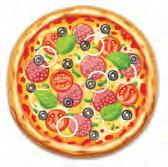







2 Diya wants to shade 3 parts of the given flower pink. She has already shaded 1 part.


a What fraction of the flower has she already shaded?
b What fraction more of the flower does she need to shade?



Jaya is in the kitchen with her parents. She is learning to cut vegetables from her father. Look at the picture and answer the questions.








1 The tomato is cut in half. Write its fraction.


2 What is cut into unequal parts? a apple b tomato c cucumber d watermelon
3 Which vegetable or fruit is one whole?
a tomato b watermelon c apple d cucumber

4 Do you think all vegetables can be cut equally? Give an example.
















































Sunny and Priya have two ropes.
Life Connect I have a short rope. I have a long rope.
Sunny says, “I have a long rope.”
Priya says, “I have a short rope.”
We measure length to see how long or short something is.
Sunny and Priya can use their hands and arms to find the length of the ropes. But their hands and arms are of different lengths. Is there a better way to measure the ropes?
They can use a pencil to measure the length of each rope.
Sunny�s rope is 4 pencils long.
Priya�s rope is 2 pencils long.
Let us use something else. How about a stick?
Sunny�s rope is 2 sticks long.
Priya�s rope is 1 stick long.

We can use other things too. We may use a book, a crayon, a spoon or blocks to measure length.
Remember!

The thing should be shorter than the thing we are measuring. But it should not be too tiny, like a grain.
Example 1: Find the length.

Think and Tell
Can we measure a tall door with a small crayon? How about with a roll of newspaper?
Bottle = 3 crayons long. Table = 3 books long.



Look at the picture. Tick () the correct answer.
a To measure the length of a tree ( ), we can use:
rope
ball
b To measure how tall a door is ( ), we can use:
Rani measured the height of her doll using crayons. How tall is her doll? Draw crayons to show.
The height of Rani’s doll is about crayons.
Ridhi measures her bottle using her pencil. The bottle is 2 pencils tall. The next day, she measures her bottle again. The bottle is 3 pencils tall.
Ridhi: How is this possible?
Mother: You must have sharpened your pencil. It has become shorter now.
Things we use to measure length can be of different lengths. We need a fixed or standard way to measure things. This helps us to get the correct measurement each time.
Centimetre
We can use a ruler to measure things in fixed units. It measures in centimetres. The short form of centimetre is �cm�.
This is 1 centimetre or 1 cm on a ruler.
This is a 15 centimetre or 15 cm long ruler.
We mostly use centimetres to measure short lengths. An eraser, a pair of scissors, a pencil and many other things can be measured with a ruler. Let us see some examples:
These marks on a ruler tell us how many centimetres long a thing is.


When using a ruler, always start from 0 cm. Never measure from the middle or the end of the ruler.
Example 2: Look at the picture. What is the length of this pen?
We can see that the length of the pen is 9 cm.
Metre
Metre is another standard unit of length. The short form for metre is �m�.
We use a metre rod or a measuring tape to measure length in metres. We use metres to measure long lengths, like a room or a piece of cloth.
A tailor measures clothes with a measuring tape.
A carpenter measures doors and windows with a measuring tape or rod.
Example 3: Which of these will we measure in metres?

A spoon can be measured in centimetres. A bed is longer than a spoon. So, it needs to be measured in metres.



Write the unit that will be used to measure the length of each object.


The average length of a small car is 3 m. How much shorter is the given car than the average length?
The car is m shorter.
The length of the mango tree leaf is 30 cm and the length of the peepal tree leaf is 12 cm. Which leaf is longer and by how much?


Weight
Heena and Amir want to check whose bag is heavier. They go to a park and put their bags on each side of a seesaw.





Whose bag is heavier?
Can we find out how heavy Amir’s bag is? Let us see!
On a seesaw, when one side is heavier, it goes down, and the lighter side goes up!

We measure weight to see how heavy or light something is.
Look at the weight balance. It is the same as a seesaw.
1 pumpkin is heavier than 1 corn cob.
Let us add more corn cobs to the other side.
The weight of 5 corn cobs is the same as that of 1 pumpkin.
Shall we add more corn cobs? Now, 8 corn cobs are heavier than a pumpkin.
We can also use blocks to check the weight of things.
Example 4: Find the weight of the carrots, using the blocks.







Trees have a big trunk of wood and many branches. Shrubs are medium sized plants. Which is lighter—a tree or a shrub?
Fill in the blank.
Weight by Standard Units
A vegetable seller is using a balance to measure the weight of some vegetables.
Look at the weight bars. Shopkeepers and vegetable sellers use weights like these on one side of the balance. On the other side, they put the vegetables that they want to weigh.
Weight bars come in grams and kilograms. Gram
A gram is a standard unit to measure weight. The short form of gram is �g�.
These are gram weights.
We use gram weights to measure light things like fruit, candy and small vegetables.
Example 5: Ramu is buying some fruits. The seller puts the fruits on the balance. How many grams of fruits has Ramu bought?
3 weight bars of 100 grams = 100 g + 100 g + 100 g = 300 g
So, Ramu bought 300 g of fruits.
Kilogram
A kilogram is another standard unit to measure weight. The short form of kilogram is �kg�.
These are kilogram weights.


We use kilogram weights to measure heavier things. We measure sacks of rice and grains, watermelons and our body weight in kilograms.
Example 6: What is the the weight of the pineapples?
1 kg + 2 kg = 3 kg
Weight of pineapples = 3 kg



Can you tell another way to measure 5 kg of potatoes with 1 kg and 2 kg weights?




Match the items with the correct units in which they should be measured.
Items
b A spoon of salt
c A sack of wheat
Units of Weight
a A basket of tomatoes kilograms grams
d Candy floss
Circle the correct weight for the given items.




Ritu has a bucket and a mug. She pours 5 mugs of water into the bucket, but it is not even half filled!
What else should I use to fill this bucket faster? Should I use a glass or a jug?
A glass or a jug—which of them will hold more water? Which of them can fill the bucket faster?
Capacity is how much liquid a bucket, a mug, a jug or any other vessel can hold. Each of them has it own capacity.
The capacity of a bucket is more than a mug. Similarly, a cup has less capacity than a bucket!
Think and Tell
What
Example 7: How many spoons of soup can this bowl hold— 40 spoons or 5 spoons?
The soup in the spoon is much less than in the bowl. A bowl can hold about 40 spoons of soup.












We can use smaller containers to fill a bigger container. This helps to measure capacity.














= jugs








Use the jug to fill the glasses. Colour to show filled glasses. How many glasses are you able to fill? Capacity = 5 glasses
So far, we have measured capacity using glasses, mugs, or jugs. We should have a standard way to measure capacity.
Millilitre
Millilitre is a standard unit to measure capacity. The short form of millilitre is �mL�.
We measure small amounts of liquids in millilitres, like a cup of tea or a spoon of cough syrup.
Earlier, the low cost method of collecting rain water was in stepwells known as Bawaris.
Example 8: Which of these are measured in mL? Tick () the correct option.
The litre is another standard unit for measuring capacity. The short form of litre is �L�.
Usually, buckets, water cans, bottles and barrels are measured in litres.


20 L


L
Example 9: A water dispenser bottle holds 20 L of water. In a day, 12 L of water is used from the bottle. How much water is left in the bottle for the next day?
Total water in the can = 20 L
Water used = 12 L
Remaining water: 20 – 12 = 8 L
So, 8 L of water is left in the bottle.
L



Circle the things that hold liquid in mL.





Kheer is a pudding made of milk, sugar and rice. Father makes kheer in a pot. How much kheer can a pot hold—500 mL or 150 L?
Draw 2 containers with different capacities. Label the containers with �More Capacity� and �Less Capacity�.
Setting: Whole class
Method:

Collaboration & Experiential Learning
Measure the Water
Materials Required: A glass, a litre bottle, a bucket and water.


Line up the glass, bucket and bottle on a table. Fill the glass with water to the brim. Pour the water from the glass into the bottle.
Count the number of glasses it took to fill the bottle. Write on the board. Now, pour the water from the bottle into the bucket.

Count the number of bottles it took to fill the bucket. Write on the board.
Discuss the findings with the class.



Circle the thing that we can use to measure the length of a lunch box.

How many cm long is the straw?
Tick () the heavy thing.
























Measure the length of the red and green strips using blocks. Which strip is longer?







Fill in the blank. Draw a container that has less capacity than the jug.
The capacity of the jug is around . (1L/ 2L)
Challenge
Tina wants to measure a piece of cloth that is 6 m long. Which of these sticks will she use if she wants to use the least number of sticks?


What is the missing weight that balances the scale? Hint: Ten 100 gram(g) weights = 1 kg




The students of Class 2 go to a summer camp. They learnt how to stay with each other and share things. Look at the picture and answer the questions.


1 Which tent is the farthest from the campfire? a purple tent b orange tent c blue tent
2 Genie walks to her tent which is 15 m away and Jai walks to his tent which is 21 m away. Who walked more? How much more?

3 Genie walks from her tent to the campfire which is 15 m away and then back to her tent. What distance did she walk?

4 Have you ever been camping? Why is it important to share things with others at the camp?

















































Mother and brother are making a rangoli design. Sarita also wants to join them.
Mother: Sarita, draw a straight line and then a curved line on top.
Sarita: I do not know how to draw these lines.
Let us help Sarita understand these types of lines.
There are 3 kinds of straight lines.
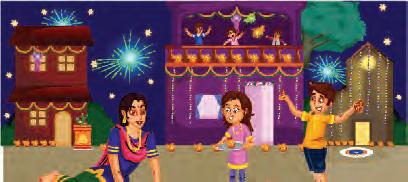

Sleeping line
Slanting line
You can use a ruler to draw these lines. They do not bend.
These are curved lines: Standing line
Curved lines bend. You cannot draw them with a ruler.
Example 1: Read the word: CORAL
Which letters of the word have straight lines? Which ones have curved lines? Fill in the table.



Trace the shape using straight and curved lines. a b c d
d Curved lines 2
3
How many of each type of lines do you see in the picture?
a Sleeping lines
c Slanting lines
b Standing lines
Look how the butterflies fly to the flowers. Trace and write the kind of lines they make on their way.
a
b lines. lines.
Read the word: LATIN. Choose and write the letters.
a Letter with only a standing line.
b Letter with sleeping and standing lines.
c Letter with slanting and standing lines.

Sarita went into her house and saw that her dad had bought some photo frames.
Sarita: These photos look so good!
Dad: Different shapes of the photo frames make these look even better.


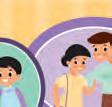




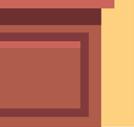
These frames show different flat shapes. Square, rectangle, circle, triangle and oval are examples of flat shapes.
Features of Flat Shapes
Now, look at this shape: It is a triangle. 3 sides, 3 corners
Are there more flat shapes? What about a star and a heart shape? Are they flat shapes too?
Example 2: Look at the picture. Count the number of each flat shape.
Triangle = 1; Rectangle = 2; Circle = 3; Square = 4
Let us learn how to make flat shapes. We are using some ice cream sticks.
Triangle 1 sleeping and 2 slanting sticks
2 standing and 2 sleeping sticks
Square
Rectangle
Circles and ovals


Can we make a circle or an oval with ice cream sticks?
All four sticks need to be of the same length.
2 standing and 4 sleeping sticks
The opposite sticks need to be of the same length.
They have curved lines. We can use a thread to make them.
A square is also a rectangle! Its opposite sides are of equal length.
We can also draw flat shapes on dot paper. Let us see how shapes can be drawn on dot paper. Triangle



Complete the shapes by joining the dots. Name the shapes.

Raha has travelled to many countries in the world. She has the following visa stamps on her passport. Name the shape of each stamp.
Look at the pictures. Count the number of squares, rectangles, triangles, circles and ovals. a b c
Write True or False.
a A square has 3 sides and 3 corners.
b A rectangle has 4 equal sides.
c Both a circle and an oval have 0 sides and 0 corners.
Draw a figure using at least 3 shapes and colour them with different colours.
Harsh goes to the room to play with his brother. These are the toys they are playing with—
Mom: Harsh, do you know the shapes of these toys? What shape do you see in these toys?
Harsh: Hmm! They look like squares, rectangles and triangles. Are they flat shapes too?
The toys are solids. We can hold them in our hands. They are not made or drawn on flat surfaces. The shapes of these toys are called solid shapes. Corner Edge Face
Let us learn more about solid shapes and their features.
This block is a cube.
A cube has 6 faces, 8 corners and 12 edges.
This block is a cuboid.
A cuboid has 6 faces, 8 corners and 12 edges.
The drum is a cylinder.
A cylinder has 3 faces, 0 corners and 2 edges.
Cube
The stack is a cone. A cone has 2 faces, 1 corner and 1 edge.
Cuboid
The ball is a sphere.
A sphere has 1 face, 0 corners and 0 edges.
Example 3: Name the solid shapes of these objects.
Coffee mug
Birthday cap
Think and Tell!
Two cylinders are put on top of each other. What solid shape will they make?
This coffee mug is a cylinder. The cap is a cone.
When you draw or trace around a solid shape on a sheet of paper, you get a flat shape. Let us look at the tracing of some solid shapes below and see which flat shapes they create.

Think and Tell!
What other shape do you get on tracing a cone and a cylinder?
Example 4: Which object should we trace to get a square?




Cap Ball Dice
The cap is a cone, and the ball is a sphere. We will get a circle on tracing them. The dice is a cube. We can get a square by tracing one of its sides.
Example 5: What shape does the shadow of each object make?










Jon made a tower with his blocks. Count and write down the number of solid shapes he used in this tower.
Make a solid using any two solid shapes put together. Draw its shadow in your notebooks.
Joy’s father is putting a new sheet on the bed.
Joy: Wow! So many squares.
Father: Yes, Joy. These are making a lovely pattern!
Joy: What is a pattern?
Repeating Patterns

The design on this bedsheet is made up of 3 colours. They are repeated one after another in every line.
Light Green Grey Yellow Light Green Grey Yellow
A shape, number or design that repeats itself in a fixed order makes a pattern. Let us see some more patterns.
This pattern repeats a green triangle and a yellow rectangle, one after the other.
Now, let us see a letter pattern. Here, the letters A and B are repeated.






We can also make patterns with turning shapes. This pattern repeats a blue and a green triangle. The blue triangles are the right way up but the green ones are upside down.

Example 6: Look at this pattern. What is repeated in this pattern?
In this pattern, 2 crosses are repeated after every 2 right arrows .
Patterns
Joy now knows what patterns are. He can make patterns too! One day, he was making a pattern with his happy and sad stickers.
His sister, Riya, sees this. “Let us have more happy faces in the pattern than sad ones,” she says.
“How? Will it still be a pattern?” Joy is not sure.
“Yes, it will be. Let me show you,” says Riya.
Joy’s pattern is made up of happy and sad stickers. But this is a different pattern.
Honeycombs are the best example of patterns in nature.
1 happy 1 sad 2 happy
1 sad 3 happy This is called a growing pattern.
Let us look at another growing pattern. Here, we are adding 1 orange square to each next part of the pattern.
Example 7: Is this a growing pattern. How?
Yes, this is a growing pattern. The pink squares are increasing by 1 each time.
Patterns
Joy went to the bookstore with his sister, Riya. He saw a diary where designs were made using numbers.
Joy: Look at this diary. Is this also a pattern?
Riya: Yes, Joy. You can use numbers as well to make patterns. Let me show you!
Chapter 12 • Shapes and Patterns
These are some patterns using numbers: 1 1 1 2 2 2 3 3 3 3
Here, 1 and 2 are repeating. Here, 3 is repeated with a turn. 3, 6, 9, 12, 15—Here, 3 is being added each time.
Example 8: What will come next in this number pattern? 2 4 2 4
This pattern repeats 2 and 4. So, the next two numbers will be 2 and 4.



Which of these options show a pattern? Name the type of pattern. 1 Do It Yourself 12D
b
c
2, 3, 4, 2, 3, 4

e Extend the given patterns. 2


c d 1, 4, 7, 10, , ,
e f 1, 3, 2, 1, 3, 2, , ,
Riya’s stickers: Joy’s stickers: 3
Joy and Riya have some happy and sad face stickers. They pasted them in different ways. Who has created a pattern with the stickers?

Look at the growing pattern. Colour the blank balls.
Look at the growing pattern. Fill in the blank.
In this pattern, we are adding square/s each time.
In this pattern, we are adding 1 (square/circle) each time.
In this pattern, we are adding 1 square and triangle each time. Fill in the blanks to complete the pattern.

a Pattern
Setting: In groups of 4
Method:
Collect leaves, erasers, sharpeners, bottle caps or any other such small objects in your group.


Two members will dip these objects in paint and stamp them on paper to make a pattern. You may create a repeating or a growing pattern.
The other two members will cut the shapes formed.
Use this to decorate your class.

Take turns in your groups. Create as many patterns as you can.



Choose the correct name from the box for each line.
Curved line Standing line Slanting line Sleeping line 1
2
Trace to draw the flat shape. Then, write the name of the shape you get.
4
Write ‘GROW’ if it is a growing pattern. Write ‘NO’ if it is not.
6
Write the kinds of lines you see in these letters—standing, sleeping, slanting and curved.
Draw and colour the shapes to complete the next part of the pattern.
Look at the pictures. Count the number of squares, rectangles, triangles, circles and ovals.
Draw the next part of the growing pattern.

a Which of these solid shapes will give us a square, each time when it is traced?
b Which of these solid shapes can give us a circle, when traced?
c Which of these solid shapes can give us a rectangle, when traced?
a Draw a pattern of these shapes.
b Draw a growing pattern with these shapes.

Meera makes garlands outside a temple. Jay is helping her make the garlands. Jay made a pattern in the garland. It starts with 1 flower and 1 leaf, and grows by 2 flowers at each step. Draw the pattern that Jay made up to 5 terms.
Sowing seeds is mainly done using seed drills. The seeds are sown in pairs, with 1 pair in the first row, 2 pairs in the second row and so on. Write the number pattern formed for the first 10 rows. 2



There was no electricity in the house. Jay and Neha couldn�t sleep, so they started making animal shadows using their fingers. They played with them and narrated a full story to the whole family. Look at the picture and answer the questions.
1 Which animal shadows are there in the picture?
a Rabbit

b Dog c Snail d All
2 How many animal shadows are there?
3 What shadow/s will be formed if we shine some light on a cone?
4 Make animal shadows using your hands and write a story using them.




















































Mia was getting ready for her drawing class. It starts at 5 o’ clock in the evening.
Mia: Mother, am I on time?
Mother: Yes, it is not yet 5 o’ clock. It is half past 4.
Mia: Mother, what do you mean by half past?
Mother: Let me show you how to read the half past time.
Time on a Clock
We use a clock to read time. A clock has numbers 1 to 12 written on it.
The short hand tells us the hour, and the long hand tells us the minutes.
Minute hand Hour hand
The minute hand is on 12.
The hour hand is on 5.
This is 5 o’ clock or 5:00.
The minute hand is on 12. The hour hand is on 10.
This is 10 o’ clock or 10:00.
Now, let us see how to read time to the half hour. Minute hand
The minute hand is on 6.
The hour hand is between 4 and 5.
So, this is 4:30 or half past 4.
The minute hand is on 6.
The hour hand is between 7 and 8.
So, this is 7:30 or half past 7.

The time is 12:30
The
is 6:00

The long hand is the minute hand and the short hand is the hour hand.




a The long hand is the hour hand.
b The minute hand will be on 12 when the time is 12 o’ clock.
c The hour hand will be on 4 when the time is 2 o’ clock.
We should always do our work on time. Draw clocks to show the time for 4 different activities that you do during the day.
Mili was excited about her summer holiday.
Mili: Mom, when will the vacation start?
Mother: It will start in May.
Days and Months
Mili’s birthday is in April.
Mili: Will my birthday come after the holiday?
Mother: No. May comes after your birthday.
Let us help Mili understand the days of the week and the months of the year.
Days of the Week
There are 7 days in a week.















































Let us understand yesterday, today and tomorrow using the days of the week.



















If today is a Monday, tomorrow will be a Tuesday.
If yesterday was a Sunday, today is a Monday.
Months of the Year
There are 12 months in a year. The year starts in January and ends in December.
Look at the calendar.
A calendar shows the year, months, days and dates.
There are 30 days in April, June, September and November.
There are 31 days in January, March, May, July, August, October and December.
February has 29 days in leap year. February has 28 days in non-leap year.
There are 30 + 31 = 61 days in November and December.
• There are 365 days in a year and 366 days in a leap year.
• A leap year comes every 4 years. February has 29 days in a leap year.

Example 1: Read the calendar given above. Answer the questions.
1 Which is the first month of the year? January
2 Which is the last month of the year? December
3 Which month comes after March? April
Example 2: Fill in the blanks.
1 The months with only 30 days are April, June, September and November.
2 There were 29 days in February 2024.



1 Do It Yourself 13B
Fill in the blanks with the correct answer.
[Monday, Tuesday, Wednesday, Thursday, Friday, Saturday, Sunday]
a Thursday comes after .
b comes before Friday.
c lies between Monday and Wednesday.
d If today is Monday, tomorrow will be .
e If today is a Thursday, yesterday was a .
Look at the calendar given in the lesson. Write True or False.
a There are only 30 days in the month of August.
b January and December each have 31 days.
c There are 7 months with 31 days.
The Hindu calendar is based on the cycles of the moon. Twisha’s birthday comes in Magha (month) as per the Hindu calendar. Twisha’s birthday is in the first month of the year. This year, her birthday is before Sunday and after Friday.
a Which month is Twisha’s birthday?
b Which day is Twisha’s birthday?
4
Saina goes to an orphanage every Saturday. She goes to an old age home every Sunday. Which are the days in the week that Saina does not go to the orphanage or old age home?
Seasons and Festivals
Mili was packing her bag for the trip.
Mili: Do I have to take a sweater for the trip?
Mother: No, it is summer. We do not need sweaters.
Mili: Which months are summer?
Let us help Mili with the seasons throughout the year. There are 5 different seasons in India. They are winter, spring, summer, monsoon and autumn.
Mili also wants to know about the different festivals that come in different seasons:
Mahavir Jayanti Dussehra Holi Raksha Bandhan Christmas
Ram Navami Diwali Baisakhi Janmasthami Makar Sankranti
Independence Day Vasant Panchami
Republic Day
A festival like Eid is not seasonal. It does not fall in a particular season. Its timing keeps changing every year.
Is there any other festival you celebrate at home? Which season does it fall in?




Match the correct months with the seasons. 1
Fill in the blanks.
a Independence Day is celebrated in the season.
b The season comes after spring.
c Autumn comes after the season.
d Christmas is celebrated in the season.
Write True or False.
a Spring comes after summer.
b Dussehra is celebrated in the summer season.
c Winter comes after autumn.
Answer the following questions.
a Are Independence Day and Republic Day celebrated in the same season?
b How many months of winter are there?
c From which month does summer start?
Era spends her summer holidays with her grandparents every year. Which are the months that Era spends with them?
Timetables
Let us look at
Below is Noni’s timetable at school. There are 6 periods every day.
DAYS
Monday English Science EVS Maths Craft Sports
Tuesday Sports English Science Computer Maths Maths
Wednesday Maths Art English Music EVS Science
PERIODS 1 2 3 BREAK 4 5 6
Thursday Maths Maths Art English Science Hindi
Friday Dance Science Maths EVS English Hindi
Saturday HOLIDAY
Sunday HOLIDAY
Noni has to pack her bag for Thursday. She will take her Maths book, Art book, English book, Science book and Hindi book to school that day.
Example 3: Look at Noni’s timetable. Choose the correct answer.
1 On which day of the week does Noni have her Computer class? a Tuesday b Monday c Friday
2 Noni has her dance class on . a Wednesday b Saturday c Friday Friday
Estimating Time Taken
We take different amounts of time to do different activities. Some activities take hours, some take days and some take months.




Seed to grow into a plant Winter holidays Doing homework Brushing teeth
Time Duration
Mia’s mother goes to drop Mia off at school. She starts at 8:00 and reaches the school at 9:00. She then goes to the market and gets there at 9:30.

Start at 8:00
Reach school at 9:00 Reach market at 9:30 1 How much time did Mia’s mother take to reach the school? 1 hour 2 At what time did Mia and her mother leave their house? 8:00 3 At what time did Mia’s mother reach the market? 9:30
If they started at 9:00, at what time would they reach the school? 10:00



Read Noni’s timetable given on page 150 and answer the questions.
a How many Maths classes does Noni have on Tuesday?
b How many days in the week does Noni have the Science class?
c How many Sports classes does Noni have in a week?
Jia wakes up at 7 o’ clock in the morning every day. She takes around 2 hours to get ready for school. At what time does Jia go to school every day?
A train timetable is a list of stations a train stops at and its scheduled time. The table below shows the timetable of a train. Look at the table and answer the questions.
a The train reaches Station D at .
b The train reaches Station at 2:00.
c The train reaches Station C at o’ clock.
d The train reaches Station B at half past .
Fill in the blanks with hours, days or months for the given activities.
a Filling a large water tank . b Knitting a sweater .
c Growing a seed into a plant . d Yoga class . Make your own class timetable. Make it interesting and colourful.
Mother asks Mili to go to the grocery shop to buy rice for dinner.
Mili: Mother I don’t know how to go to the grocery store from our home. Mother: It�s simple to find your way around through directions.
Directions
Let’s look at a map and learn directions on the map. We use a compass. A compass is a tool for finding directions. The red line is the path taken by Reena to reach the school. Reena goes straight, then right, then right, then straight and finally reaches the school. Words like left, right and straight help us understand the directions to reach a place. A set of directions gives us a particular way to get from one place to another.




We use different mobile apps for locating directions to a place.
There are four major directions—north, south, east and west. If we stand facing the east, then north will be on our left side, and south will be on our right side.
Example 4: Look at the map given above and answer the questions.
1 What is to the North of the restaurant? Hospital
2 What is to the East of the pet shop? Bakery
3 What is to the East of the hospital? Flower shop




Do It Yourself 13E
Look at the map and use the words east, west, north and south to fill in the blanks. Use the compass for reference.




a The cafe is to the of the pharmacy.
b Where is the museum? It is to the of the school.
c Draw a line to show the route from the cafe to the museum.
Draw the map to show the distance from your classroom to the main gate of your school.
Lab Collaboration & Art Integration

Setting: In groups of 5
Material required: One sheet of white chart paper
Method:


1 Ask each group to choose 1 festival, like Makar Sankranti, Eid, Christmas, etc.











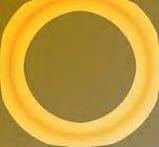



2 Ask them to go to the library or use the internet at home to search for facts about the respective festivals.
3 The groups will make a collage of various things which are done in the chosen festival.

4 Arrange the festivals in the order of the months they occur in.

5 Each group will present their collage.


Choose the correct time from the box and write the time in words.
4:00 2:00 10:30 11:30
The table below shows Neha’s father’s schedule. Read and follow the instructions. Has breakfast every day at 9 o’ clock. Leaves for the office every weekday at 10:30. Goes for a walk every Monday, Wednesday and Friday. Goes to the market every Sunday.
a Show the breakfast time on the clock. b Draw hands to show the time he leaves for the office.
c On which days does Neha’s father not go for a walk?
d Where does Neha's father go every Sunday?
e Neha�s father has a habit of walking, as it helps him remain fit. Does he go for a walk on Thursday?
c How many Mondays are there in this month? Read the calendar and answer the questions: 3
a How many Saturdays are there in this month?
b How many days are there in this month?

4
Look at the picture in the seasons and festival section given above and answer the questions.
a The year begins with the season.
b Which season comes after the summer season?
c Which months does the spring season fall in?
d and months are the monsoon season.
Write 2 activities that take hours, days and months.
Jantar Mantar is a place where time is read by looking at the shadows of the arms of the sundials placed. Tanya goes to Jantar Mantar in Jaipur. She sees the shadow of the sundial�s arm and realises it is twelve thirty. Draw the time seen by Tanya on the clock.
Read Sunita’s daily timetable and answer the questions.
7:00 8:30 9:30 1:30 4:30 8:30 10:00
Wake up Have breakfast Leave for office Come home Have tea Have dinner Go to bed
a At what time does Sunita have her dinner?
b What does Sunita do at 9:30?
c What time does Sunita go to bed?
at the map and answer the questions.



a From the Start, go north 3 squares. Where are you now?
b Go east 3 squares from the position you reached in part a. Where are you now?
c Give directions to get from the dentist to the pool.

Which month am I? I am the month, starting with the first letter of the alphabet. I have the same number of days as the month before me.
Sanya is walking to her house in the morning. The sun is to her right. She turns right twice and then turns left once. What direction is Sanya facing? 1 2


Today is Raina�s day out at the zoo. Look at the map to help her find her way in the zoo.

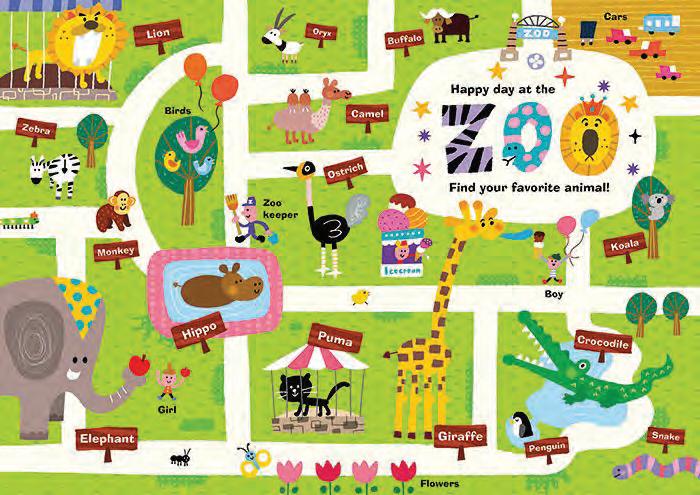
1 You enter the zoo from the zoo gate and go left. What do you see? a Car parking b Giraffe c Hippo d Elephant

2 Suppose you go and stand facing the camel. In which direction are the birds?
3 What is to the east of the ostrich?
4 Write the directions from the elephant to the cafe.
5 Should we tease animals in the zoo? How should we take care of them?


















































Riya goes to a shop with her mother. She wants to buy a storybook.
Riya: I like this book. How much does it cost?
Shopkeeper: 100 rupees.
Riya’s mother pays for the book. Riya is very happy.
Indian money comes in notes and coins. They can be rupees or paise. Paise come only in the form of coins. Rupees come both in the form of notes and coins. We use the ` symbol to show the amount in rupees.
There are some coins that were used in the olden days. They are no longer in use. Let us see some of those.
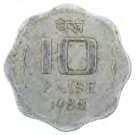
1 rupee is equal to 100 paise.





So, 1 rupee is equal to two 50-paise coins.
Indian notes are made of a special paper. It is called ‘rag paper’. This paper is strong and does not tear easily.
2 rupees is equal to four 50-paise coins.
Example 1: Look at the price and circle the correct note or coin.





Look at the things. Tick () if the note or the coin shows the correct cost. 1











Vegetable soup is very good for health. It contains nutrients from all the vegetables. Rama sells the each cup for `20. Tick the coins that show the amount.
Write if true or false.
a There is a `15 coin.
b There is a `300 note.
c There is a `2 coin.
d There is a `10 coin and note.
c Tina bought a red pen for `10. 4
Read the statement and match it with the correct note.
a Riya bought a box of crayons for `100.
b Raj bought a packet of balloons for `50.
The next day, Riya goes to another shop. She wants to buy a new lunch box from here.
Riya: I like this lunch box. How much does it cost?
Shopkeeper: This lunch box costs `50.
Riya is confused about how she should pay for it. She does not have a 50-rupee note.
Let us see the different ways in which Riya can pay for the lunch box:
1 Five `10 notes.
2 Two `20 notes and one `10 note.
3 Three `10 notes and one `20 note.
Example 2: Sam’s mother buys a doll for `75. Write 2 ways in which she can pay.




Fill in the blanks with the correct answers.
a For `20 we can exchange `5 coins.
b For `100 we can exchange `50 notes.
c `10 notes make ₹70.
How will you pay for crayons worth `56, using `10 notes and `2 coins? Draw.
Ruhaan has to buy a crayon worth ₹200. How can he make up the amount using `20 notes or `10 notes?
Sana visited the Red Fort with her mother. Red Fort is a historical fort in Delhi which was the main residence of the Mughal emperors. The ticket cost them ₹70. Write 2 ways in which Sana can pay for the tickets.
Do you remember that Riya has to pay ₹50 for the lunch box? Suddenly, Riya remembers that she also needs to buy a water bottle. The water bottle costs ₹90. Riya needs to pay now. Let’s see what she has to pay for both items!

`50 for a lunch box `90 for a bottle
Cost of lunch box
Cost of water bottle
Total amount
So, Riya will pay ₹140.

Always add the costs of different objects to find the total cost.
The next day, Riya goes to the shop with one ₹20 note. She buys a packet of biscuits for ₹15. She gives the ₹20 note to the shopkeeper. How much money will Riya get back? Let us see. `50 + `90 `140
Which notes can Riya use to make the payment of 140 rupees?
Money Riya paid the shopkeeper: ₹20
Total cost of the packet of biscuits: ₹15
₹20 is more than ₹15.
So we subtract ₹15 from ₹20 = 20 – 15 = ?
Riya gets back ₹5 from the shopkeeper. Here, ₹5 is called the change which Riya gets back from the shopkeeper.
Example 3: Ram buys a new cap for `35 and crayons for `40. How much money will he pay?
Cost of new cap
Cost of crayons
Total amount paid
So, Ram will pay ₹75. `35 + `40 `75
Error Alert!
To find the amount of change, the cost of the item is subtracted from the amount that is paid to the shopkeeper.







The pictures show the price of items in a shop. Look at the pictures and answer the questions.
a Arun buys 1 ice cream and 1 packet of chips from a shop. How much money will he pay altogether?
b Nisha has `87. She buys a cap. How much money is she left with?
c Tina buys a toy car. She gives `90 to the shopkeeper. How much change will she get back from the shopkeeper?

Riya’s uncle has a farm. On the farm, there are many animals. Read the cost of a meal for each animal. Then, answer the questions.
`75 `36 `20 `49
a What is the cost of the cow’s meal?
b How much will Riya’s uncle pay for 2 goats’ meals?
c How much will the meals of 3 hens cost?
Write a word problem on adding two money amounts.
Setting: In groups of 5
Material required: Pots, plants Selling Plants Math Lab Experiential Learning & Value Development
Method:

Work together to put plants in pots.

Sell the plants in your neighborhood or at a school fair.
Count the money you make and use it to buy books.

Donate the books to an orphanage.
Chapter Checkup


Draw rectangles for the notes and circles for the coins to show the amount.
a Show `10 using `1 coins.

b Show `50 using `10 notes.

It’s time for Kriti to prepare yummy hot upma. She goes to the market and buys different ingredients. Look below and answer the questions.
semolina vegetables curd curry leaves PRICE `70 `65 `22 `5
a What is the price of curry leaves?
b How much will Kriti pay for semolina and curd?
c Kriti purchases the vegetables and gives `80. How much money will she get back?
Fill in the blanks.
a Three notes of `10 will make .
b Tina has five coins of `1 each. She has ` in all.
c Raj bought a pencil for `10 and an eraser for `7. He paid ` to the shopkeeper.
d My mother gave me `35 and I purchased a candy for `8. Now, I have ` left.
Ravi has a habit of saving money in his money bank to buy gifts for his family. Ravi has saved `15. He wants to save `10 more. How much money will Ravi have after saving?

Priya had `74 and her father gave her `50 more. How much money does she have now?
Raj has `30. He buys a toy car for `15 and a ball for `10. How much money has Raj spent in total?
Your brother had `67. Then he gave `35 to you. How much money does he have left now?
Rishabh and his friends wants to donate some sweets to the orphanage. The sweets would cost them `300. If they have `130, how much more money do they need to buy the sweets?

Aanya has `25. She wants to buy a toy that costs `15 and a box of chocolates that costs `8. Aanya’s friend offers her a deal: if she helps with some chores, the friend will give her an extra `5. Should Aanya accept the deal? Why or why not?
Nita says she has three different coins in her bag that add up to `17. Rita says she also has three coins in her bag but they add up to `20. Which coins do Nita and Rita have in their bags?



Kathputli is an art of telling stories using string puppets in Rajasthan. Mira and her two friends went for a puppet show. Her mother gave her three `100 notes. She buys tickets for `200. Answer the questions.

1 How much money did Mira’s mother give her?
2 Draw rectangles to show the money that Mira’s mother gave her.


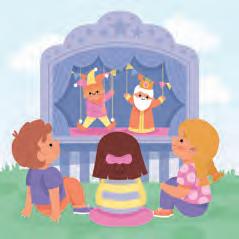
3 How much money is she left with, after buying the tickets? a `100 b `200 c `300 d `50

4 Have you ever visited a puppet show? Draw a picture.
















































It is Preeti’s birthday. She went to the market with her father to shop for her birthday party.
Father: Please choose the things that you want to buy.
Preeti: I need party hats, candles, balloons and many other things. Here are the items Preeti buys for the birthday party.

Preeti came home after shopping.
Preeti: Hello mother! I am home.
Mother: Please count all the items you bought and put them away properly. Let us help Preeti count!



We can help Preeti count by drawing a table to show the number of each item.



A table helps us read the data easily. 5 4 6 3

Example 1: A farm had four different animals. Count and write the number of each animal on the farm.

We count the same kind of objects when counting data.



Shelly went to the zoo with her father on Sunday. She saw the following animals in it. Count the number of each type of animal she saw.
Pottery is an art where clay is used to make vessels. It helps the mind and body work together. Rina made the given number of pots in her new pottery class. Fill in the blanks.
Rashi loves collecting things from her garden. This is what she has collected on 3 days.
a Count and write the number of items collected on each day.
b On Monday, Rashi plucked 4 flowers from the plants. Has she done the right thing? Why or why not?
Preeti’s mother decided to go and buy some fruits and vegetables. She asked Preeti to quickly make a list of fruits and vegetables she needed to buy.
Here is the list of fruits and vegetables:
Preetiʹs mother wants to buy double the quantity of each item for a party. How many of each item would she buy?
The list will help Preeti’s mother to remember all the items she needs to buy from the market.
Example 2: Palak needs to buy 1 packet of sugar, 2 cakes of soap, 10 spoons and 1 packet of salt. Help her to make a list of all the items.





Do It Yourself 15B
Nisha and her mother want to bake a cake for her grandmother�s birthday. Look at the pictures and make a list of all the things she has to buy.












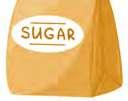

Tina needs to buy a few things for her art class. She needs 1 drawing book, 2 bottles of paint, 3 paint brushes and 5 sheets of white paper. Make a list of all the things she needs.
Meena went to the market to buy 1 bottle of shampoo, 1 packet of sugar, 3 plates, 1 packet of chilli powder and 2 packets of biscuits. Make a list of all the things she bought.
Packing your own bag for school is a good habit. Make a list of 5 things that you put in your school bag every day and how many of each there are.
Remember the list of fruits and vegetables Preetiʹs mother needed?
Let us find some information from the list.
a How much potato did she need? 7 kg
b Which is more: apples or potatoes? Potatoes
c Which vegetable did she need the least of? Mangoes
d Name the fruits needed. Apples and Mangoes
Example 3: The table shows the number of legs of different creepy crawlies. Creepy Crawlies Beetle Centipede Spider Ant
a How many legs does a spider have? 8 legs
b Which creepy crawly has the most number of legs? Centipede
c Which two creepy crawlies have the same number of legs? Beetle and Ant



Reading books is a good habit. Pooja made a list of the number of pages she read from a book on three days. Read the table and fill in the blanks.
a The most number of pages were read on .
b The number of pages read on Day 1 is .
c The number of pages read on Day 3 is (more/less) than the number of pages read on Day 1.
The table shows the number of chocolates sold on four days. Read the table and write if True or False.
a The most chocolates were sold on Day 2.
b 16 chocolates were sold on Day 4.
c Only 6 chocolates were sold on Day 3.
d More chocolates were sold on Day 1 than on Day 4.
There was a sports event at the school. Here is a list of how many students participated in the different sports. Read the table and answer the questions.
a How many students participated in football?
b Which activity had the most students taking part?
c Was there any activity where only ten students took part? If yes, name the activity.

4
Raman likes bird-watching from his garden. Read the table showing the number of birds he counted in different seasons. Summer Rainy Spring Autumn Winter 15 8 40 20 10
a In which season does he count the most birds?
b In which season does he count the least birds?
c How many birds does he count altogether in Winter and Summer?
d How many fewer birds does he count in Autumn than in Spring?
Pictograph
On Preeti’s birthday, they played a game, in which all her friends had to blow up as many balloons as they could.
Preeti made a table to record the data.
Name of Friends Number of Balloons
5
3
2
4
7
Let us learn how to show the above data using a pictograph. A pictograph shows the data using pictures.
Name Number of Balloons
Rohan
Sia
Rahul Prishi
Param
2 Write the names in Column 1.
From the table we see:
1 Make a table and write the headings.
3 Draw pictures in Column 2 to show the balloons blown by each child. Draw 1 picture for 1 balloon.
1 Param blew the largest number of balloons.
2 Rahul blew the smallest number of balloons.
3 Sia blew 3 balloons.
A pictograph helps us to see the data clearly.
Example 4: Read the pictograph showing the number of flowers sold in a flower shop. Answer the questions.
Flower Number of Flowers Sold
Roses
Daisies
Orchids
Carnations
a Which flowers were sold the least? Daisies
b Which flowers were sold more than carnations? Roses
c How many orchids were sold? 5



The table shows the stationery items bought by students of a class. Draw a pictograph to show the data. [1 = 1 student]
Sahil went to a market to buy vegetables. Read the pictograph and answer the questions.















a Which vegetable did Sahil buy the most of?
b How many mushrooms did he buy?
c Which did he buy more of—mushrooms or tomatoes? How many more?

The table shows the number of flowers that grew at Sara’s house from January to April.
Month Number of Flowers
January
February
March
April
a Which month had the most flowers?
b Which month had the least flowers?
c How many flowers grew in January?
d What was the total number of flowers in the 4 months?
Ask any 5 friends about the number of family members living in their houses. Draw a pictograph to show the data in a table.
Math Lab
Setting: In pairs
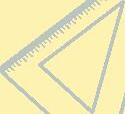
Collaboration & Experiential Learning
Materials: Pencil box of each partner, notebook and pencil.
Method:

1 Each partner will check the otherʹs pencil box.
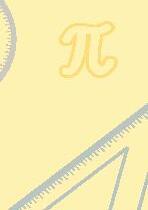
2 In your notebook, make a list of all the items in their pencil box.







Class 2 students have these items. Look at the list and answer the questions.
a How many students have crayons?
b How many pencils are there in all?
c Which item do the students have the least of?
d Which item do the students have the most of?
a How many bugs are there?
c Which insect are there the most?
b How many bees are there?
d Which two insects are equal in number?
Mona went to a toy shop. She bought 3 green balls, 4 red balls, 2 dolls and 1 car.
a Make a table to show the things that she bought.
b Write the total number of things she bought.
Suveera and Inaaya sell sandwiches in their summer break to collect money to donate to a school for the blind. Read the pictograph and answer the questions.
Day Number of Sandwiches Sold
Monday
Tuesday Wednesday Thursday Friday
a How many sandwiches were sold on Thursday?
b On which day were more sandwiches sold—Monday or Friday? How many more?
c How many sandwiches were sold in the week?
A survey was done where a few students were asked their favourite colour. The data is given below. Draw a pictograph to show the data. Draw a box to show 1 colour. blue, red, blue, blue, red, green, blue, yellow, blue, green, blue, blue, green, red, yellow, yellow, green, yellow, green, green, green

1 Aadya loves watching butterflies. Count the different butterflies she saw today. Tick ( ) the INCORRECT options.
a There are 6 blue butterflies.

b There are 5 yellow butterflies.
c The number of red butterflies is 3 less than the number of blue butterflies.
d The number of red and yellow butterflies is the same.

2 Aadya draws a pictograph for the above data. If she draws 1 picture to show 2 butterflies, how many pictures will she draw to show the blue butterflies?

Value Development



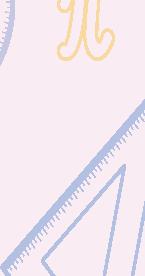
Sona and her friends are cleaning the beach today.


















Working with a garbage bag
Sweeping with a broom
Wearing a cap or hat


1 Look at the picture and draw a pictograph for their activities. 1 child = Activities
Number of Children
2 How many children are carrying a garbage bag?

3 How many children are wearing a hat?

4 Is what Sona and her friends are doing important? Why or why not?
Name of the Student: Time: 1 Hour
1 Write the multiplication facts for the given set of pictures.
2 Multiply and complete the crossword puzzle.
3 Colour the boxes to complete the colour pattern.
4 Colour the shapes to show the fractions. A one-fourth B two-thirds
5 Circle the pencils to make 6 groups of 2. Complete the division statement.

6 Draw a pictograph to show the given data. Use to show each vegetable.
7 What is the weight of 2 drums? = = cubes
8 How many of each shape do you see in the picture?
A Square:
B Rectangle:
C Triangle:
9 Tick the notes and coins to make ₹16.
10 Read the clock showing the time 10:30. Find the error.
Do It Yourself 8A
1. a. 3 × 6 = 18 b. 3 × 5 = 15 c. 3 × 3 = 9 d. 3 × 9 = 27
2. a. 12 b. 24 c. 15 d. 21, 27 e. 12, 15, 18 f. 18, 21, 24
3. a. 18 b. 27 c. 15 d. 24 e. 30 f. 12
4. a. 6 b. 10 c. 2 d. 9 e. 8 f. 3
5. a. 3 × 8 = 24
b. 3 × 4 = 12
c. 3 × 10 = 30
Do It Yourself 8B
1. a. 4 × 3 = 12 b. 4 × 8 = 32 c. 4 × 2 = 8 d. 4 × 6 = 24
e. 4 × 9 = 36 f. 4 × 1 = 4 2. a. 20 b. 12 c. 40
3. a. fives b. tens c. nines d. fours e. twos f. sixes
4. a. 4 × 7 = 28
b. 4 × 9 = 36
c. 4 × 4 = 16
Do It Yourself 8C
1. a. 6 × 7 = 42 b. 6 × 5 = 30 c. 6 × 4 = 24 2. a. 36
b. 18 c. 30 3. a. 42 b. 24 c. 48 d. 60 e. 18 f. 54 4. a. 5 b. 7 c. 9 d. 2 e. 8 f. 3
Do It Yourself 8D
1. a. 6 b. 2 c. 0 2. a. 48 b. 99 c. 82 3. a. 20 × 4 = 80 b. 34 × 2 = 68 c. 44 × 2 = 88 4. 13 × 3 = 39
Do It Yourself 8E
1. a. 96 b. 96 c. 156 2. a. 72 b. 90 c. 366 d. 276
e. 295 f. 168 3. 6; 78
4. No; on multiplying 41 and 6, we will get 6 at the ones place.
5. 6 tens
Do It Yourself 8F
1. 490 candies 2. 184 seats 3. 312 pins 4. ₹510
Chapter Checkup
1. a. 24 b. 15 c. 6 d. 3 e. 9 f. 30
2. a. 36 b. 32 c. 20 d. 24 e. 28 f. 40
3. a. 7 × 6 = 6 × 7 = 42 b. 6 × 10 = 10 × 6 = 60
c. 6 × 5 = 5 × 6 = 30 4. a. 74 b. 90 c. 148 5. a. 100
b. 190 c. 282 d. 168 e. 410 f. 138
6. 42 runs 7. 112 dancers 8. 510
Challenge 1.
2. Answers may vary. Sample answer. A vegetable vendor sells 5 baskets of tomatoes, and each basket contains 42 tomatoes. How many tomatoes does he sell?
1. Answers may vary. Sample answer: To keep ourselves cool in summer. 2. a. 5 3. 81 cups 4. 81 × 5 = 405
5. Answers may vary.
Do It Yourself 9A
1. a. b. c. 2. a. 3 b. 4 3. a. 2 bananas b. 3 cupcakes
4. 4 mangoes
Do It Yourself 9B
1. a. 3 children b. 7 children c. 2 children
2. a. 12 ÷ 3 b. 15 ÷ 5
3. a.
5 – 5 = 0 10 – 5 = 5
1
4. a. True b. False c. False
Do It Yourself 9C
1. 4 × 3 = 12, 12 ÷ 4 = 3 2. a. 20, 20 b. 6 c. 28, 4
3. a. 8 ÷ 4 = 2, 8 ÷ 2 = 4 b. 12 ÷ 3 = 4. 12 ÷ 4 = 3 c. 30 ÷ 5 = 6. 30 ÷ 6 = 5
4. a. 4 × 2 = 8, 8 ÷ 4 = 2 b. 6 × 3 = 18, 18 ÷ 6 = 3
Do It Yourself 9D
1. a. 4 3 12 b. 5 4 20
2. a. 6 b. 7 c. 7 d. 2 3. a. 9 b. 4 c. 8 d. 7 e. 7 4. 21 ÷ 7 = 3
Do It Yourself 9E
1. 3 pencils 2. 4 times 3. 2 apples 4. 3 friends

Chapter Checkup
1. a. 3 b. 6 2. a. 3 balls b. 6 pencils c. 4 marbles d. 8 books
3. a. 6 ÷ 3 = 2, 6 ÷ 2 = 3 b. 24 ÷ 3 = 8, 24 ÷ 8 = 3
c. 9 ÷ 3 = 3, 9 ÷ 3 = 3
4. a. 7 b. 8 c. 9 d. 9 5. a. 5 b. 10
c. 10 d. 10 6. a. 7 b. 6 c. 7 7. 3 amlas 8. 4 packets
Challenge 1. 9 ÷ 3 = 3 2. 4
Real-Life Maths
1. a. 10 2. 5 groups 3. No 4. They will need 2 more children 5. Answer may vary.
Chapter 10
Do It Yourself 10A
1. 2.


3. 4. (Answer may vary) (Answer may vary)
Do It Yourself 10B
1. a. 2 4 b. 1 3 c. 1 2
3. Yes Raina has done the correct thing. No, each piece will not be called a half since they are not equal.
4. a. One-third b. One-half c. Three-fourths d. Two-thirds
5. a. One-half b. Three-fourths c. One-fourth d. One-half
e. Two-thirds f. Three-fourths
6.
5. Answers may vary. Sample answer.
Chapter Checkup
1.
2. a. 1, 2 b. 1, 4 c.
7. b. One-third c. One-fourth
8. a. True b. True c. True d. False
9. Figures may vary. Sample figures. a. b.
Challenge 1. Garima is correct because it shows three equal parts. 2. a. one-fourth b. two-fourths
Real-Life Maths
1. 1 2 2. c. Cucumber 3. Watermelon
4. Not all vegetables can be cut equally. Vegetables like spring onions cannot be cut equally.
Do It Yourself 11A
1. a. A rope b. A stick 2. a. 10 b. 8
3. 14 blocks, 13 blocks, 5 blocks, The bottle is the longest.
4. 4 crayons
Do It Yourself 11B
1. a. metre b. centimetre 2. 9 cm
3. 1 m 4. Mango leaf, 18 cm
Do It Yourself 11C
1. Bananas 2. Oranges 3. a. 10, 1 b. 2, 1
4. Shrub 5. 3
Do It Yourself 11D
1. a. kilograms b. grams c. kilograms d. grams
2. a. 200 g b. 15 kg 3. a. 700 g b. 8 kg
4. 2000 g < 3 kg
Do It Yourself 11E
1. Bucket 2. a. 15 b. 12 3. 4. 5 glasses
Do It Yourself 11F
1.
2.
3. 500 mL 4. Answers will vary Chapter Checkup
1.
2. Red strip = 4 blocks long; Green strip = 8 blocks long Green strip 3. 7 cm 4. a. b.
5. a. 8 kg b. 100 g 6. 300 g 7. Pot A
8. 2 L. Figures may vary.
Challenge 1. Tina will use 3 m, 2 m and 1 m sticks.
2. 500 g of weight needs to be put to balance Real-Life Maths
1. a. purple tent 2. Jai, 6 m more
3. 30 m
4. Answers will vary.
Do It Yourself 12A
1. a. b. c. d.
2. a. 4 b. 5 c. 3 d. 0
3. a. , straight lines or slanting lines
b. , curved lines 4. a. I b. L, T c. N
Do It Yourself 12B
1. a. , Square b. , Triangle
2. a. Oval b. Rectangle c. Square d. Triangle
3. a. Squares – 2, Rectangles – 1, Triangles – 2, Circles – 2, Oval – 0; b. Squares – 5, Rectangles – 1, Triangles – 1, Circles – 4, Oval – 0; c. Squares – 1, Rectangles – 4, Triangles – 3, Circles – 0, Oval – 2
4. a. False b. False c. True
5. Figures may vary.
Do It Yourself 12C
1. Book 2. c 3. a. square b. rectangle, circle/oval c. circle d. triangle, circle/oval 4. a. 4 b. 2 c. 1
5. Figures may vary
Do It Yourself 12D
1. a. not a pattern b. number pattern c. growing pattern d. repeating pattern e. repeating pattern
2. a. b. c. d. 13, 16, 19
e. f. 1, 3, 2
3. Joy 4. a. b. c.
5. a. one b. circle c. one
6. a. 20, 24 b. 6, 5 c. 3 5 d. 7 7
Chapter Checkup
1. a. Sleeping line b. Standing line c. Slanting line d. Curved line
2. a. Rectangle b. Oval c. Triangle d. Square
3. a. NO b. GROW c. NO
4. a. Standing and sleeping b. Slanting
c. Standing and slanting d. Sleeping and slanting.
5. a. b.
6. a. Squares - 2, Rectangles - 1, Triangles - 5, Circles - 1, Ovals - 0 b. Squares - 1, Rectangles - 0, Triangles - 5, Circles - 0, Ovals - 0
7. a. b.
c.
8. a. Cube b. Cylinder c. Cuboid
9. Answers may vary. Sample answer.
10. Figures may vary. Sample figures:
a.
b.
Challenge 1. FLFFLFFFLFFFFL 2. 2, 4, 6, 8, 10, 12, 14, 16, 18, 20
Real-Life Maths
1. d. all 2. 5 full shadows
3. If we shine a light from the top on a cone, we get a shadow in the form of a circle. If we shine a light from the side, we get a shadow in the form of a triangle.
4. Answers may vary.
13
Do It Yourself 13A
1. 2 o’ clock or 2:00, 3 o’ clock or 3:00, Half past 9 or 9:30, Half past 10 or 10:30
2.
3. a. False b. True c. False
4. Answers may vary. Sample answer.
Afternoon nap Play time
Do It Yourself 13B
Breakfast
Lunch time
1. a. Wednesday b. Thursday c. Tuesday d. Tuesday e. Wednesday 2. a. False b. True c. True
3. a. January b. Saturday
4. Monday, Tuesday, Wednesday Thursday and Friday
Do It Yourself 13C
1. a. December b. May c. August d. October e. March
2. a. monsoon b. Summer c. monsoon d. winter
3. a. False b. False c. True 4. a. No b. 3 months
c. May 5. May and June
Do It Yourself 13D
1. a. 2 Maths Classes b. 5 days c. 2 Sports Classes 2. 9 o� clock
3. a. 12:30 b. E c. 11 d. 10 4. a. hours b. days
c. months d. hours 5. Answers will vary.
Do It Yourself 13E
1. a. east b. east




2. Answers may vary.
Chapter Checkup
1. a. 10:30 or half past 10 b. 11:30 or half past 11
c. 4:00 or four o� clock d. 2:00 or two o� clock
2. a. b.
c. Tuesday, Thursday, Saturday, Sunday d. Market e. No
3. a. 5 b. 31 c. 5 4. a. Winter b. Monsoon
c. March and April d. July and August
5. Answers may vary.
6.
7. a. 8:30 b. Leave for office c. 10:00
8. a. postbox b. cafe
c. 2 squares north and then 3 squares east
Challenge 1. August 2. East
Real-Life Maths
1. a. car parking 2. west 3. Ice cream
4. Go straight; take the second left, then right; then left.
5. No. By not disturbing them.
Do It Yourself 14A
1. Candy, Cap 2. 50 paise, ₹10, ₹20, 25 paise
3. a. False b. False c. True d. True 4. a. ₹100 note
b. ₹50 note c. ₹10 note
Do It Yourself 14B
1. a. four b. two c. Seven
2. Five ₹10 notes and three ₹2 coins
3. Ten ₹20 notes or twenty ₹10 notes
4. Answers may vary. Sample answers.
Method 1: One ₹50 note and one ₹20 notes.
Method 2: Three ₹20 notes and one ₹10 note.
Do It Yourself 14C
1. a. ₹55 b. ₹51 c. ₹18 2. a. ₹75 b. ₹98 c. ₹60
3. Answers may vary. Sample answer: Suresh bought a book for ₹50 and a pencil box for ₹30. How much money did he spend on the two items?
Chapter Checkup
1. a. Ten ₹1 coins b. Five ₹10 notes
2. a. ₹20 b. ₹25 c. ₹70 d. ₹15
3. a. ₹5 b. ₹92 c. ₹15
4. a. ₹30 b. 5 c. 17 d. 27 5. ₹25 6. ₹124 7. ₹25
8. ₹32 9. ₹170
Challenge 1. Yes, Reason: Aanya will be left with more money and helping is a good deed.
2. Nita has coins of ₹10, ₹5 and ₹2 Rita has coins of ₹10, ₹5 and ₹5
Real-Life Maths
1. ₹300 2. draw 3 rectangles 3. a
4. Answer will vary
15
Do It Yourself 15A
1. 3, 4, 3, 2 2. 3 4 3 2
5, 3, 6, 4
4. a. 7, 7, 8 b. No, she has not done the right thing. We should not pluck flowers from the plants.
Do It Yourself 15B
1. Items Number of Items Bowl 1 Whisk 1 Flour 1 packet Milk 1 packet Sugar 2 packets 2. Items Number of Items
Drawing book 1
Paint bottles 2
Paint brushes 3 White paper 5
3. Things Meena Needs to Buy Number of Things Shampoo 1 bottle
Sugar 1 packet
Plates 3
Chilli powder 1 packet
Biscuits 2 packets
4. Things Number of Things Pencils 2 Eraser 1
Sharpener 1
Notebooks 3
Books 3
(answer may vary)
Do It Yourself 15C
1. a. Day 2 b. 10 pages c. less
2. a. True b. True c. True d. False
3. a. 40 b. Football c. Yes, Table Tennis
4 a. Spring b. Rainy c. 25 d. 20
Do It Yourself 15D
1. Stationery Items Number of Students Pens
Pencils
Crayons
2. a. Carrot b. 5 c. Mushrooms, 1
3. a. February b. April c. 6 d. 23
4. Answer may vary. Sample answer: 1 = 1 member
Name of the friend No. of family members
Rakhi
Sana
Suraj
Mayank
Garvit
Chapter Checkup
1. 4, 3, 4, 1 2. a. 13 b. 19 pencils c. Chalk
d. Pencils 3. a. 4 b. 4 c. Bees and bugs
d. Bees = bugs; ants = snails
4. a. Toys Number of Toys Purchased Green ball 3 Red Ball 4 Doll 2 Car 1 b. Total: 10 things
5. a. 5 b. Friday, 3 c. 27
6. Favourite Colour Number of Students
Challenge 1. c and d 2. 3 pictures to show 6 butterflies
Real Life Maths
1. Activities Number of Children
Working with a garbage bag
Sweeping with a broom
Wearing a cap or hat
2. 4 3. 3 4. Answers may vary.


Chapter Overview

Weather and Seasons Weather Seasons


What kind of a day does each picture show? Write it in the boxes. Get Set




We see different kinds of weather every day. On some days, the sun may shine brightly and the very next day it may rain. Have you ever thought about how the weather changes? How is weather different from seasons? Let us learn about weather and seasons in this chapter.
Weather is how it feels at a particular time and place. It can be hot, cold, rainy, cloudy or windy. It can change from day to day and even from hour to hour.
We choose our clothes and the things we want to do, depending on the weather. For example, we like to wear light cotton clothes and play outside on sunny days. We wear warm clothes and drink hot milk or tea on colder days. We use a raincoat or umbrella to keep ourselves dry on rainy days.
When the weather remains similar for a few months, it is called a season. Each season has its own kind of weather.
We have five seasons: summer, rainy (monsoon), autumn, winter and spring. Let us learn about each season.
Summer is the hottest season of the year. The days are long, and the sun shines brightly. We feel hot and thirsty. We wear light cotton clothes to stay cool. We also like to eat fruits and ice-creams. We use a fan, cooler or air conditioner to stay cool. Activities like swimming is popular in this season. We must drink lots of water in this season.

girl drinking water on a hot day.
The rainy season brings a lot of rain. The sky is often covered with dark clouds. We need umbrellas and raincoats to stay dry in the rain. Plants and trees grow well because they get a lot of water. They also look very fresh and green! We see puddles on the roads. When it rains, we see the lightning in the sky and hear the thunder.

Do you like the rainy season? Why or why not?
Autumn comes after the rainy season. The weather is not too cold or too hot. Most trees shed their leaves. The leaves of some trees change colour to orange, yellow or red before they fall. The days get shorter in autumn, so it gets dark earlier in the evening.


Collect differently-coloured leaves and paste them on a sheet of paper to make a beautiful autumn collage.
puddles: small pools of water formed on land after rain lightning: flash of light (in a zigzag shape) that can be seen in clouds during rain thunder: the sound that comes after lightning





Winter is the coldest season of the year. The days are short, and the nights are long. We wear warm clothes like woollen sweaters, jackets, caps and gloves to keep warm. We like to drink soup, tea, coffee and hot milk.
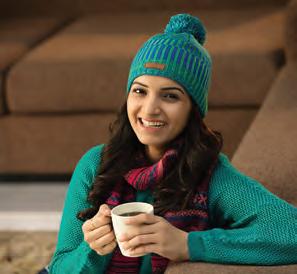
We also use blankets or quilts and heaters to keep our bodies warm. A girl wearing woollens and drinking coffee to stay warm.
Spring season comes after winter. It is a season when the weather starts to get warmer, and flowers begin to bloom. It is a great time to go outside and play in the sunshine, fly kites and have picnics.

Wonders of Bharat
Varahamihira was an ancient Indian astronomer and mathematician. He taught people how to guess the weather by studying the sky and the clouds.
Word Splash
weather: what it feels like outside at a particular time and place season: the period of time when the weather remains similar for a few months
bloom: when flowers open up

Scan the QR code to learn more about the weather and seasons.
• Weather changes from day to day. It can be hot, cold, rainy, windy or cloudy.
• When the weather remains similar for a few months, it is a season.
• Summer is the hottest season.
• Rainy season brings lots of rain.
• Autumn is when leaves change their colour, and trees shed their leaves.
• Winter is the coldest season.
• Spring is when the weather begins to get warm and flowers bloom.
1. Tick ( ) the correct picture.
A. Which of these pictures shows summer?


B. What do we use in the rainy season to stay dry?


C. Which of these pictures shows autumn?






2. Fill in the blanks. grow summer autumn rain
A. Monsoon brings lots of .
B. The sun shines brightly in .
C. In the season, the weather gets cooler and leaves fall from trees.
D. Rainy season helps plants .
3. Write True or False.
A. We wear warm clothes in summer.
B. Flowers bloom in spring.
C. We like to have hot soups and food in summer.
D. The days are short and the nights are long in the winter.
E. We wear cotton clothes in winter season.
4. Match the following.



5. Circle the odd one out.
A. umbrella raincoat sunglasses puddle
B. winter autumn weather spring
6. Answer the riddle.
I am the season with the most sun, where playing outside is lots of fun. Who am I?
7. Answer the following questions.
A. How was the weather today at your place?
B. Name the five different seasons.
C. Write three things we do in the summer.
D. Write one way in which rains help plants and trees.
8. Picture-based questions.
A. Which season does the picture show?
B. What is happening in this picture?
C. What can we do to stay healthy in this season?


Which is the season you like the least? Why?










Have you ever blown a balloon or felt the air on your face? That is air in action! Air is all around us. We cannot see it, but we can feel it. When we breathe, we can feel air going in and out of our nose. Air is a mixture of many gases. Without air, we would not be able to breathe, plants would not grow and birds would not fly. Fast moving air is called wind.
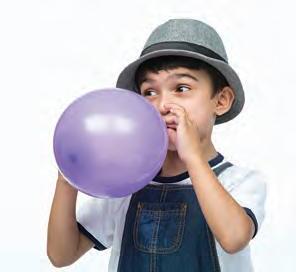
A boy blowing air into a balloon.
Breeze: Wind that blows gently is called a breeze. It feels nice and cool. Storm: A wind that blows strongly is called a storm.
Air is useful in many ways.
• Breathing: We breathe in and breathe out air.

We breathe in air.
• Flying: Birds and aeroplanes fly in the air. People fly kites in the air.
Aeroplane flies in the air.
• Filling up: Air fills up balls, balloons and tyres.

Fans keep us cool.

Air fills up tyres.
• Cooling: Fans and air conditioners move air to cool us down on hot days.
mixture: a mix of many things


Air helps dry clothes.
• Drying: Air helps dry clothes when they are wet.
• Lighting fire: We need air to light a fire.
Astronauts carry their air in cylinders to breathe in space because there is no air there.
Pause and Answer
Write True or False.
1. We can live without air.
2. Aeroplanes do not need air to fly.
3. Air helps dry our clothes.
Air has some special properties. Let us understand them with fun activities!
Occupies Space
Have you ever seen how a balloon gets bigger and bigger when you blow air into it? A balloon becomes bigger when we blow air into it because air fills the space inside the balloon and gives it a shape. This shows that air occupies space.



Air occupies space.
properties: qualities

Have you ever thought why a balloon filled with air is heavier than an empty balloon? Let us know about it with an activity! Air has weight.
Things needed: Two balloons, string, hanger
Steps:


• Inflate (fill in air) both the balloons so they are the same size.
• Tie each balloon to the ends of the hanger with a string.
• Balance the hanger on a table.
• Gently poke one balloon with a needle. That will burst the balloon and let the air in it out.
• Notice how the side with the balloon that has air in it goes down. This shows that air has weight.
Have you ever seen water drops outside a cold glass of water? Let us find out more with an activity!
Things needed: glass, ice cubes, water
Steps:
• Fill a glass with ice cubes and add water.
• Wait for a few minutes and look at the outside of the glass.
• Look at the water drops that form on the outer surface of the glass.
The air that touches the cold outer surface of the glass turns into drops of water (we see on the outside of the glass). This shows that air contains water.
inflate: to fill with air
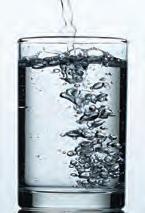
Air has water.

Have you seen smoke coming out of vehicles on the road or from the chimneys of a factory? Does it make the air dirty? Yes, and this smoke causes air pollution.
Air pollution happens when the air gets dirty with harmful gases, smoke and dust. This can make it difficult for us to breathe and can harm plants and animals.

We need clean air to stay healthy. Plants clean the air by removing harmful gases. We should grow more plants to get fresh and clean air.

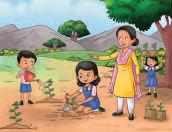

The International Kite Festival held in Gujarat is one of the most famous kite festivals in India. Visitors come from all over the world to participate in this festival and fly kites with unique shapes.
air: a mixture of many gases wind: moving air

International Kite Festival, Gujarat
breathing: the way our body takes in air and lets it out air pollution: when the air gets dirty from harmful gases, smoke and dust
chimneys: pipes on buildings that help to carry smoke and gases from fireplaces out of the building

Scan the QR code to know more about air.
• Air is all around us.
• We need air to breathe.
• Air is useful for lighting fire, flying kites and drying clothes.
• Air takes up space, has weight and contains water.
• Air pollution occurs when the air gets dirty with harmful gases, dust, germs and smoke.
• We should grow more plants to keep the air fresh and clean.
1. Tick ( ) the correct answer.
A. What is air made of?
Rocks
Gases
Soil
B. What can help reduce air pollution? Cutting down trees Planting trees Setting up factories
C. Which of the following flies?
Lions Birds Monkeys
D. Which of the following can cause air pollution?
Smell from flowers
Smoke from factories Sound from vehicles

2. Fill in the blanks.
harmful pollution plant weight
A. The presence of dust and smoke in the air is called air .
B. Polluted air is for plants and animals.
C. Inflated football has more than an empty football.
D. We should more trees to get fresh air.
3. Write True or False.
A. We can see air with our eyes.
B. Parrots fly in the air.
C. Air pollution is good for our health.
D. A rabbit also breathes air.
4. Match the following.
A. Breathing
B. Aeroplanes
a. Fly in the sky
b. Inflate with air
C. Balloons c. Clean the air
D. Plants d. Taking in and letting out air
5. Answer the following questions.
A. Write any two uses of air.
B. What happens to a balloon when you inflate it?
C. Write any two important properties of air.
D. What is air pollution? How can we reduce it?
6. Picture-based questions.
A. What is coming out from the factory chimneys in the picture?
B. Why is it harmful for us?



What will happen if there is no air?
Keeping the air clean means making sure that the air we breathe is healthy. There are two simple ways you can help keep the air clean.
• Plant more trees to help keep the air clean.
• Reduce the amount of things you use. Reuse, recycle or donate things instead of throwing them away. This will help reduce air pollution caused by factories and transport system.





Tick ( ) the activities that need water. Get Set




Water is something we use every day. It is important for all of us. Let us know more about water and why it is so important for us.
Think about all the things you do in a day. We use water to brush our teeth, wash our hands, or drink when we are thirsty. It is important for all living things.

We use water to cook food.

Plants need water to grow.

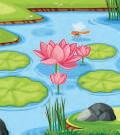
Animals like fish live in water. Plants like lotus grow in water.
We get water from different sources such as rivers, streams, waterfalls and rain. Let us learn about these sources of water.
When snow melts in the mountains, the water from the melted snow flows down the mountains. Some of the water seeps into the ground while some water that flows down makes waterfalls, streams and rivers.



sources: from where something comes seeps: to flow or leak slowly through small openings

Rainwater helps fill rivers, ponds and streams.
The rainwater that seeps into the ground makes groundwater. We use wells, handpumps and tubewells to get this water. People dig deep holes called wells to reach the underground water. A hand pump helps us pump water from underground.



Seas and oceans also have lots of water. But we cannot use it for drinking, bathing, washing or cooking because it is very, very salty.
Think about a time when you saw dirty water. How did it make you feel? Would you like to drink it or swim in it?
Water pollution is the addition of harmful things like waste from factories, house waste and trash into the water. It makes the water dirty and unsafe for people, plants and animals.
Tick ( ) the activities that pollute water.

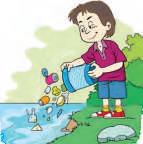
Sakshi did not come to school today. She is unwell because she drank water from outside, which was dirty. We should never drink dirty water. It can make us sick. Always drink clean water as it does not have harmful substances and germs.
Here are some ways to clean water:
Boiling: Heat the water till it bubbles. Heat it like that for 2–5 minutes. This helps to kill the germs present in water.
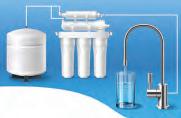

Using a water filter: A water filter can help remove dirt and germs from the water.


Have you ever faced water-shortage? How can you help save water? Water is precious, and we need to save it. Here are some ways to save water:

Turn off the tap when not in use.


Fix leaks to save water. Collect rainwater and use it for other activities.




The Ganga River is a very important river. Many festivals and important ceremonies happen along the banks of the Ganga. It shows how much people love and respect the river. The Ganga River provides water for farming for a large part of India.

rivers: large, flowing bodies of freshwater groundwater: water that is stored underground water pollution: mixing of harmful substances into water

Explore More!
Scan the QR code to know more about water.
precious: very valuable or important
• We use water for drinking, cooking, cleaning and growing plants.
• Rivers, streams, waterfalls and rain are sources of water.
• Water pollution makes water dirty and unsafe to drink.
• Boiling and filtering help clean water.
• We need to save water as there is no life without water.
1. Tick ( ) the correct answer.
A. What is the use of water?
Drinking
B. Which animal lives in water?
Rabbit
Flying Digging
Fish Cat
C. How we can make water clean?
Filtering
D. How can we save water?
Keeping the tap open.
Boiling
Both
Using a bucket to take a bath. Playing with water.
2. Fill in the blanks. dug drink filters sources
A. We water when we are thirsty.
B. Water is passed through to remove dirt and harmful substances.

C. Wells are often to get groundwater.
D. Rivers, lakes, rain and groundwater are of water.
3. Write True or False.
A. Water pollution harms all living things.
B. We drink water to breathe.
C. We should save rainwater and use it later.
D. We can drink water from the oceans.
4. Answer the riddle.
I help plants grow and I keep you clean. In streams and rivers, I can be seen. Who am I?
5. Answer the following questions.
A. Why can’t we drink water from the sea?
B. Why is water important for us?
C. Name some sources of water.
D. Write two ways in which water gets polluted.
6. Picture-based questions.
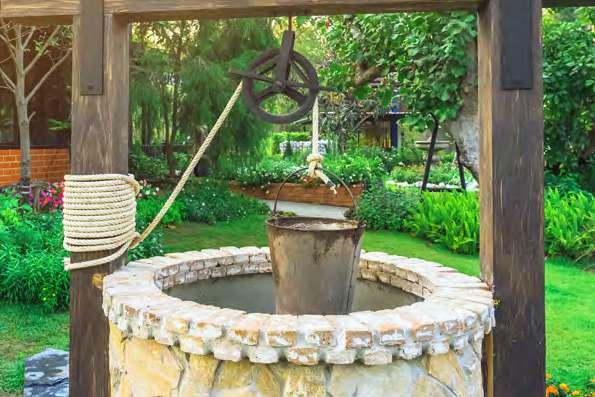
A. Which source of underground water do you see in the picture?
B. How does it help people?


Imagine there is a small pond in your village. Suggest one thing that can be done to keep the water clean and safe for fish and plants.
Let us read and learn the steps to wash our hands:
Step 1: Turn on the tap just enough to wet your hands and then turn it off.
Step 2: Use soap to rub your hands together and lather it well.
Step 3: Make sure to scrub all parts of your hands.

Step 4: Turn on the tap again and wash the soap off quickly.
Step 5: Turn off the tap as soon as your hands are clean.



Domestic Animals Wild Animals Importance of Animals Taking Care of Animals

Get Set

Read the poem and circle the names of animals. Iliketoplaywithmybat, At home, I have a cat. Mylittlehensliveonthefarm, Theyarecute,theydonotharm. Ialsohaveasmallpuppy Thatmakesmehappy!
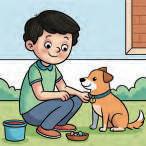
Animals are everywhere. We see animals such as dogs, cats and cows around us. Some animals live in jungles like bears and lions. Let us learn more about these animals.
Domestic animals are animals that live with people and help them in different ways. For example, horses, cows, sheep, goats and hens are domestic animals. Some domestic animals like dogs and cats can be our pets too! Pets are special animals that we keep in our homes for love and joy.
A cow gives us milk and a hen gives us eggs. A sheep gives us wool. A goat gives us meat.
But where do these animals live? Some domestic animals live with people in their houses and some live in shelters made by humans.
Let us read about their homes.
Different domestic animals live in different kinds of homes.






Wild animals live in the forests. Lions, tigers, elephants, zebras, giraffes and bears are some wild animals. We do not make their shelters. They live in their natural shelters in the forests. They find their food, water and shelter on their own.
Let us read about where these wild animals live.

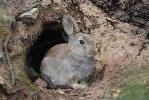



Bees live in a beehive.
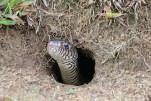
Snakes
Many animals, like zebras, deer and giraffes live in places with lots of grass.
natural: found in nature
Animals help us in many ways.
• Cows, buffaloes, goats and camels give us milk.
• Hens and ducks give us eggs.
• Silkworms give us silk. We make sarees, scarves, shirts and many other things from silk.
• Bees give us wax. The wax is used to make candles and polish. Honeybees give us honey.
• Hens, goats, sheep and fish give us meat.
• Sheep give us wool.
• Farmers use oxen to plough their fields.

A farmer uses oxen to plough his field.
Write one use of each of these animals.


plough: to dig up the soil in a farm to plant seeds
and
What are some other uses of animals?


Do you have a pet at home? Do you care for it? Let us read some ways to care for animals around us.
• Feed them on time every day.
• Make sure animals always have fresh water to drink.
• Give them a safe and clean place to stay.
• Take your pets (dog) for walks and play with them regularly.

Keep a bowl of water near your house for thirsty animals. You can also keep something to eat.




The Indian rhino is a large animal. It is quite special. It has thick skin and a single horn on top of its nose. It is found in Assam.
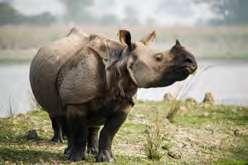
Word Splash
domestic animals: animals that can be pets or help us on farms shelters: places that protect us or animals from danger or bad weather wild animals: animals that live in forests

Explore More!
Scan the QR code to know more about animals.
• Domestic animals live in human-made shelters.
• Wild animals live in natural shelters.
• Animals are useful to us in many ways.
• We should take care of animals.
1. Tick ( ) the correct picture.
A. This is a hen’s home.

B. This animal gives us wool.

2. Write True or False.
A. Elephants live in the forests.
B. A rabbit gives us wool.
C. A lion is a pet animal.
D. A bird lives in a nest.
3. Fill in the blanks.




A. A lion lives in a . (stable/den)
B. A (horse/monkey) lives in a tree.
C. Animals like (hens/birds) build their nests.
D. Animals like (deer/dog) live in open, grassy lands.


4. Match the following.
A. Horse
B. Lion
C. Snake
D. Rabbit
5. Circle the odd one out.
a. Hole
b. Burrow
c. Stable
d. Den
A. cow dog lion horse
B. bear giraffe tiger cat
6. Who am I?
I am man’s best friend, Loyal and true, I bark and wag my tail, Who am I? Do you have a clue?
7. Answer the following questions.
A. Write one difference between a domestic and a wild animal.
B. Write one way in which a silkworm is useful to us.
C. Which animal would you choose as your pet and why?
D. Write two ways in which we can take care of animals.
8. Picture-based questions.
A. Name the animal shown in the picture.
B. Name the animal’s home.
C. Write one thing we get from this animal.


Meena sees a snake in her garden. Can she keep the snake as a pet? Why or why not?




Look at the picture. Circle two small plants. Make a box around one tree. Get Set

We see plants in various places such as gardens, parks, forests and even inside homes. They make our surroundings more beautiful. Plants also give us lots of important things. In this chapter, let us learn more about plants.

The main parts of a plant are roots, stem and leaves. Some plants also bear flowers and fruit.
Roots: They are like the feet of a plant. They fix a plant in the soil and absorb water and nutrients from the soil.
Stem: It is the plant’s body. It holds up the leaves, flowers and other parts of a plant.
Leaf: The leaf of a plant is also called its ‘kitchen’. It uses sunlight, water and air to make food for the plant. Most leaves are green.
Flowers: They are the colourful and scented parts of a plant. Sunflowers, roses, tulips and lotus are flowers. They attract birds and insects. Most flowers have a nice smell.
Fruits: They are the delicious and juicy parts of a plant. Some fruits like strawberries and bananas are sweet, while others like oranges and lemons are tangy or sour.
All these plant parts work together to help the plant grow strong and healthy.
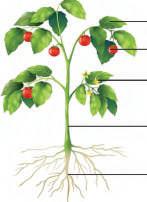
a plant
Some plants, like cactus with prickly spines, can hurt us if we touch them.
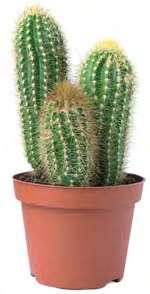
nutrients: things that we need as food in order to be fit and strong attract: to cause something to come toward something else
Some plants are big. Some plants are small. Some plants have hard stems while some plants have soft stems. Plants come in different forms and sizes, each with its special features.
Let us learn about the different types of plants.
Trees are tall plants with a single, thick woody stem.
The thick and woody stem of a tree is called a trunk. It grows straight up and gives support to the branches and leaves of a tree.
Trees live for many years. For example, mango tree, neem tree and oak tree.
Shrubs are smaller than trees.
They have many thin, woody branches that grow close to the ground.
Shrubs are also known as bushes. They live for some years.
Rose, hibiscus and jasmine plants are shrubs.

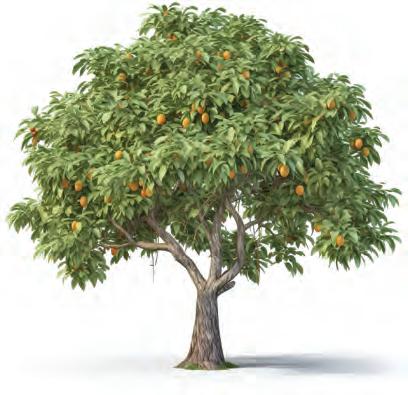

Herbs are small plants with soft, green and non-woody stems.
They live for a few months. Grass, mint and coriander are herbs.

Climbers are weak plants. They have long, flexible and weak stems that climb up sticks, walls or other plants for support.
Grapevine, money plant and green peas are climbers.
Creepers are plants that spread along the ground.
Strawberry, pumpkin and watermelon plants are creepers.

Plants are very useful.
y Plants give us fresh air to breathe.
y They give us food like fruits and vegetables.
y Herbs like mint and coriander are often used for cooking.
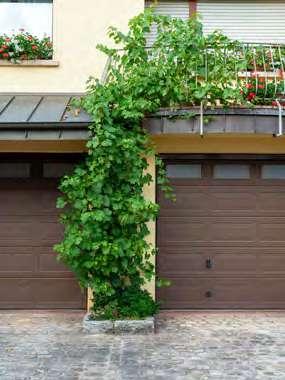
Which plant would you like to grow at your home? Why?
Plant parts we eat
Fruits: apple, mango
Roots: carrot, beetroot
Flowers: cauliflower, broccoli
Stems: sugarcane, ginger
Leaves: spinach, cabbage
Seeds: pulses, cereals
flexible: can bend easily
y We get cotton from cotton plants to make cotton bags and clothes.
y We get different kinds of oil from different plants. For example, sunflower oil and mustard oil, which are used in cooking.
y Plants give us timber to make furniture.
y Plants give us spices, which are used for flavouring food. Turmeric, cumin seeds, black pepper and cloves are some commonly used spices.
y We get sugar and jaggery from plants. We also get tea and coffee from plants.
y We also use plants like rose and jasmine to make perfumes.





Plants are very important for us. Without them, our lives would be very difficult. Therefore, we should always take care of plants by growing more trees.
The Tulip Garden in Kashmir is Asia’s largest tulip garden.

Write the names of two things in your home that have come from plants.

plants used for making sugar and jaggery.

timber: wood used to make furniture spices: dried plant parts used to add flavour to food perfume: the sweet smell we spray on our body

trees: tall plants with a single, thick woody stem
shrubs: plants with thin, woody branches that grow close to the ground
herbs: small plants with soft, green and non-woody stems
climbers: weak plants with long, flexible and weak stems that climb up
creepers: plants that spread along the ground

Scan the QR code to know more about plants.
y The main parts of a plant are roots, stem and leaves. Some plants also bear flowers and fruits.
y Trees, shrubs, herbs, climbers and creepers are different types of plants.
y Plants give us fresh air to breathe, timber, food, spices, cotton, tea, coffee and many other things.
1. Tick ( ) the correct picture.
A. This is used to make furniture.






B. This is the stem of a plant we eat.

C. This is a herb.

D. This is a creeper.

2. Write True or False.




A. The root makes food for the plant.
B. Coriander is a herb.
C. Shrubs are taller than trees.
D. Plants give us fresh air to breathe.
3. Fill in the blanks.


A. Plants are our friends.
B. The leaf makes for the plant.
C. Trees have a strong and thick stem called a .
D. from plants is used to make beds and tables.

4. Match the following.
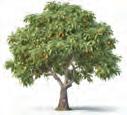



5. Answer the following questions.
A. Name the parts of a plant.
B. What does the leaf of a plant do?
C. How is a shrub different from a herb?
D. List two ways in which plants are important.
E. Name any three plants you have seen around you. Mention the type of plants.
6. Picture-based questions.

A. Name the plant shown in the picture.
B. What type of plant does the picture show?


What will happen if you pluck all the leaves of a plant? Write one way in which it will harm the plant.
Let us take good care of plants around us!
• Water the plants regularly, but not too much. Let the soil dry out a bit between waterings.
• Place the plants in a place where they can get enough sunlight, as plants need sunlight.
• Cut off any dead or yellow leaves to help the plant grow healthy and strong.
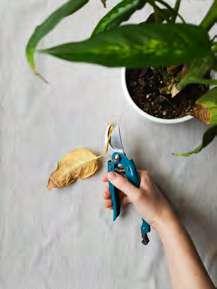


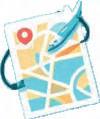







Chapter Overview Transport and Communication
Transport Communication

Get Set

Complete the picture by joining the dots from 1 to 11. Then colour the picture and write its name.
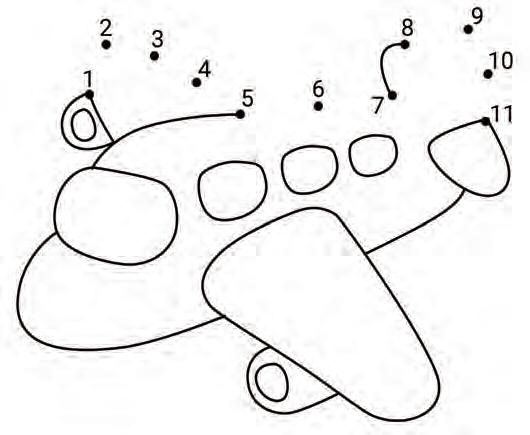
All of us travel to different places. Based on how near or far we have to go, we use different kinds of vehicles, like cycles, scooters, trains and planes. Vehicles are also used to transport goods from one place to another. Goods can be small things like parcels of clothes, or large things like cars or furniture. Based on the size of the goods to be transported, we use vehicles like trucks, trains and ships.
Let us learn more about the different kinds of vehicles used for transport.
Land transport means the vehicles that move on land. They use roads or tracks to carry people or things.




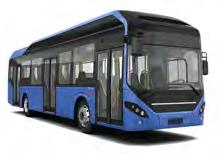



When we use vehicles like cars, buses, trucks and scooters, we use land transport. The engines of these vehicles run on diesel, petrol or CNG. Some vehicles like cycles and rickshaws do not run on engines. People move them by pedalling.
engine: the part of a vehicle that uses fuel to run

People travel long distances by trains, which run on tracks. People also use the metro rail to travel in big cities like Delhi, Kolkata, Mumbai and Chennai.
Water transport means vehicles that move on or under water to carry people or things from one place to another. In rivers or lakes, people use boats, steamers and small ships. Large ships and cruise ships are used for transportation in the seas and oceans. Submarines are used for moving underwater, in oceans and seas.



Air transport means vehicles that move in the air to carry people or things from one place to another. Aeroplanes or helicopters are such vehicles. Aeroplanes need a runway to land and take off, while helicopters need a helipad to land and take off.
Air transport is the most expensive yet the fastest way of transportation.


metro rail: trains that run within cities
runway: a special road where aeroplanes take off from and land helipad: a place where helicopters take off and land
Fill in the blanks with the help of the words given below.
helicopter water air tracks
1. A boat is an example of transport.
2. A is an example of air transport.
3. Trains move on .
4. transport is the fastest means of transport.
What do you do to plan a picnic with your cousins and relatives who live far away? You can call them on a mobile phone or send them a text message. These are ways of communication. Communication is the act of sharing information or ideas between people. We can communicate by different methods. Let us learn about them.
Long ago, people trained pigeons and travelled on horses to deliver letters.
Important news was spread by a messenger. He would beat on drums loudly to get people to gather around him.


A pigeon carries a letter.
Write a letter to your cousin or relative with your full address. You can write about anything you want. Request your parents to post the letter for you.
information: knowledge about something like people, plants, animals, countries, etc.





These days people use mobile phones, letters, newspapers, radios, televisions and computers to send and receive messages. Let us read about them.
• In present times, letters are delivered by postmen. We can write letters to our relatives and friends.
• We can talk to people using the telephone or the mobile phone. We can also send them text messages.
• Computers, tablets or laptops let us send emails and messages, and even video chat with people in any part of the world.

A woman writing an email on a laptop.

A farmer talking on a mobile phone.
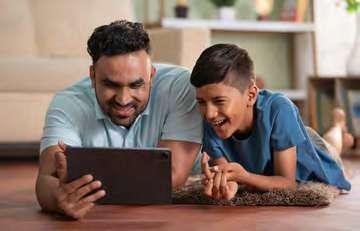
A man and his son using the tablet for a video call.
• News is delivered these days through faster ways of communication. People can read them on newspapers. News can also be watched on TVs or read online using the internet.
The Hubballi railway station in Karnataka, is the longest railway platform in the world.
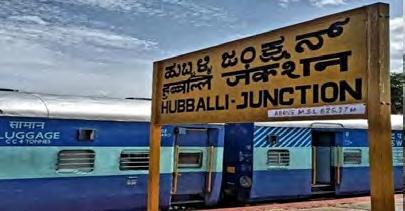
email: a way to send messages and files over the internet to other people
transport: the way people and goods travel from one place to another land transport: the vehicles that move on roads or tracks on land to carry people and things
water transport: the vehicles that move on or under water to carry people and things
air transport: the vehicles that move in air to carry people and things communication: the act of sharing information or ideas between people

Scan the QR code to know more about communication.
• There are three ways to transport people and things: by land, air and water.
• Land transport includes cars, scooters, trains, buses and bicycles.
• Air transport has aeroplanes and helicopters.
• Water transport uses boats, submarines and ships.
• Ways of communication include letters, newspapers, TVs, telephones, mobile phones and e-mails.
1. Tick ( ) the correct picture.
A. This takes us to faraway places in a short amount of time.




B. People used this long ago to send messages.


C. This is a vehicle that we use to travel by road.

2. Fill in the blanks.

air train message underwater postman
A. A runs on tracks.


B. transport is the most expensive means of transport.
C. Submarines are ships that move .
D. Letters are delivered by a .
E. A is the information you give to a person.
3. Write True or False.
A. Television is a means of communication.
B. Aeroplanes run on tracks.
C. A letter is a written message on a paper.
D. A ship can travel both on land and in water.
4. Match the following.
A. Helicopters
B. Video calls
C. Beating drums
D. Train
E. Ship
a. Modern means of communication
b. Land transport
c. Water transport
d. Air transport
e. Ancient means of communication

5. Answer the following questions.
A. Name any two vehicles used as land transport.
B. Why are newspapers important?
C. What are submarines?
D. Kanika lives in a different city than her father. She talks to him on the phone every day. Can you suggest two more ways in which Kanika can communicate with her father?
6. Picture-based questions.
A. Which vehicle does the picture show?
B. What is it running on?
C. Why is the vehicle important?


Why should we read or listen to news? Share your thoughts.
How can you show someone that you are listening carefully to what they are saying?
• You can look at the person speaking and make eye contact with them.
• You can nod your head.
• You can ask questions.



Directions and Time


Circle the correct words to show the side where the arrows point.



Arrows show us which way is being pointed. Just like arrows show you which way to go in a board game, arrows on road signs help us understand which way or direction things are going or pointing towards.

Directions
Direction is the way towards which a person or thing is or moves. Directions like left, right, forwards and backwards help us find our way and reach the place where we want to go.
There are four main directions: North, South, East, and West.
Four main directions
Have you ever tried to show your friend where something is using your hands? Knowing left and right helps us give directions.
• To find your right: Hold out both hands with your palms facing towards you. The hand that makes an “L” shape with your thumb and index finger is your right hand.
• To find your left: Left is the direction opposite to your right.
Did you know we can use the sun to find directions?
The sun rises in the East and sets in the West. If you are facing the rising sun, the East is in front of you, the West is behind you, the North is to your left, and the South is to your right.


We can easily learn directions by remembering the word NEWS, where N stands for North, E for East, W for West and S for South.
Fill in the blanks with the help of the words given below.
1. The sun rises in the .
2. The direction opposite to left is .
3. North, South, East and are directions. right East West
The proper position of a thing or a place is called its location

The book is on the table.


The cat is under the table. Eggs are in the tray.
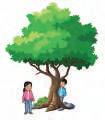
The girl is in front of the tree. The boy is behind the tree.
We often use the words ‘on’, ‘under, ‘in’, ‘front’ and ‘behind’ to find, or locate, things around us.
Now let us understand how to locate places.

Sanjay gets a phone call from his uncle. His uncle asks, “I have reached the bus stand. Where should I come now?” Sanjay replies, “Just walk to the Children's Park. I will meet you there. My house is just nearby.” The Children's Park is a landmark in this example. Landmarks are famous places or things that help us find our way. For example, famous buildings, parks, markets, rivers and mountains.
Landmarks make it easier to give and follow directions. For example, you might tell a friend, “Meet me on the left side of the school building”.
We can locate a place with the help of directions and landmarks.
Not all big buildings or structures are landmarks. A landmark is something famous, can be easily located and seen by many people.
What is a famous landmark near your house?
Think about how your day goes. You wake up, go to school, have lunch, play and then go to bed. Do you do all these things together? No, we do different things at different times. Time is divided into hours, minutes and seconds. A clock shows us the time. We divide a day into morning, afternoon, evening and night. Morning is the first part of the day when the sun rises. We get up in the morning. Afternoon is the middle of the day when the sun is over our heads. We come back home and eat lunch. In the evening, the sun sets. We also go out to play with our friends during this time. There is darkness at night. The moon and the stars appear in the sky. We go to bed at night.




A week is divided into seven days. Monday, Tuesday, Wednesday, Thursday, Friday, Saturday and Sunday are the seven days of the week.


A year is divided into 12 months. The months in a year are January, February, March, April, May, June, July, August, September, October, November and December.
Months with 31 days: January, March, May, July, August, October and December.
Name and number of months.
Months with 30 days: April, June, September and November.
February has 28 days. Every 4 years, it has 29 days.
Look at the calendar at your home or school. Find out the dates of 3 festivals in this year.




The Samrat Yantra, Jantar Mantar, Jaipur, Rajasthan, is one of the largest sundials in the world. It helps to tell time with the help of the sun.
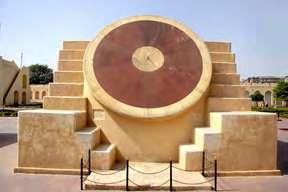
directions: how things or people move location: The proper position of a thing or a place landmarks: these are famous places or things that help us find our way

sundial: a tool that tells the time with the help of the sun
• The four main directions are North, South, East and West.
• Landmarks are famous places or things that help us find our way.
• Time is divided into hours, minutes and seconds.
• A day is divided into morning, afternoon, evening and night.
• Monday, Tuesday, Wednesday, Thursday, Friday, Saturday and Sunday are the seven days of the week.
• January, February, March, April, May, June, July, August, September, October, November and December are the 12 months of a year.
1. Fill in the blanks.
A. Right is the direction opposite to .
B. There are minutes in an hour.
C. A boy facing East has direction on his left.
D. The sun sets in the . 2. Write True or False.
A. The main directions are North, South, East and West.
B. There are 7 months in a year.
C. Clocks help us know time.
D. The opposite of South is West.
E. There are 60 hours in a day.

3. Circle the odd one out.
A. north south east right west
B. week day north month year
4. Answer the following questions.
A. What do you do in the evening?
B. Name the days of the week.
C. What are the four main directions?
D. What are landmarks?
5. Picture-based questions. Look at the picture. Complete the sentences.

A. The teddy bear is (on/in) the bed.
B. The toy box is (in front of/behind) the football.
C. The fish is (on/in) the bowl.


Mehek eats her breakfast at 7 in the morning and goes to school at 8. How much time is there between breakfast and going to school? What can she do in this time?

Let us make a daily routine chart.
Write the following activities on a drawing sheet and stick it in your room. With the help of your parents, write the time for each activity and follow it.




Get Set

Look at the picture. It shows early humans. Talk to your partner about two things you see in the picture.

Early humans were the very first people who lived long ago, even before there were cities or schools.
Early humans lived in caves and learnt to hunt for food and stay safe from big animals. They were the first people to walk on the Earth. Let us learn about how early humans lived and how they changed from hunters to farmers.
One of the most important things early humans learnt was how to create fire. They did this by striking two stones together.
This discovery of fire helped early humans to stay warm, cook food and scare away wild animals. Before they discovered fire, they had to eat raw meat, which was not very tasty or safe to eat.

Early humans used fire to cook meat.
Another big change in the lives of early humans was the making of the wheel. The first wheels were made of round pieces of tree trunks. Wheels made it easier to move heavy things. Early humans used wheels to make carts. These carts were used to carry food, water and other goods. This made their lives easier.
In your opinion, which discovery is more important – fire or wheel? Discuss with your partner and share in the class.

Early humans used round pieces of wood to make wheels.
The first wheels were used for making pots before they were used in carts for transporting things. Did You Know?
caves: a space made in a pile of rocks, which can be used as a shelter discovery: finding or learning something for the first time raw: not cooked carts: small vehicles with wheels

Fill in the blanks.
1. Wheels were made from round pieces of trunk.
2. Early humans used wheels to carry things.
3. The carts were used to carry , water and other things.
4. Early humans used to stay warm.
Long, long ago, when early humans lived in caves and forests, they discovered that some animals could be their friends.
Early humans began to tame animals, which means they trained them to be helpful. Dogs were one of the first animals they tamed. They protected early humans, helped them to hunt, and gave them company.
Later, they tamed other animals like cows, sheep and goats. These animals gave them milk, wool and meat.
Think about the food you eat. Most of it comes from farms.
Early humans learnt to grow their food by farming. Instead of searching for food in different places, now they could stay in one place and plant seeds to grow grains like wheat, barley and rice. They also learnt how to save food for times when it was difficult to find or grow food.
A wheat farm
farms: an area of land where crops are grown or animals are raised for food
As farming became more common, early humans started to build villages around them. These were places where people lived together in small groups. They used mud, straw and stones to build houses. Living in villages helped them work together. They shared food, tools and knowledge.




Early humans in a small village.
The Indus Valley civilisation was one of the first great civilisations. It was in the North-West part of India. It was around the river Indus. The people of that civilisation built big cities with roads and houses.
early humans: the very first people who lived long ago hunters: people who search for and kill wild animals for food or sport farmers: people who grow crops and raise animals trunks: thick stems of trees
tame: train animals to be helpful farming: growing crops
village: a place where people live together in small groups

Scan the QR code to know more about early humans.
tools: things that help us do things more easily

• Early humans were hunters and gatherers.
• Early humans discovered fire and used it to stay warm, to cook food, and scare wild animals away.
• Early humans made wheels with round pieces of tree trunks.
• Early humans tamed animals that helped them hunt, protect and provide food.
• Farming allowed early humans to grow their food and stay in one place.
• Villages were the first groups where people lived and worked together.
1. Tick ( ) the correct picture.
A. Early humans discovered this.


B. Early humans lighted a fire with this.

C. The first wheels were made from:

D. Early humans tamed this animal.







2. Fill in the blanks.
A. Early humans discovered .
B. The making of the made moving things easier.
C. Early humans built to live and work together.
D. Dogs helped early humans to .
3. Match the following.
A. Fire
B. Wheel
C. Tamed animals
D. Farming
a. Easier movement
b. Growing crops
c. Warmth and light
d. Dogs and cows
4. Circle the odd one out. fire wheel internet animals hunting flying farming taming
5. Answer the following questions.
A. Where did early humans live?
B. Name three animals that were tamed by early humans.
C. Write two ways in which farming helped early humans.
D. How did the making of the wheel change life for early humans?
6. Picture-based questions.
A. What are the early humans doing in this picture?
B. How does it help them?


How do you think life would be different if early humans had not discovered fire?



Earth and Its Neighbours
Landforms Water Bodies
Neighbours of the Earth

Get Set

Look at the pictures. Write the names of these things.




We live on the Earth. It is a beautiful planet. Planets are big round bodies that move around the Sun. Earth is the only planet that has air, land and water. Let us know more about the Earth.
What makes our Earth so beautiful? The different landforms on our planet make it beautiful. Landforms are the different shapes and features on the surface of the Earth. Plains, mountains, hills and valleys are some landforms on the Earth.
Plains are large, flat areas of land. Many people like to live in plains because it is easier to build houses, roads and buildings here. Plains are good places for farming because the soil is often good for growing crops.
Mountains are the tallest landforms on the Earth. They are made up of rocks and soil, and they have steep slopes. Some mountains have snow at the top. It is usually cold in the mountains.
Hills are lower than mountains but higher than the land around them. The weather in the hills is usually pleasant—not too hot nor too cold. Hills are good for growing tea and coffee.
A valley is the low land between two mountains or hills. They can be V-shaped or U-shaped. People like to live in valleys because of the pleasant weather. Valleys also have good water sources and fertile lands.
features: an important or noticeable part of something steep: sharp slope fertile: good ground for growing plants


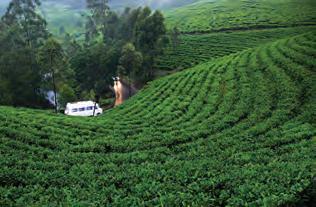

Did You Know?
Everest is the highest mountain on the Earth.


Do and Learn
Collect pictures of different landforms, like plains, mountains, hills and valleys, from old newspapers and magazines. Paste them in a scrapbook. Write the name of each landform below its picture.
What are some things that make Earth different from other planets? Talk about it with your classmates.
Pause and Answer
Write True or False.
1. Hills are lower than mountains.
2. Valleys are low areas between plains.
3. Plains are flat areas of land.
Rain is an important source of water on the Earth. When it rains, it falls into ponds, rivers, lakes, seas and oceans. These are called water bodies. Some rainwater also goes under the ground. It is called underground water. Let us know about these water bodies.
Oceans: These are the large water bodies that cover most of the surface of Earth. They are the biggest waterbodies.


Seas: Seas are big water bodies, but smaller than oceans. They are usually found near land and can be part of an ocean.
Lakes: These are large bodies of fresh water surrounded by land.
Rivers: A river is a long, moving body of fresh water that flows across land and goes into a lake, sea or ocean. A river brings water to different places along the way.


Our Earth is called the Blue Planet because it looks blue from the sky. It has more water than land. Did You Know?
Fill in the blanks.

1. are the largest waterbodies on Earth.
2. flow and join larger waterbodies like seas and oceans.
3. Some part of a is near land.
When we look at the sky, we see many things up there. We see the Sun in the day sky and the Moon and the stars in the night sky. Let us know about them.
We see many stars twinkling in the night sky. There are so many stars that we cannot count them. They look small because they are very far away from the Earth.
Error Alert!
Some people think that stars only appear at night. They are in the sky even during the day. We cannot see them because of the bright light of the Sun.
There is a star that we can see even during the day. Do you know about this star? It is the Sun. Yes, the Sun we see in the day sky is actually a star. The Sun shines very brightly. It is a big ball of fire that gives us heat and light. The Sun is very big but looks small because it is very far away from the Earth. No life would be possible on the Earth without the Sun.
Moon

The Sun shining brightly in the day sky.
The Moon is our nearest neighbour in the sky. It is much smaller than the Earth. We see the Moon at night. The Moon goes around the Earth in a big circle. This is called “revolving.”

But does the Moon always look the same? No, it seems to change its shape every day. These different shapes the Moon are called phases of the Moon.
The Moon does not have any light of its own. It gets light from the Sun. When we look at the Moon from Earth, we see only that part of the Moon that is lit up by the Sun.
We see a fully round Moon in the sky once every month. This is called the Full Moon.
We do not see the Moon at all in the night sky once every month. This is called the New Moon.





A full Moon in the night sky.
On August 23 (in the year 2023), a vehicle made by the Indian scientists landed near the south pole of the Moon. It was called Chandrayaan-3.
planet: big round bodies that move around the Sun landforms: different shapes and features that we see on the Earth’s surface, like mountains, valleys, hills and plains waterbodies: places where water collects like ponds, rivers, lakes, oceans and seas phases of the Moon: different shapes the Moon looks like during the month

Explore More!
Scan the QR code to know more about Earth and its neighbours.
• Earth is the only planet that has air, land and water.
• The surface of the Earth has different landforms (mountains, hills, plains and valleys) and waterbodies (oceans, seas, rivers and lakes).
• Rain is an important source of water on the Earth.
• The Sun is a big ball of fire. It gives us heat and light.
• The Moon is our nearest neighbour in the sky. It has no light of its own.
1. Tick ( ) the correct picture.
A. This can be seen in the day sky.


B. It is the only planet with land, water and air.

C. We cannot count these.





D. The water is salty. We cannot drink it.





2. Fill in the blanks. water light twinkle crops
A. We get from a river.
B. The stars at night.
C. Sun gives us heat and .
D. Plains are a good place to grow .
3. Write True or False.
A. We see the Sun at night.
B. The Moon is bigger than the Sun.
C. Mountains are the tallest landforms on the Earth.
D. Hills are perfect for growing tea and coffee.
4. Match the following.
A. Valleys a. Perfect for growing crops
B. Ocean b. Low areas between mountains
C. Plains c. Smaller than oceans
D. Sea d. Largest waterbody
5. Answer the following questions.
A. Write one special thing about the Earth.
B. Why do the stars appear small?
C. Why is the Sun important?
D. Write one difference between hills and mountains.

6. Picture-based questions.
A. Which landform do you see in the picture?
B. Which waterbody do you see in the picture?
C. How will this waterbody help the people living here?


Plants need water to grow. But who gives water to the plants in the forests? How do those plants grow?
Let us make a poster on “Save the Earth!” Write these points on a chart paper.
• Plant trees in your neighbourhood.
• Turn off the tap while brushing your teeth.
• Turn off lights, fans and electronics when not in use.
• Reuse things.
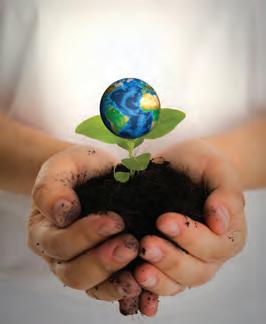
Decorate your poster with your drawings and stickers. Display it in the school or neighbourhood.

Objective: To perform a simple experiment to see how plants carry water
Things Needed: Fresh white flowers (like carnations), clear glasses, water, blue food colour, scissors
Step 1: Introduction to the Plant Stem
Identify the stem of a plant. Learn about how the stem of a plant carries water from its roots to its leaves.
Step 2: Prepare Your Glass

Take a clear glass and fill it halfway with water. Add a few drops of blue food colour to the water. Stir it so that it mixes with the water properly.
Step 3: Prepare Your Flower
With the help of an adult, make a small diagonal cut to the bottom of the stem of the flower. This will help the stem absorb the water better.
Step 4: Place the Flower in the Glass
Place the flower in the glass. Make sure that the stem remains in the water.
Step 5: Observe the Changes
Check on the flower the next day. As the coloured water is absorbed by the stem, the petals of the white flower will change colour and start looking bluish! This shows that the stem has carried the blue-coloured water to the flowers!
Project Output: You have performed a simple experiment that shows how water travels through the stem!
Final Outcome: This fun project will help you understand how the stem carries water from the roots of the plant to the leaves of the plant.
To be read aloud and explained in the mother tongue by the teacher, as needed.
Read the story. Look at the picture. Answer the questions below.
One sunny morning, Vidya and Vishesh got ready for a journey into a forest with their parents. As they reached the forest, they saw a wide variety of plants and tall trees. They enjoyed seeing monkeys climbing up the trees. They also saw elephants and deer roaming around.
As the day went on, they saw more trees, climbers, creepers and wild animals. Vidya and Vishesh were enjoying a lot. The family stayed in the forest for the night in a tent and talked about their day in the forest.
1. Where did Vidya and Vishesh go?
A. mountain
B. forest
C. park
2. What did they see on the trees?
A. monkeys
B. elephants
C. deer
3. Name three different types of plants.

4. Vishesh and Vidya are adopting a dog. What are some of the things they should do to take care of it? Mention any two things.
To be read aloud and explained in the mother tongue by the teacher, as needed.

Name of the Student: Time: 1 Hour
1 Tick () the correct picture.
A This animal gives us wool.


B People used this long ago to send messages.


C Early humans tamed this animal.

2 Fill in the blanks.



sources light food
A Sun gives us heat and .
B The leaf makes for the plant.
C Rivers and lakes are of water.
3 Match the following.
A Breathing i Flies in the sky
B Horse ii Taking in and letting out air
C Helicopter iii Lives in a stable
4 Write True or False.
A The Moon is bigger than the Sun.
B We can drink water from the oceans.
C Air pollution is harmful for us.
5 Answer the questions.
A What are the four main directions?
B Name the 5 different seasons.
C Write 1 difference between hills and mountains.
6 Picture-based questions.

A Which vehicle does the picture show?
B What is it running on?

Some games are played inside the house, while some are played outside. Let us learn about them.
Indoor games are games that are played inside a house.
Ludo is played by two to four players. A dice and ludo pieces are needed to play it.
Chess is played by two players. It is played using a chess board and chess pieces.
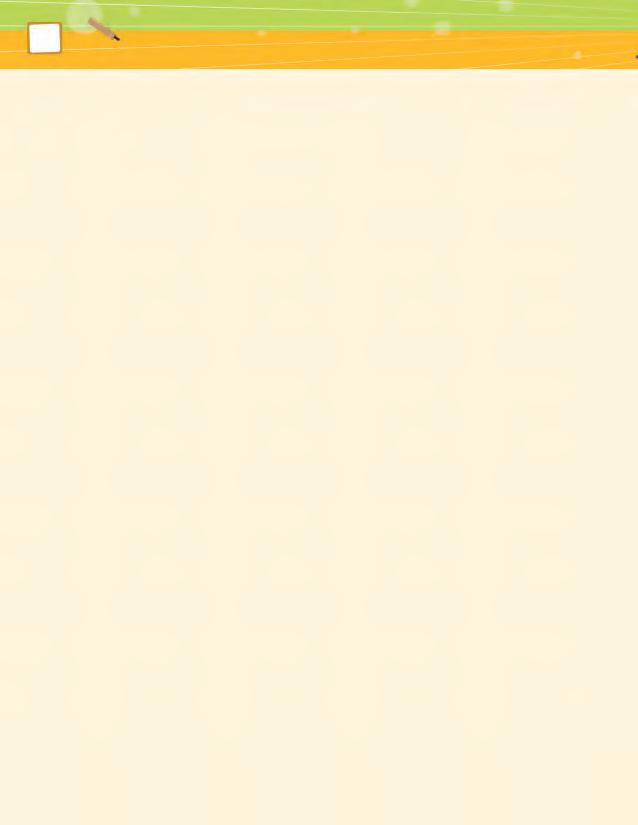
Snakes and Ladders is played by two or more players. It is played with colourful pieces and a dice.
Carrom is played by two to four players. It is played using small discs called carrom men and a striker.
Outdoor games are games that are played outside in an open space.









Badminton is played by two players or two teams (of two players). It is played using a shuttlecock and a racket.

Football is a team game. Players kick the ball to score a goal.
Volleyball is a team game. Players hit the ball over the net to the other side.
Cricket is a team game. It is played using a ball, bat and stumps.
Both indoor and outdoor games keep us healthy and happy. Which games do you like to play inside or outside your home?



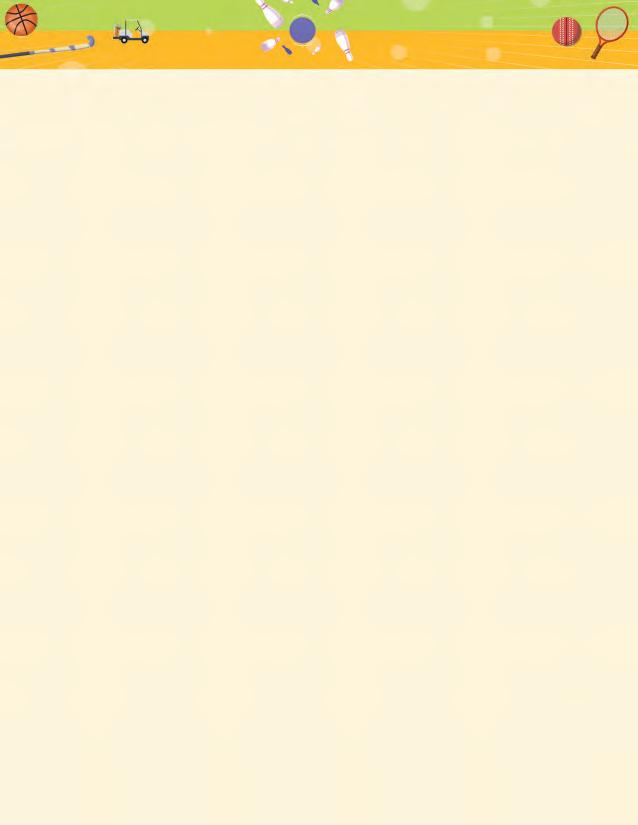
Practice Time
Scan this QR code to see the quiz.
1 Write ‘I’ for indoor games and ‘O’ for outdoor games.
a Ludo: b Football:
c Cricket: d Carrom:
e Volleyball: f Chess:
2 Match the things and the games.
a Bat and ball Ludo
b Shuttlecock Cricket
c Dice and board Carrom
d Striker Badminton
3 Circle the odd one out.
a Ludo b Carrom


c Badminton d Cricket



Food is important for us. Let us learn what we can do to make sure that our food is clean.

Wash fruit and vegetables with water before using them.


Always wash your hands before and after touching food.
Drink only clean water. Do not drink water directly from the tap.
Always keep cut and cooked food covered.


Use clean utensils. Wash them properly with soap and water.
Store raw vegetables and fruit in the refrigerator.
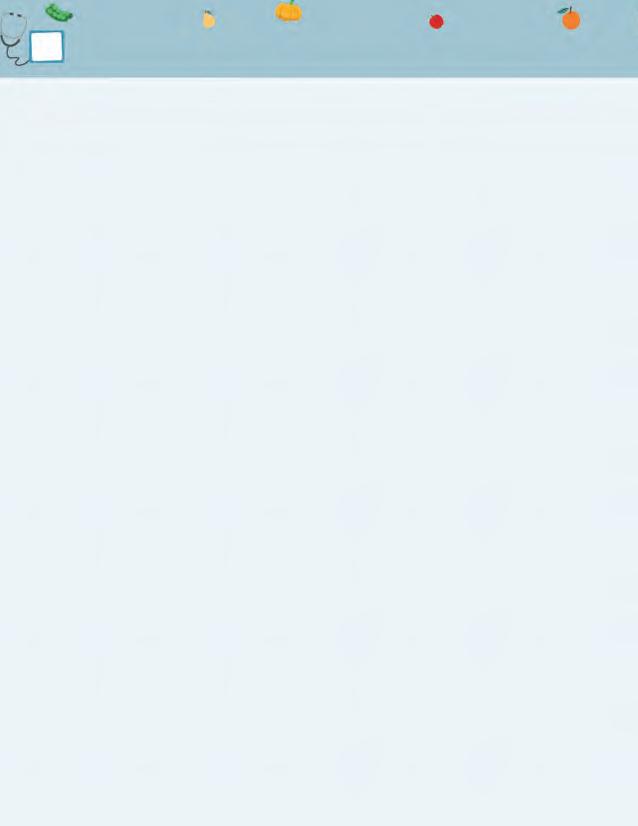
Store dry food properly in jars. They may get spoilt easily if left in the open.
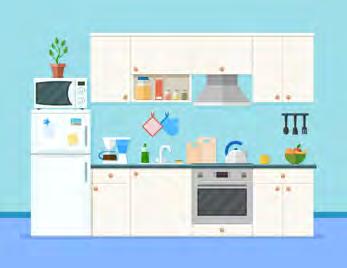

We keep and prepare our food in the kitchen. We should keep our kitchen clean.
Always throw the kitchen waste in a closed dustbin.
There are many people in the world who do not get enough food to eat. We should never waste food.


Scan this QR code to see the quiz.
1 Put a tick ( ) next to the things we should do and put a cross ( ) next to the things we should not do.
a Leave cooked food uncovered.
b Eat a washed apple.
c Drink filtered water.
d Cut vegetables without washing them.
e Wash hands with soap and water before a meal.
f Keep kitchen waste in the kitchen for many days.
2 Circle the pictures that show food that is safe to eat.

The world of Disney was created by Walt Disney. It has given us many lovable cartoon characters. Let us learn about some of them.

Mickey Mouse is a clever and friendly mouse. He is good at solving problems.

Minnie Mouse is another mouse from Disney. She has a friendly and helpful nature. She is Mickey’s friend.

Cinderella is a character from a famous story of the same name. She has a fairy godmother who turns her into a princess for one night.

Aladdin has a genie who makes his wishes come true. He also has a magical carpet that can fly.

Donald Duck is a duck who makes people laugh. He has a funny voice.



Elsa has the power to turn anything that she touches into ice. She lives in the kingdom of Arendelle with her sister Anna.
Do you know the names of any other Disney cartoon characters?
Use the internet to find out the names of five more Disney characters.

Practice Time


Scan this QR code to see the quiz.
1 Match the Disney characters and their names.
a Mickey Mouse


b Elsa

c Cinderella

d Donald Duck
2 Which Disney character am I? Unjumble the names and write them down.
a I have a magical flying carpet. (LADANID)
b I am good at solving problems. (IKCEMY SOUME)
c I can turn anything into ice with (SELA) my touch.
d I am good at making people laugh. (OADNDL KUCD)
e I have a fairy godmother who turned (ELALDRICNE) me into a princess.
f I am often seen as Mickey’s friend. (NINMEI SOUEM)
The ICC Men’s T20 World Cup is a cricket tournament. The 2024 ICC Men’s T20 World Cup was held from 1 to 29 June 2024. It was held in the United States and the West Indies. Twenty teams participated in this tournament.
India won the 2024 ICC Men’s T20 World Cup.
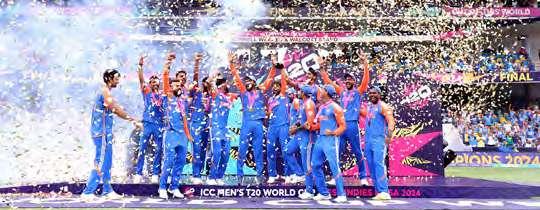
The captain of the Indian team was Rohit Sharma. He was also the highest run-scorer for India in the tournament.

Virat Kohli won the ‘Player of the Match’ award in the finals.


India beat South Africa in the finals.

Jasprit Bumrah won the ‘Player of the Tournament Award’.

Arshdeep Singh took the most wickets for India.
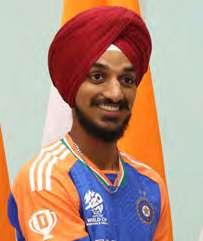
Teamwork and confidence helped India win this tournament.



1 Tick ( ) the correct options.

Scan this QR code to see the quiz.
a The 2024 ICC Men’s T20 World Cup was won by: i India ii USA
b The captain of the Indian team was: i Virat Kohli ii Rohit Sharma
c The best player of the tournament was: i Jasprit Bumrah ii Rohit Sharma
d The number of teams that participated in the tournament was: i 20 ii 12
2 Match the players and their achievements in the 2024 ICC Men’s T20 World Cup.
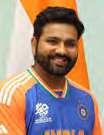
a Player of the Match in the finals

b Highest run-scorer for India

c Highest wicket-taker for India

d Player of the Tournament
Gadgets are machines that we use for different things. They help us do things easily. Let us learn more about them.

It helps us take colourful pictures. We can also record videos with it.
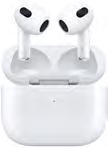
They can be connected to our phones. We use them by putting them in our ears. We can listen to music and answer phone calls with them.
We can connect a speaker to our phones or TVs and listen to music. Speakers can be of different size.


It shows the time, date and day. It can tell us the number of steps we walk in a day. We can also connect it to our phones to answer phone calls or to read messages.
It is like a small computer in our hand. We can use it to study, listen to music and read books.
It is one of the most used gadgets today. It is a machine which helps us do a lot of things. You can use it for calling, taking pictures and videos, learning new things and playing games.
We should use gadgets responsibly. We should use these gadgets with our parents.

Practice Time

Scan this QR code to see the quiz.
1 Match the pictures and the gadget names.
a tablet
b smartwatch

c smartphone d camera
e earbuds
2 Read the clues to find the super gadgets. Fill in the crossword.
ACROSS
1. You can wear me on your wrist.
2. I can connect to your phone and take calls.
DOWN
1. I can only take pictures and videos.
2. I come in different sizes and can play loud music.
3. You can carry me as a small computer.
New Delhi is the capital of India. It is a busy city. There are many interesting places to see here.
Every year, on Independence Day, the prime minister hoists the Indian National Flag at the Red Fort.

Qutb Minar is the tallest minaret in India.


The India Gate was built to remember the Indian soldiers who lost their lives in World War 1.

The Lotus Temple is built in the shape of a lotus.


The Rashtrapati Bhawan is the house of the president of India. It has the famous Amrit Udyan, which is a garden open to the public.


We should take care of the monuments when we visit them. We should not damage them or throw waste around.


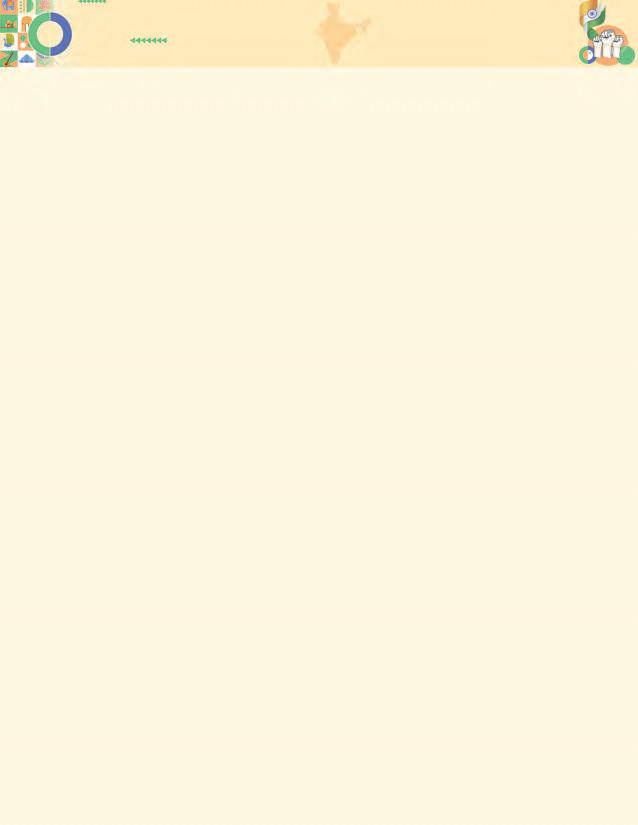
Scan this QR code to see the quiz.
1 Circle the landmarks located in New Delhi.

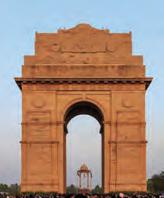




2 Read the sentences. Write the name of the correct monument.
a The tallest minaret in India.
b The house of the president of India.
c A flower-shaped temple.
d A monument built in memory of the Indian soldiers who died in World War 1.
e A fort where the Indian National Flag is hoisted on Independence Day.
Our body has different body parts that have different roles. Let us learn more about them.
We see the world with our eyes. People have eyes of different colours, like black, brown, blue, green and grey.
They help us bite and chew our food. Most adults have 32 teeth, while children have 20 teeth. Children’s teeth are called milk teeth.


We hear sounds around us with our ears. Our ears never sleep as we can hear sounds even when we are sleeping.
Our body is covered with skin. We can touch and feel with it. Our skin is the largest organ of our body.
We have two lungs. They help us to breathe. The right lung is bigger than the left lung.

The brain controls everything we do. It helps us think. An adult’s brain weighs around 1½ kilograms.
The heart sends the blood to the different parts of our body. The size of our heart is almost the size of our closed fist.
Our body parts help us stay healthy and active. It is important to take care of our bodies by eating well, exercising and getting enough rest.


Scan this QR code to see the quiz.
1 Read the text. Circle the correct body parts.
a The body part sends blood to different parts of our body.
b The body part that helps us breathe.
c The body part that helps us eat.
d The body part that controls everything we do.
2 Read the sentences and rearrange the letters to form the correct words.
a I help you think. (NABIR)
b I help you see the world. (SYEE)
c I am the largest organ of the human body. (INKS)
d I am a pair and the right part is bigger than the left. (GULNS)
National days are days that are celebrated by the whole country. We have three national days. Let us learn about them.
India got its freedom from the British on 15 August 1947. Every year, we celebrate this day as Independence Day. Every year, the prime minister of India hoists the national flag at the Red Fort in New Delhi. We sing the national anthem.
We celebrate Republic Day on 26 January every year. On this day, in 1950, India started following the Constitution. The Constitution of India is a set of laws for the nation.
Every year, the president of India hoists the national flag at India Gate, New Delhi. A parade is also held at Kartavya Path road.

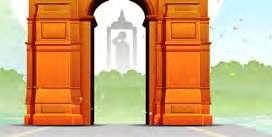
2 October is the birth date of Mahatma Gandhi. It is celebrated every year as Gandhi Jayanti. He was a leader who helped us get freedom from the British.

Our national days are very important for our country. We should always celebrate them with pride.

Practice Time

Scan this QR code to see the quiz.
1 Match the national days and the correct dates.
a Gandhi Jayanti 15 August
b Republic Day 2 October
c Independence Day 26 January
a On this day, the prime minister hoists the Indian national flag at the Red Fort.
b On this day, the president of India hoists the National Flag at India Gate.
c This day is celebrated on Mahatma Gandhi’s birth date.
3 Look at the picture and name the person.

The world has many amazing buildings, towers and statues. Let us learn about some of them.
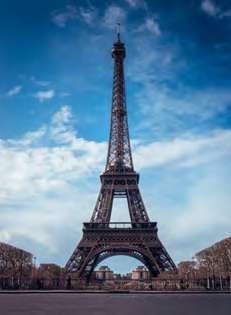
It is located in Paris, France. It has 3 levels made of strong iron.

It is a famous statue in Egypt. It is almost 4600 years old.

It is located in Italy. This tower leans to one side. It has eight floors.

It is located in New York, in the United States of America. It is around 150 years old.
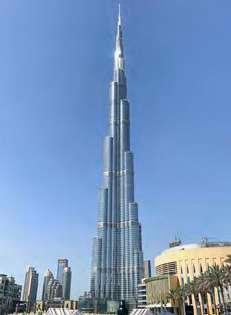
It is located in Dubai. It is the tallest building in the world. It has 163 floors.

It is a famous clock tower in London in the United Kingdom. It rings every hour.
Do you know any famous towers and statues located in India? Use the internet to find the names of any three.



Scan this QR code to see the quiz.
1 Match the landmarks and their locations.
a Burj Khalifa Paris
b Statue of Liberty Dubai
c Eiffel Tower Italy
d Sphinx of Giza New York
e Leaning Tower of Pisa Egypt
2 Name this monument. Then, colour it in.










Money is important in our daily lives. We should know how to use it properly.
































































We have to work to earn money. The money that we get by working is called our income. People do different types of work to earn money.






When we buy things, we have to pay for them with money. This is how we spend the money that we earn or get.


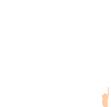


















We should keep some money aside and not spend it all. This is called saving money.
Spending wisely means using our money smartly. We should first spend money on things that we need to live. We should not just spend our money on things that we want for fun.
It is important to spend money wisely. The money that we save can help us in bad times.


Scan this QR code to see the quiz.
1 Fill in the blanks using the help box. wisely saving food income
a The money that we get by working is called our .
b Keeping money aside and not spending it is called money.
c We should spend money .
d We need things like a house, clothes and to live.
2 Read the sentences. Write ‘yes’ if the person is spending their money wisely and ‘no’ if they are not.

a Sana bought a that she needs for school.
b Rohan bought four on Saturday and then bought four more on Sunday.
c Karan bought a new pair of because his old ones were worn out.
d Manya buys and every day.
e Asha bought a new because her old one was dirty.
11. Indoor-Outdoor Games
1. a. I b. O c. O d. I e. O f. I
2. a. Cricket b. Badminton c. Ludo d. Carrom
3. a. Ludo b. Carrom


c. Badminton d. Cricket
12. Food and Hygiene
1.
X




2. Across
1. SMARTWATCH 2. EARBUDS
Down
1. CAMERA 2. SPEAKER 3. TABLET
16. The National Capital
13. Disney World
1. a. Cinderella b. Elsa c. Mickey Mouse
d. Donald Duck
2. a. ALADDIN b. MICKEY MOUSE
c. ELSA d. DONALD DUCK
e. CINDERELLA f. MINNIE MOUSE
14. ICC Men’s T20 World Cup, 2024
1. a. (i) India b. (ii) Rohit Sharma
c. (i) Jasprit Bumrah d. (i) 20
2. a. Highest run-scorer for India
b. Highest wicket-taker for India
c. Player of the tournament
d. Player of the Match in the finals
15. Super Gadgets
1. a. camera b. earbuds c. tablet
d. smartwatch e. smartphone


1. a. b. c.

Qutb Minar Taj Mahal Lotus Temple

India Gate

d. e. f.

Gateway of India Rashtrapati Bhawan
2. a. Qutb Minar
b. Rashtrapati Bhawan c. Lotus Temple
d. India Gate e. Red Fort
17. My Body Parts
1. a. b.
c. d.
2. a. BRAIN b. EYES c. SKIN d. LUNGS
18. National Days
1. a. 2 October b. 26 January c. 15 August
2. a. Independence Day b. Republic Day
c. Gandhi Jayanti
3. Mahatma Gandhi
19. World Tour
1. a. Dubai b. New York c. Paris
d. Egypt e. Italy
2. Sphinx of Giza
20. Spending Wisely
1. a. income b. saving c. wisely d. food
2. a. yes b. no c. yes d. no e. yes

Introducing WISDOM, a 21st-century product for the learners of grades 1 and 2. It includes all curricular areas—English, Mathematics, Environmental Science and General Knowledge. WISDOM is aligned with the NEP 2020 in terms of its design principles, and fulfils all recommendations of the NCF 2022.
Product Package
• Semester Books
• Uolo App
• Teacher Guide
• Focus on HOTS and Critical Thinking: Intellectually stimulating questions designed to encourage deep, analytical, critical and evaluative thought processes
• Digital Aids: Animated talking books, interactive quizzes for additional practice and curated learning videos
• Experiential and Applicative Learning: Projects and activities designed for real-life settings, like lab activities and community projects, to enable the development and practice of life skills
• Rootedness to India: Examples from India’s unique culture and history, linked to each topic, to inculcate a sense of pride and love for the nation
• Model Assessments: Test papers designed to evaluate the understanding of core concepts and the application of skills
Uolo partners with K-12 schools to provide technology-enabled learning programs. We believe that pedagogy and technology must come together to deliver scalable learning experiences that generate measurable outcomes. Uolo is trusted by over 15,000+ schools across India, Southeast Asia and the Middle East.
ISBN 978-81-980824-5-9
